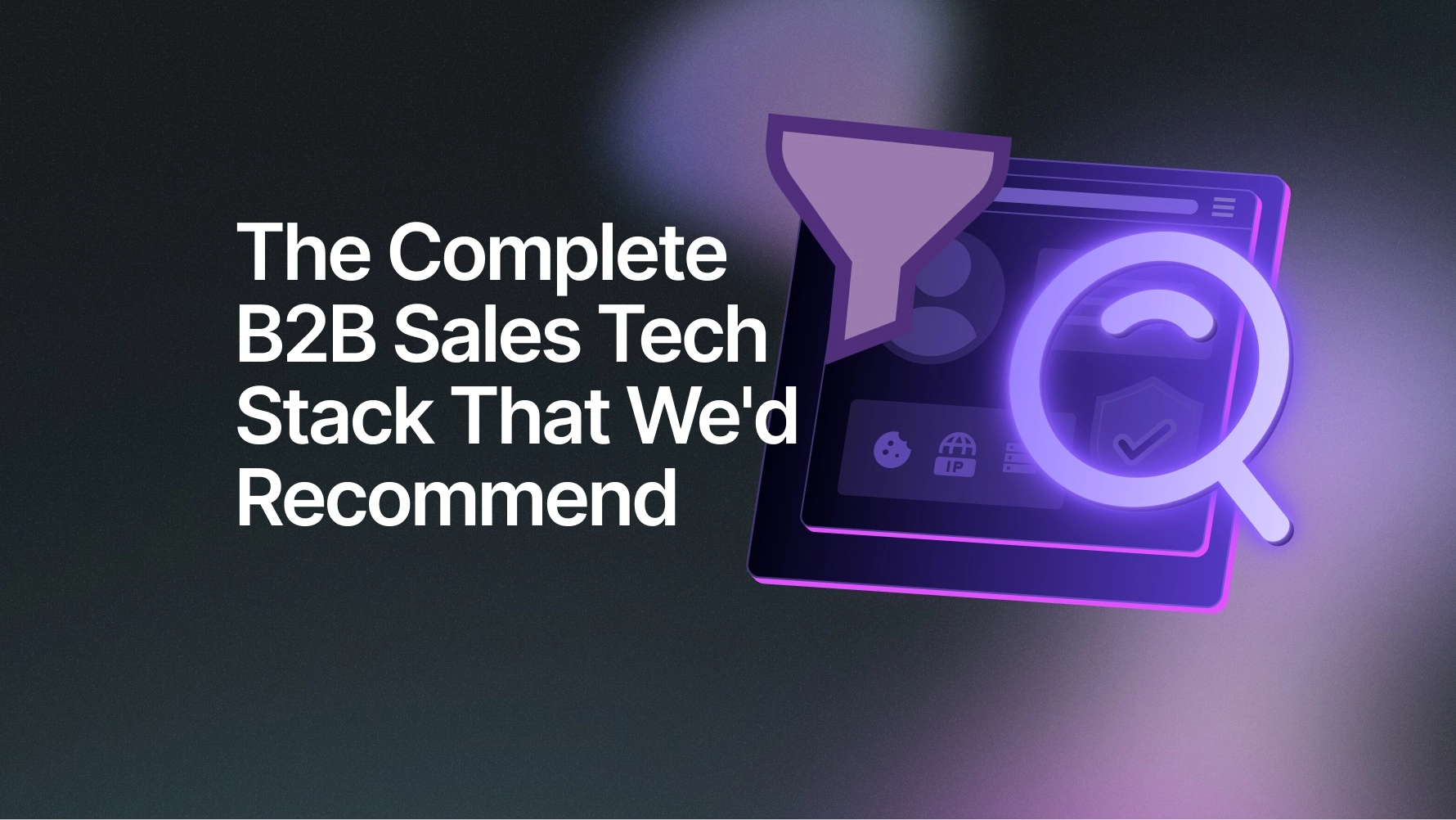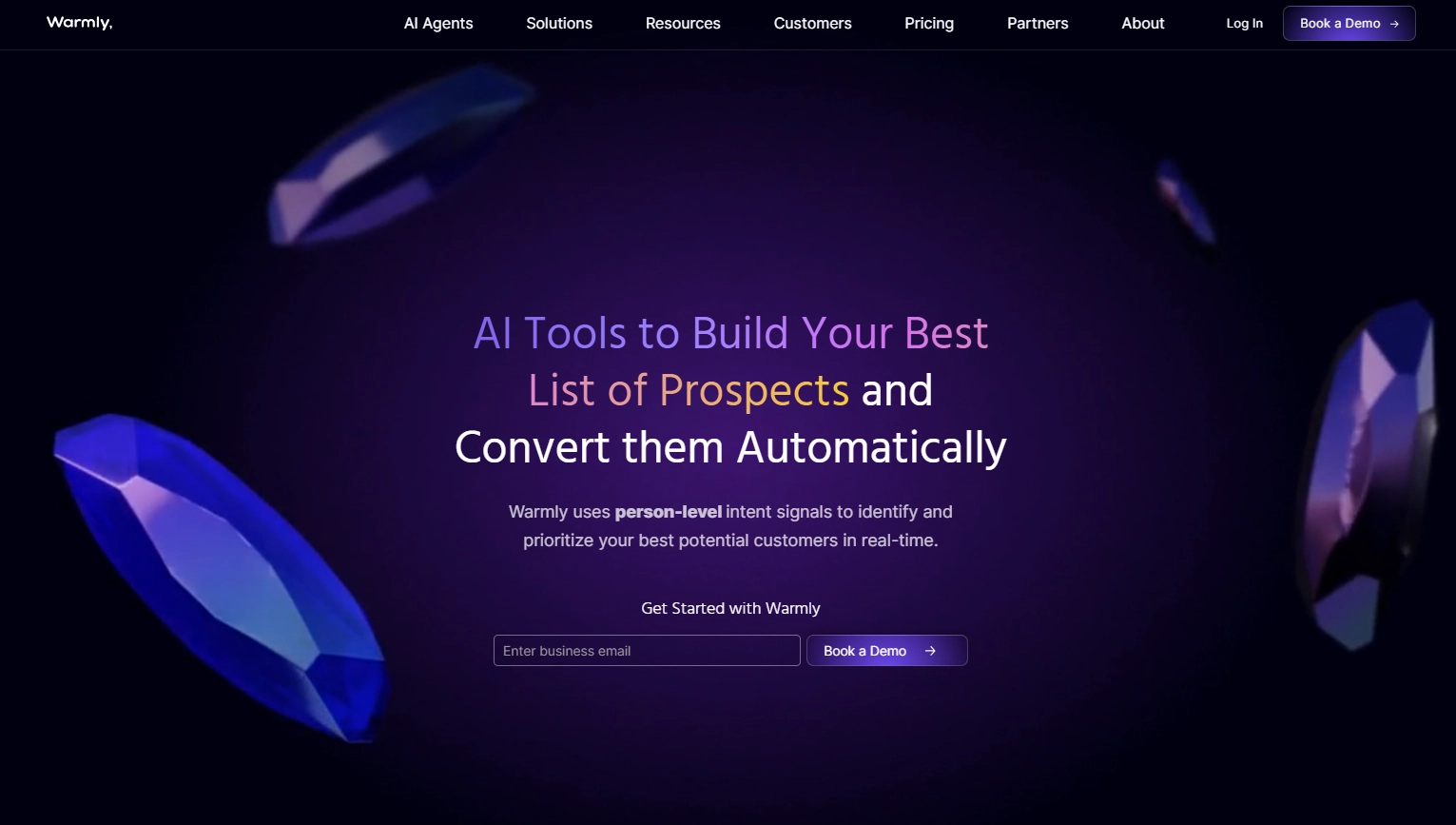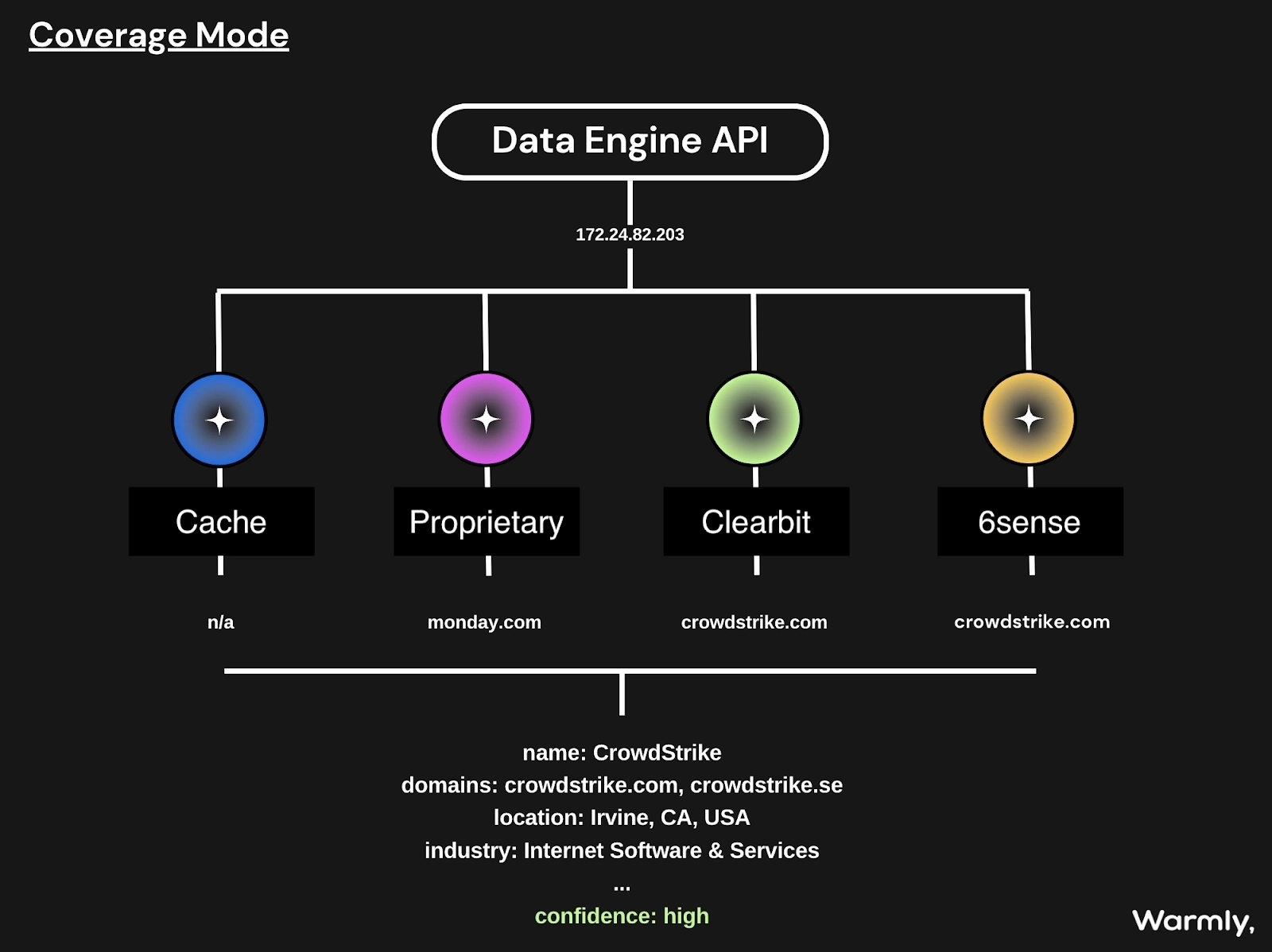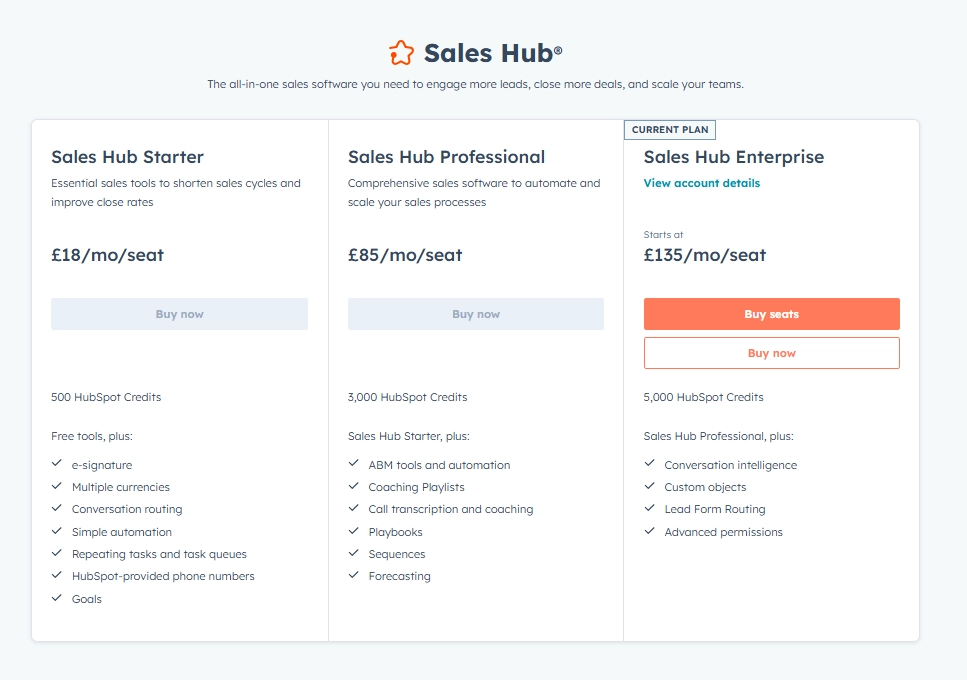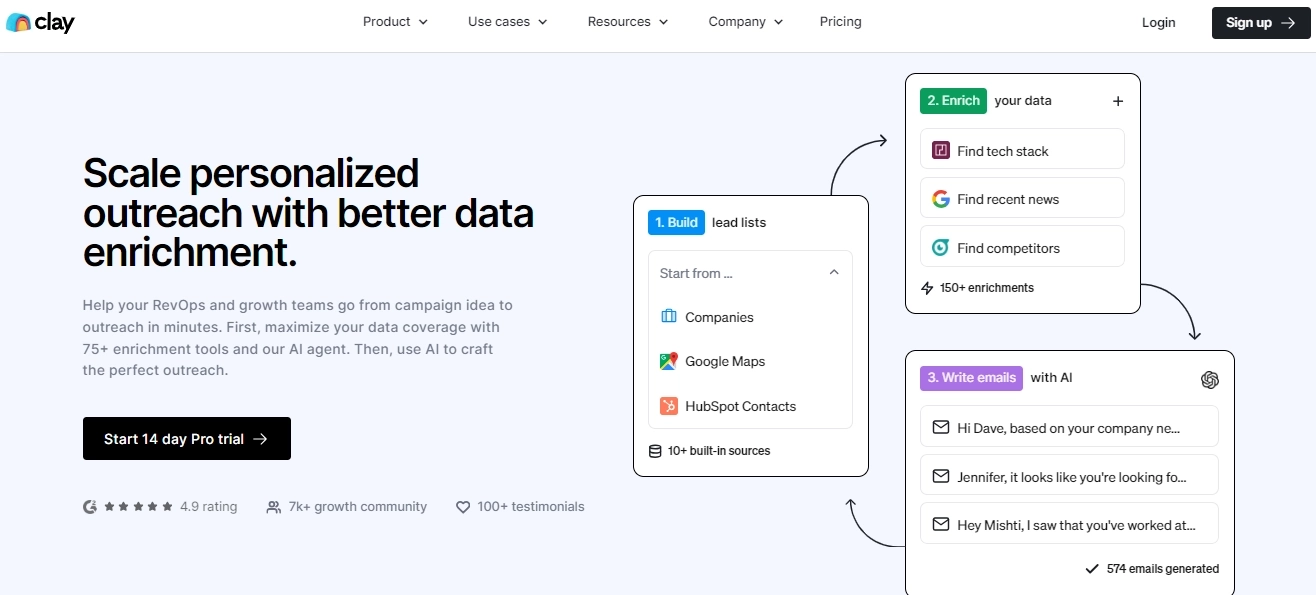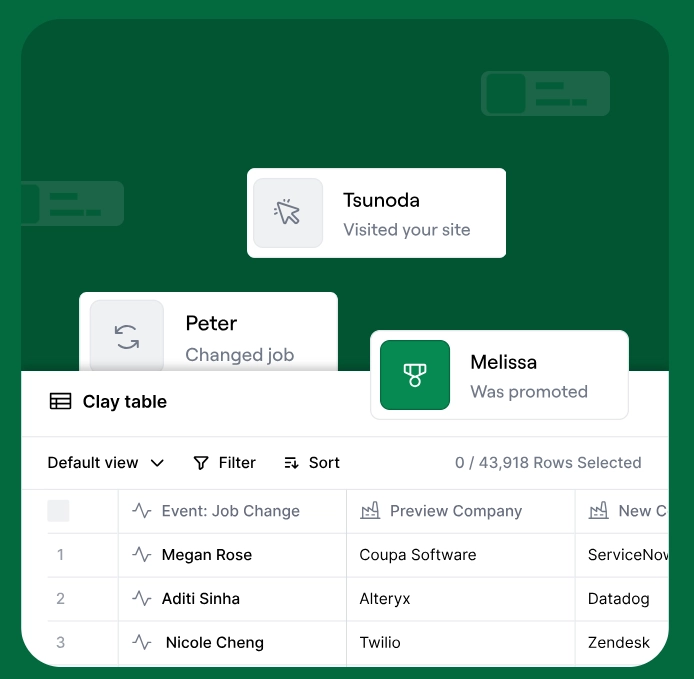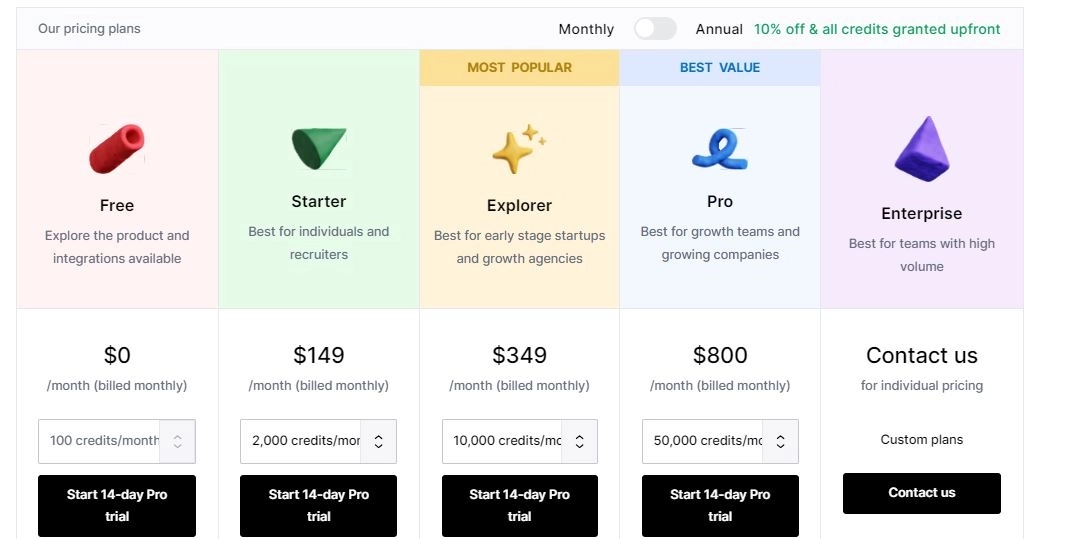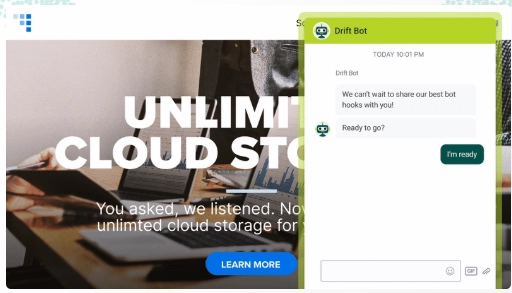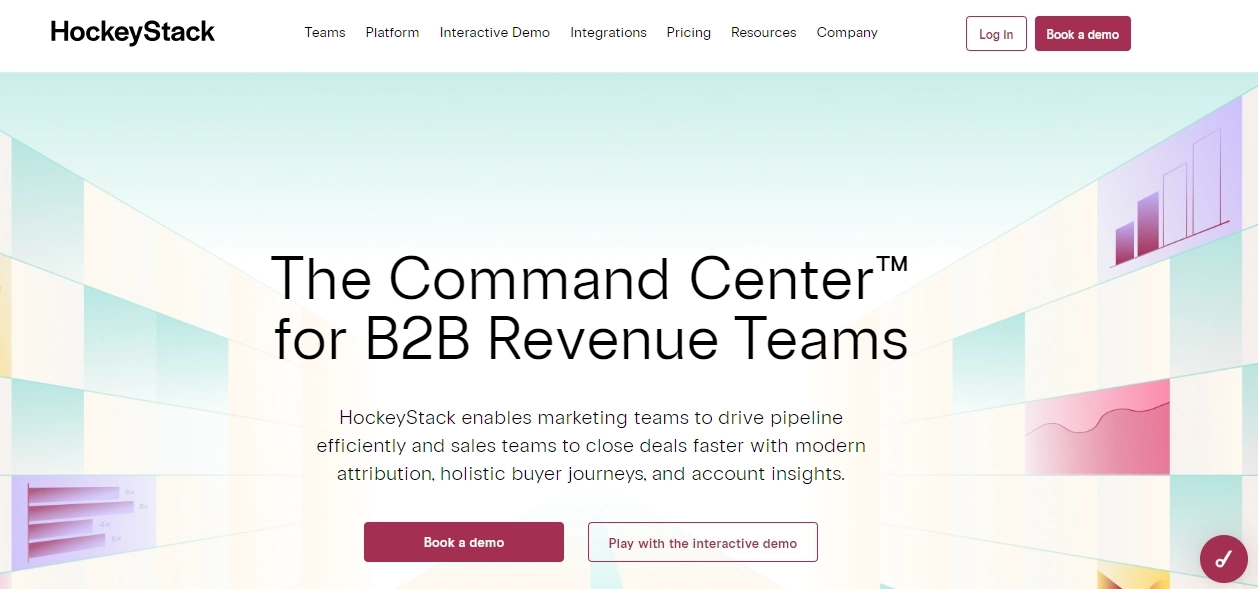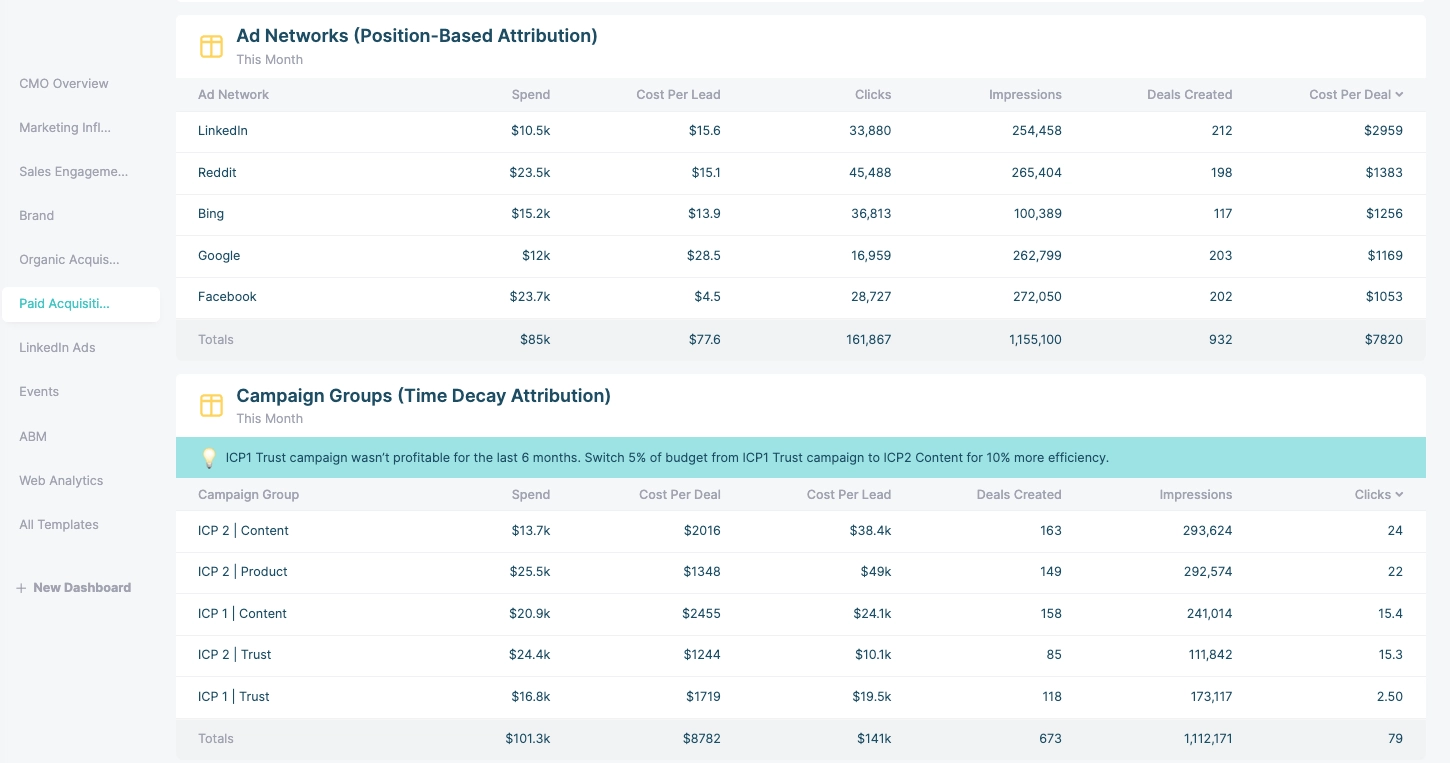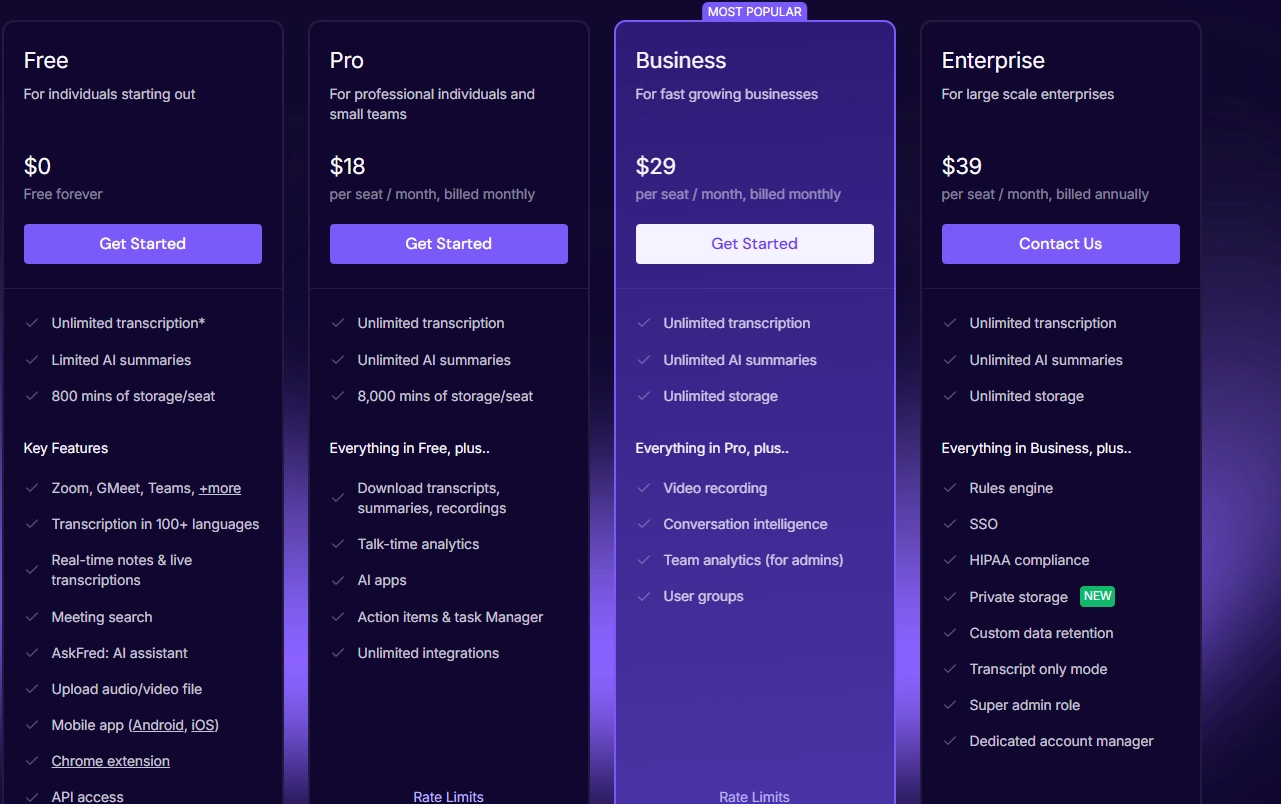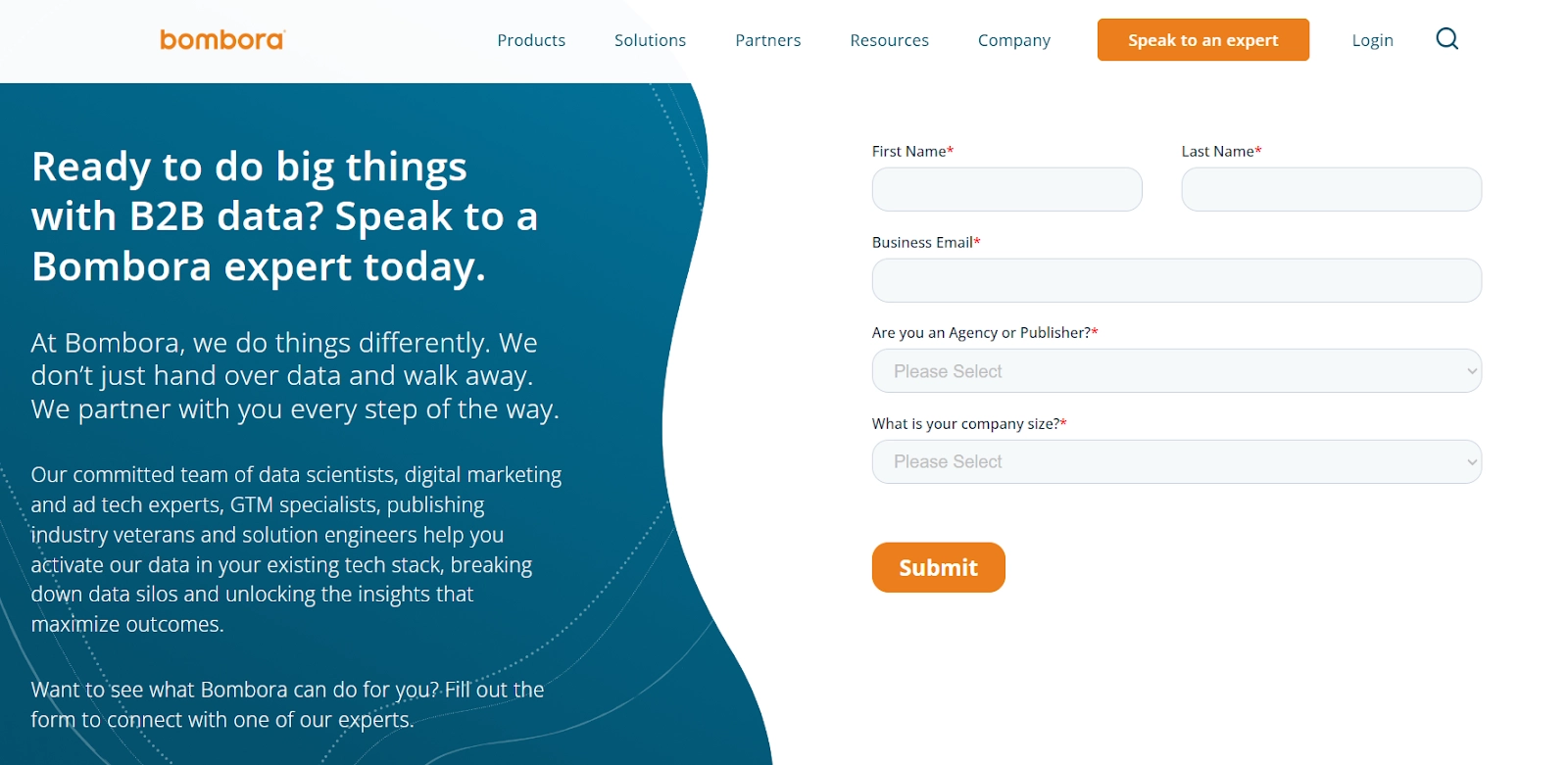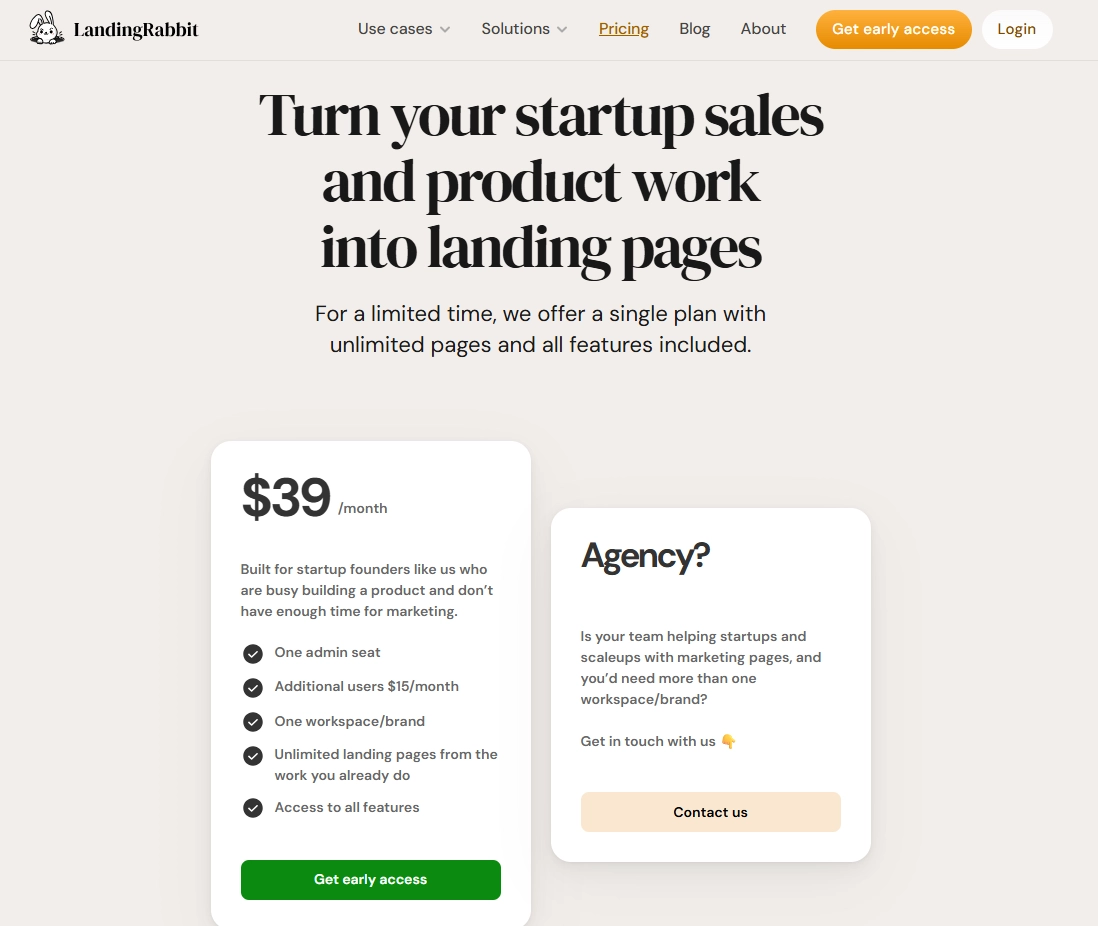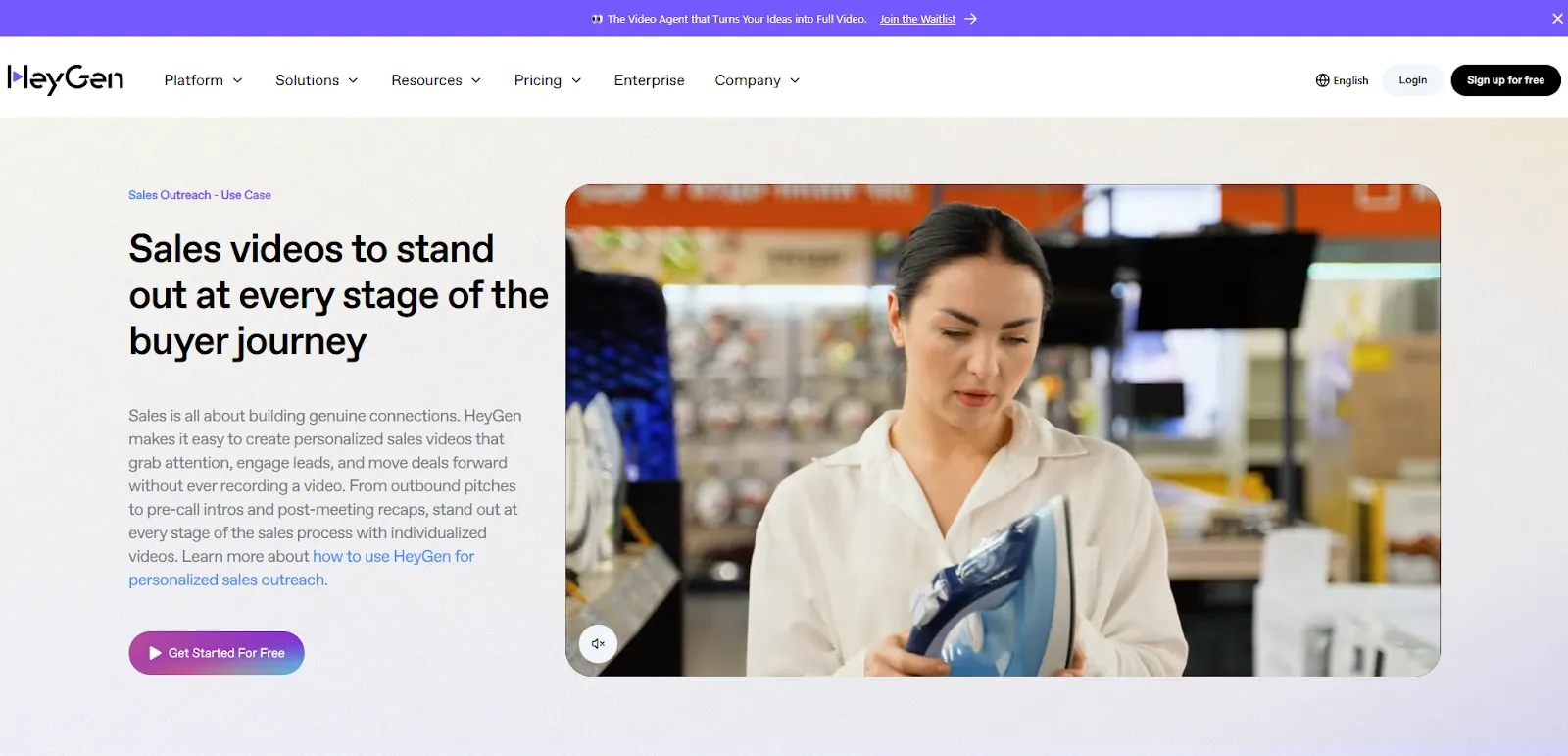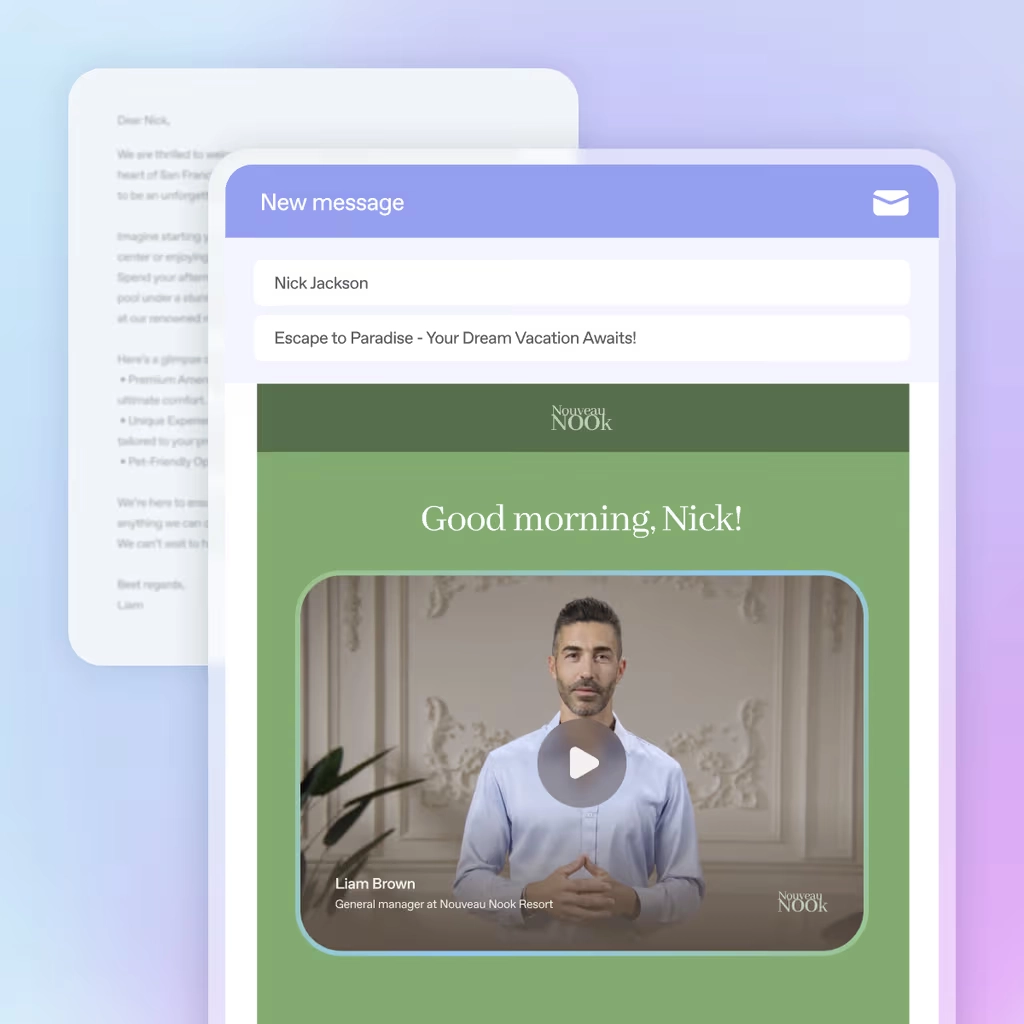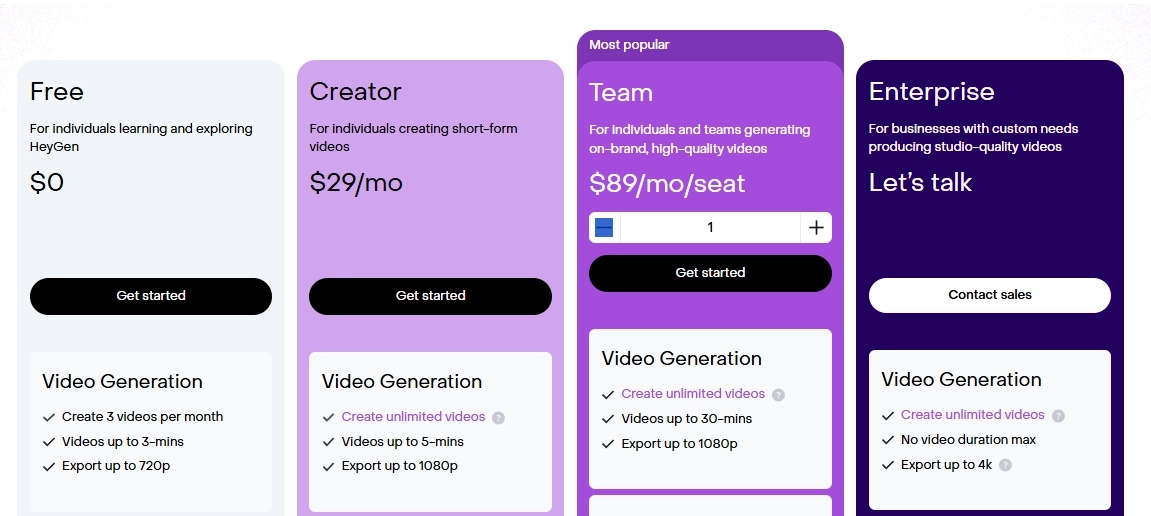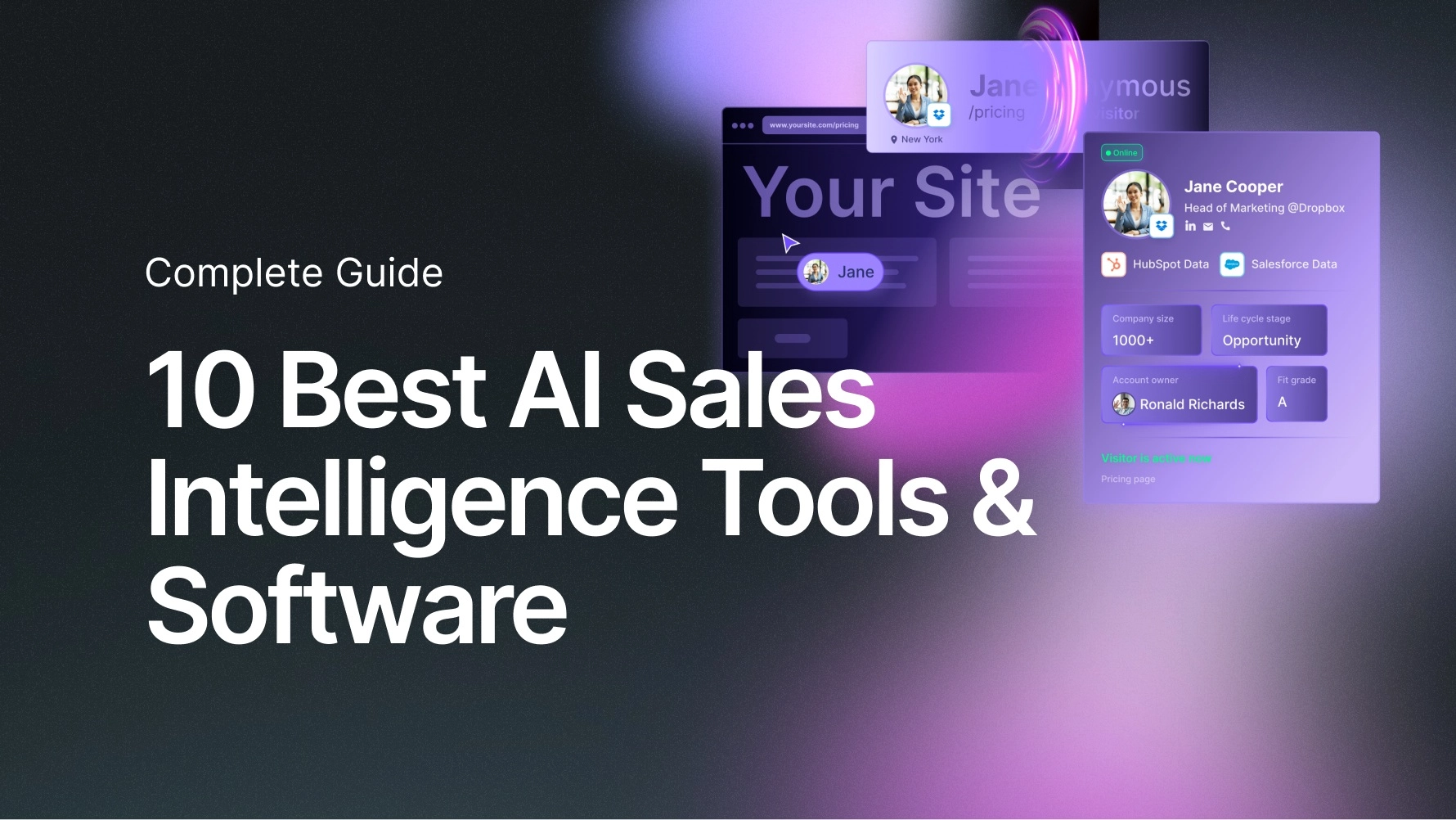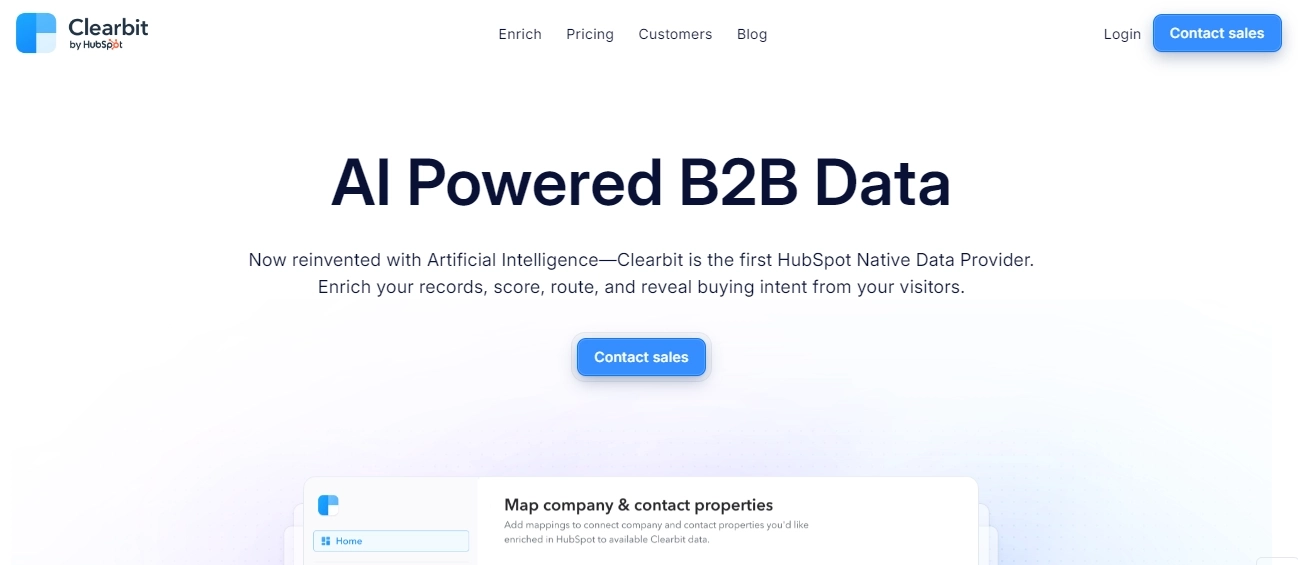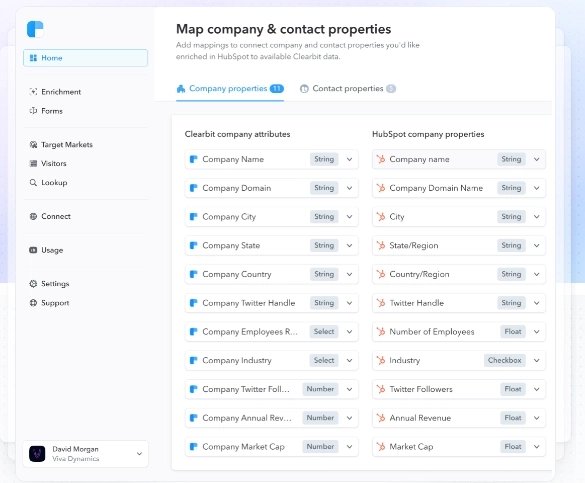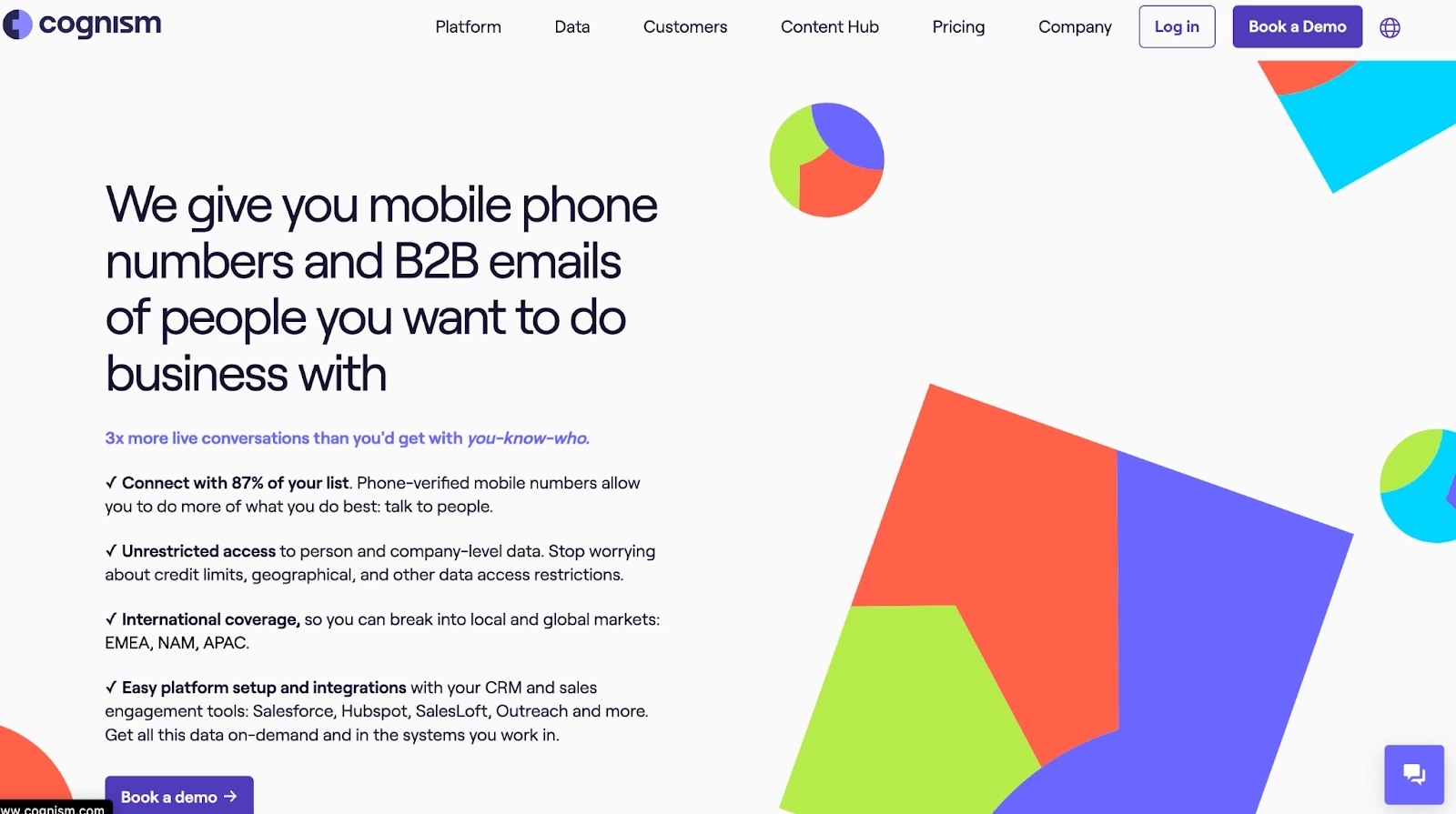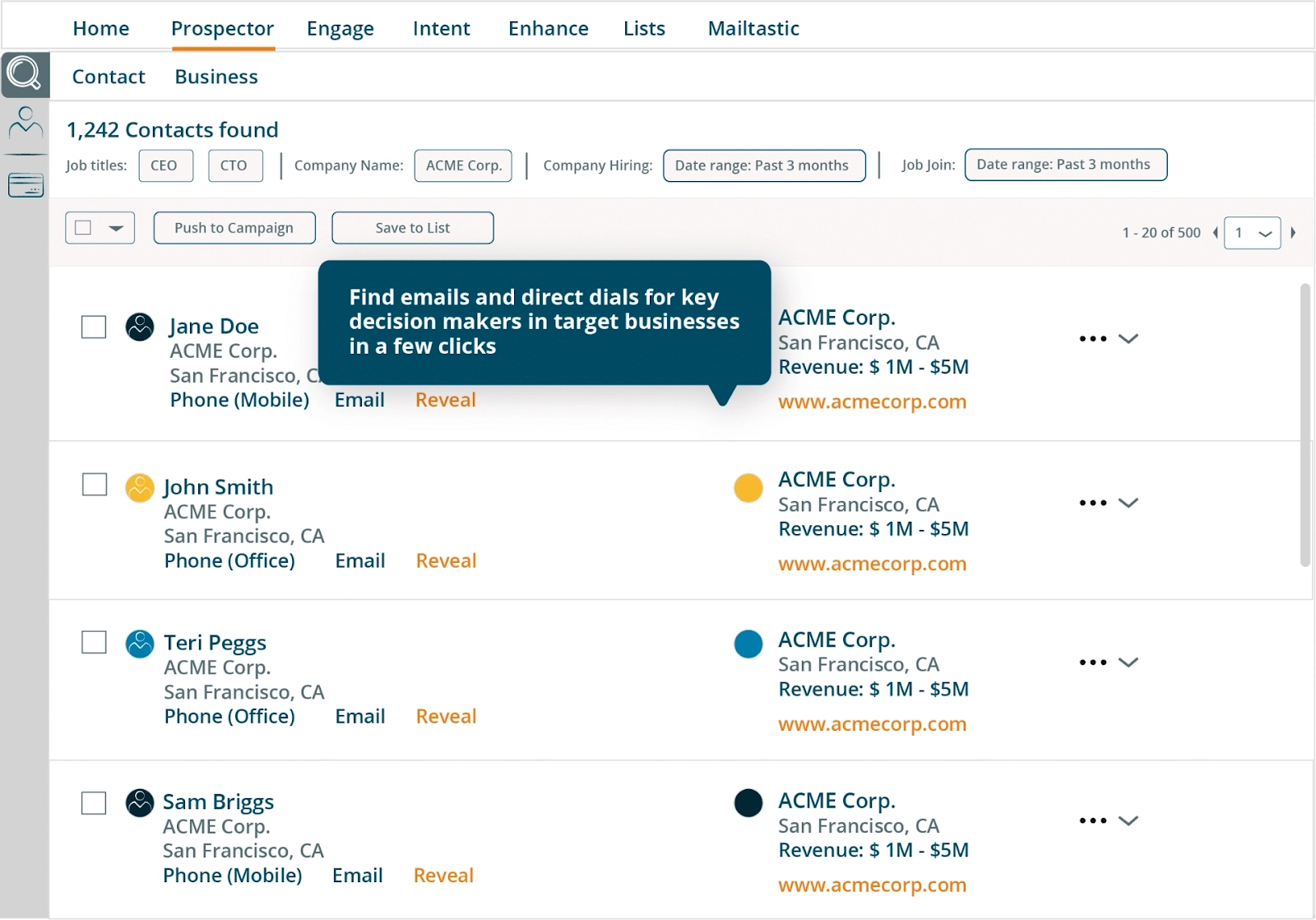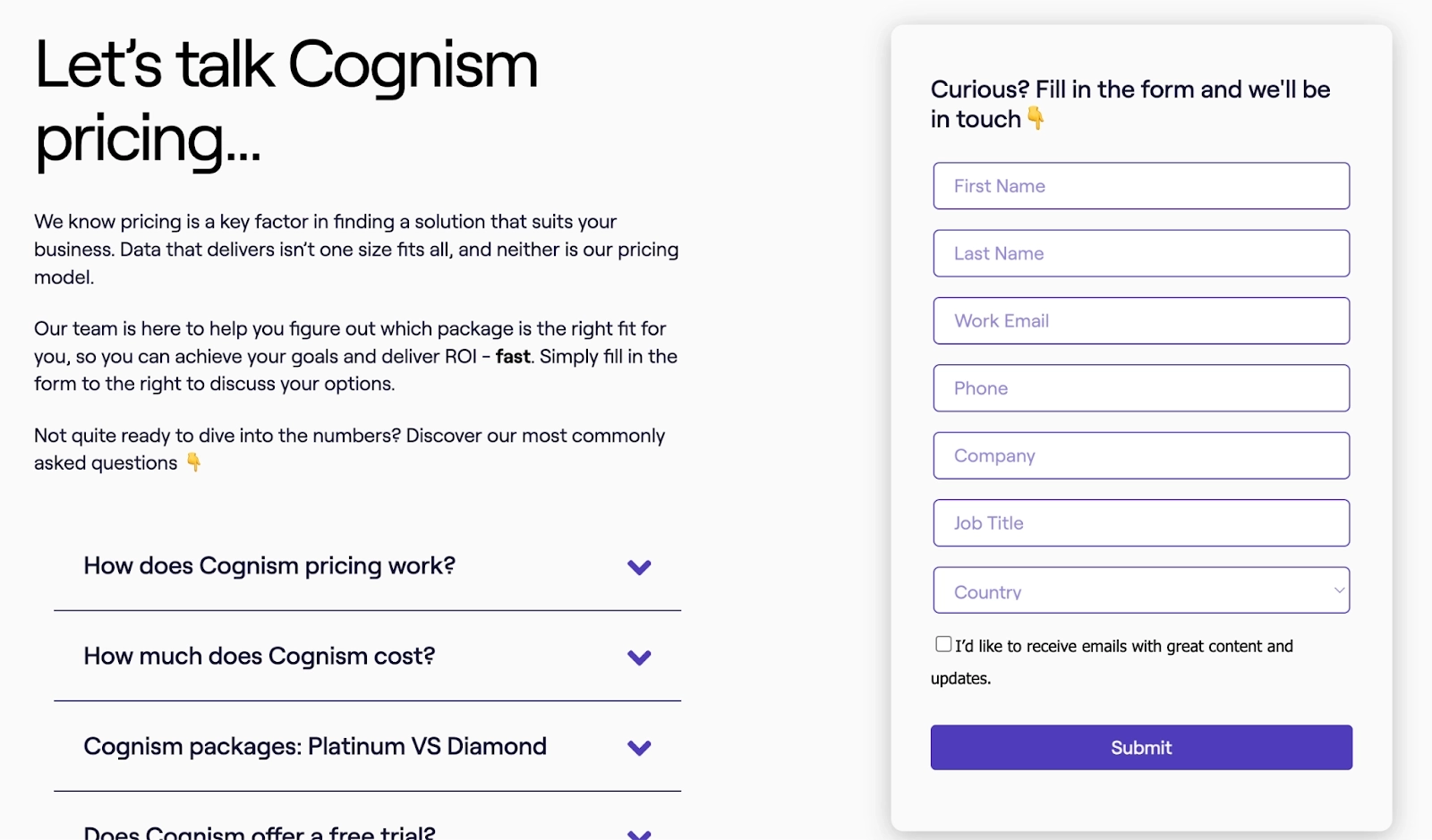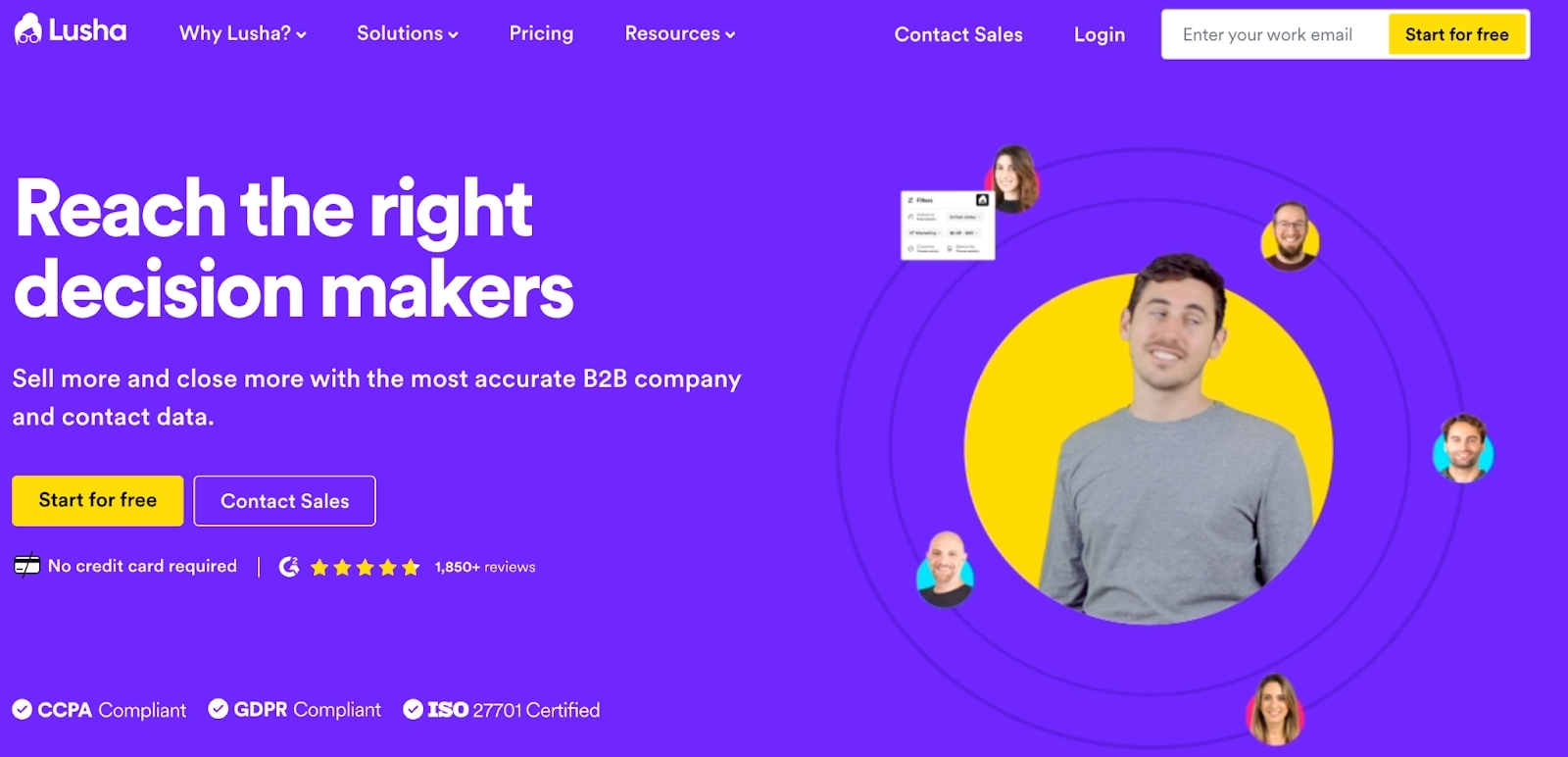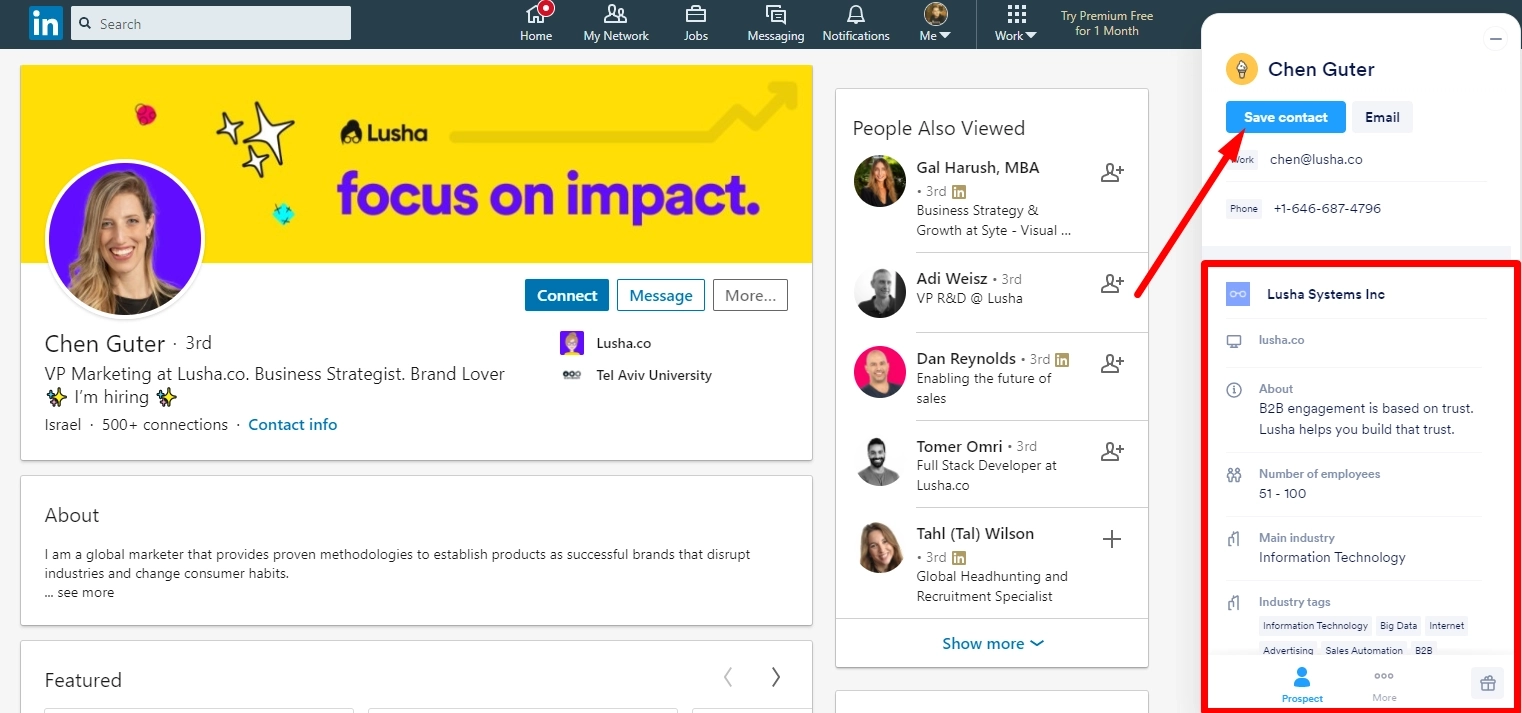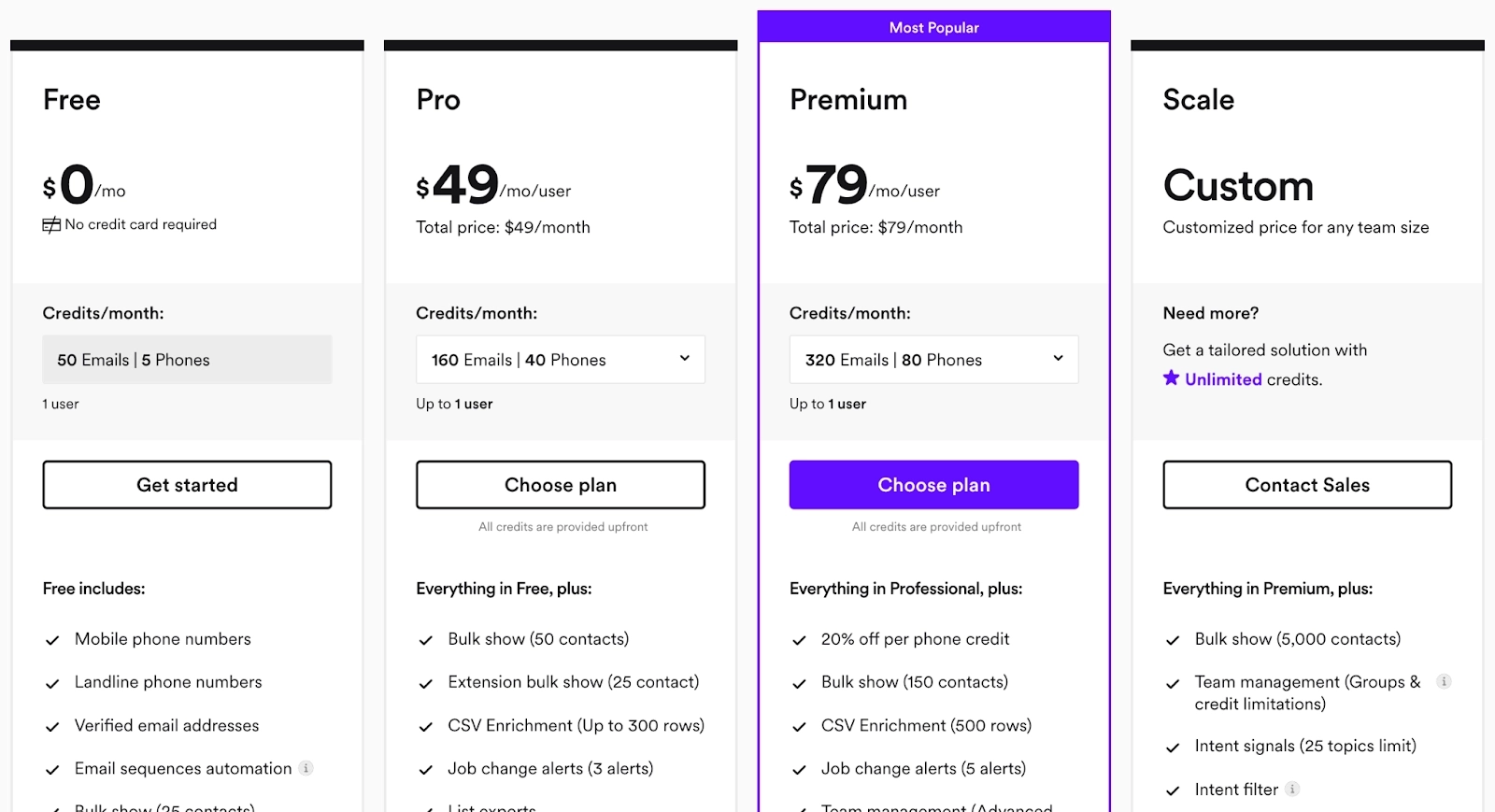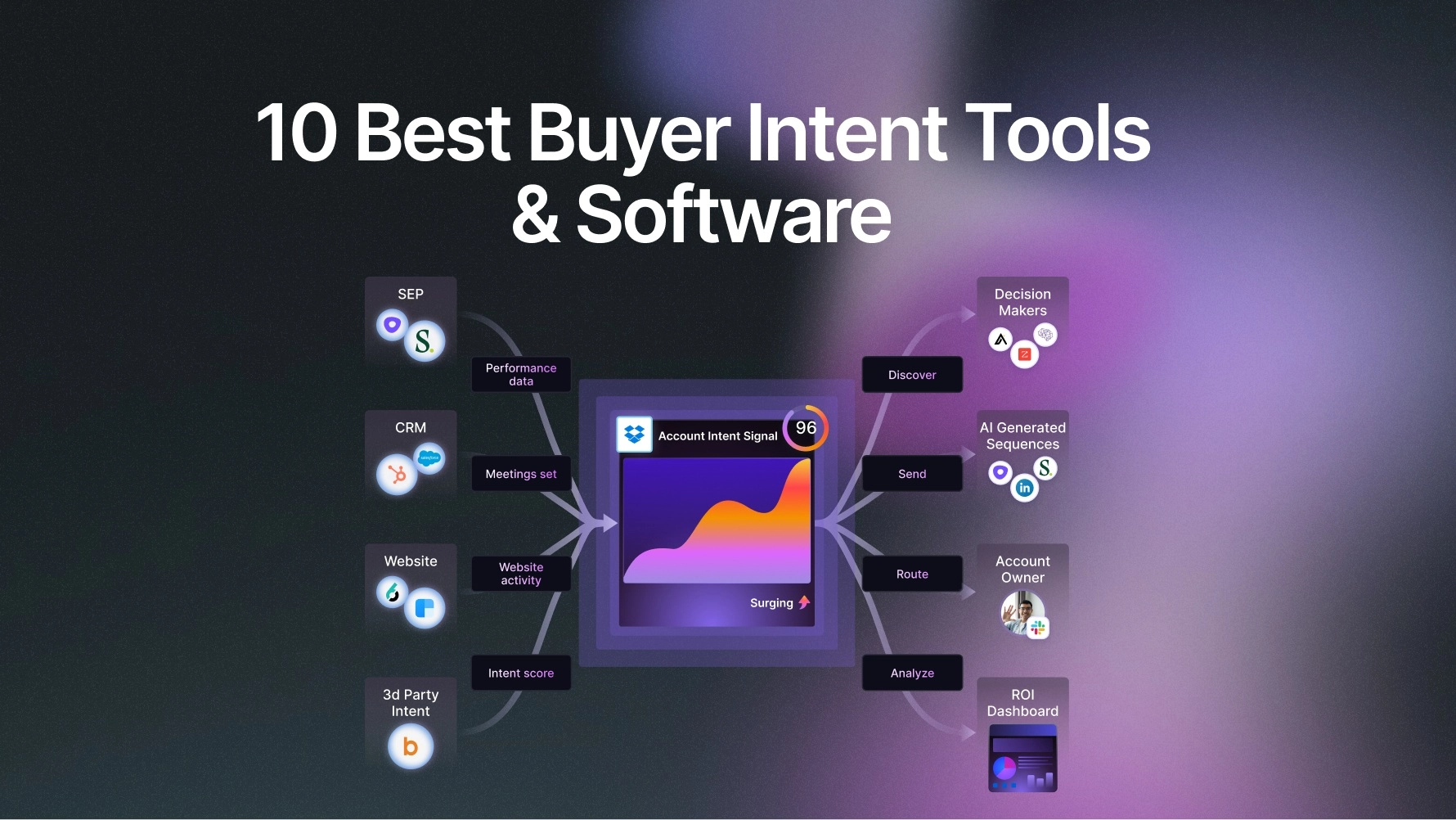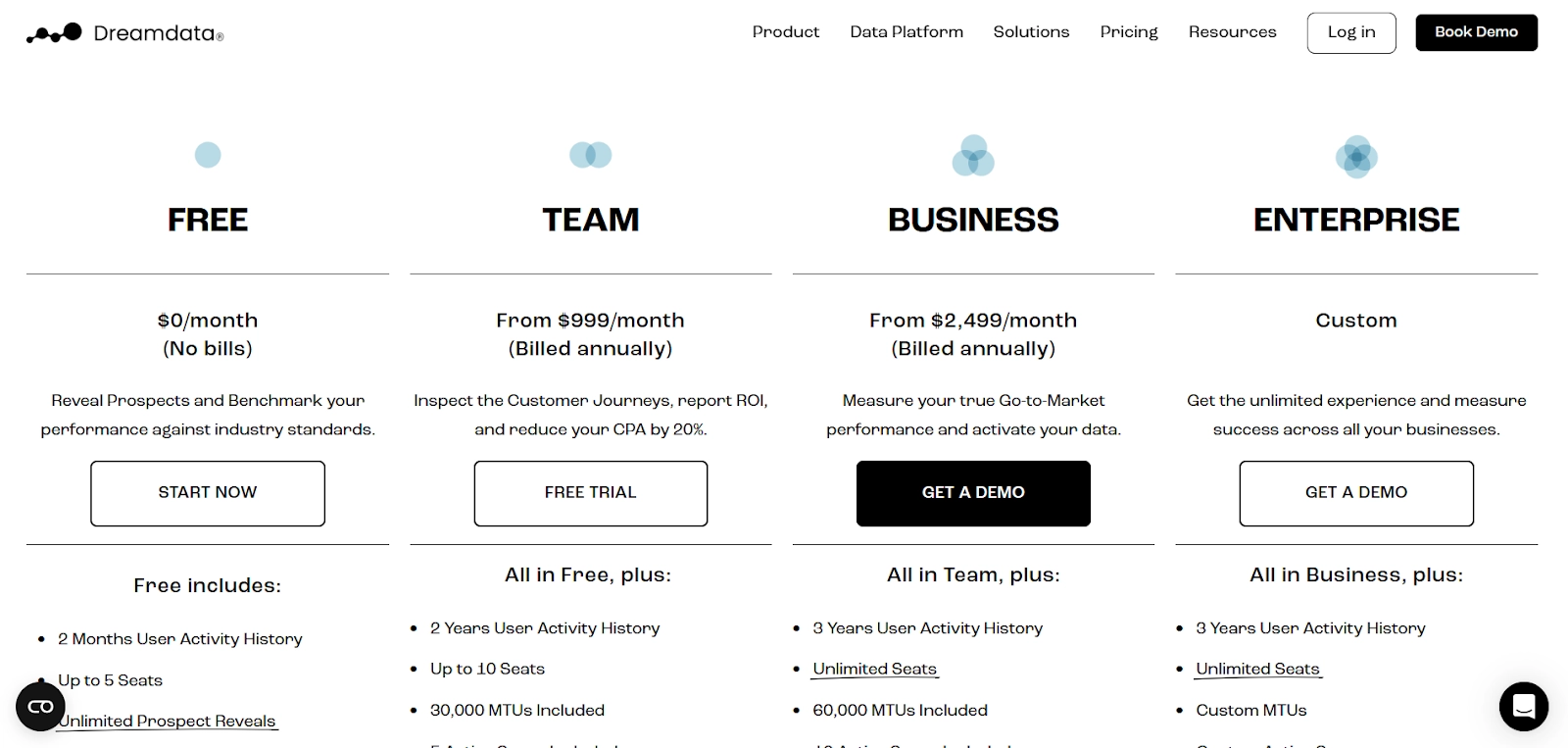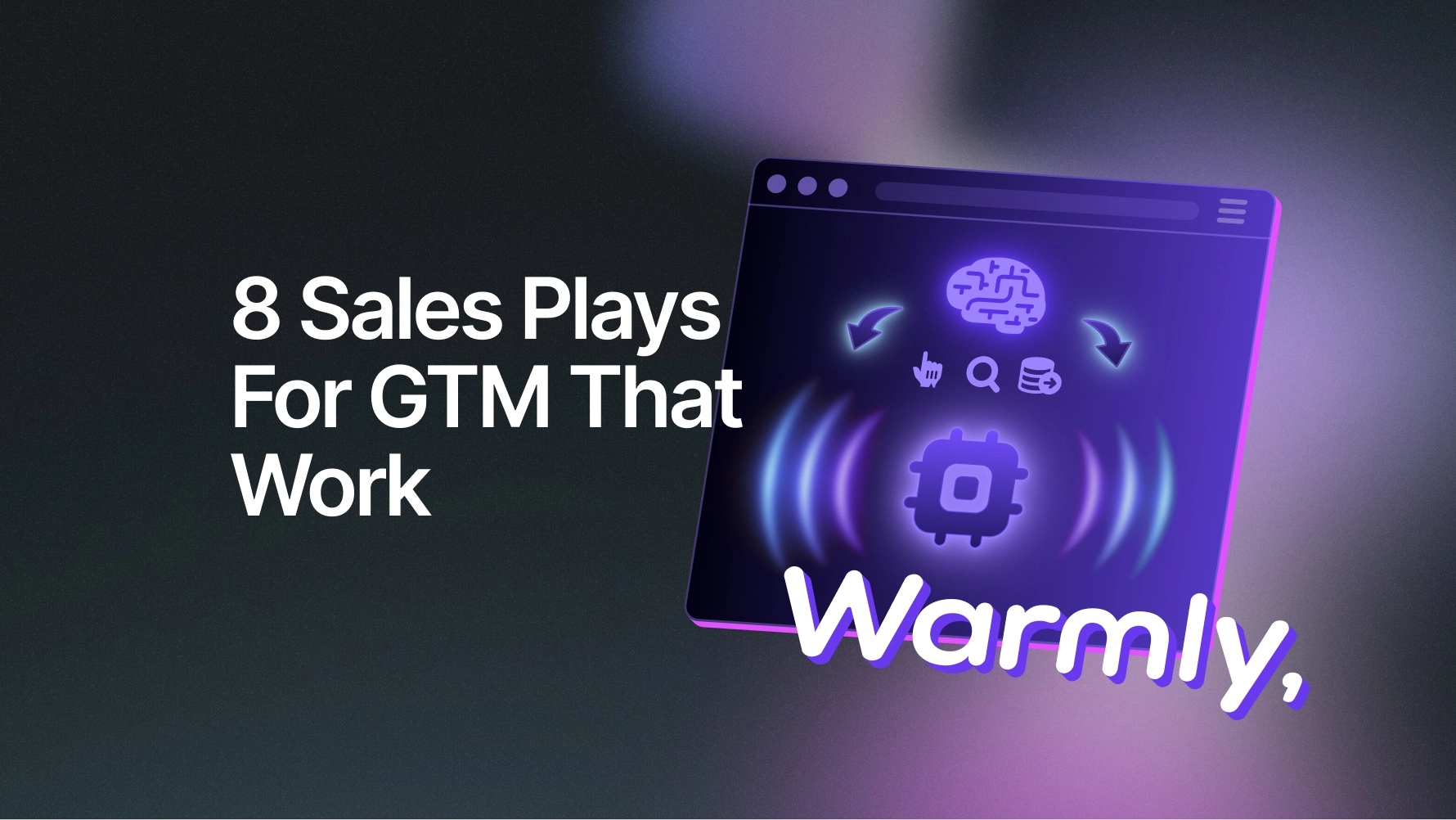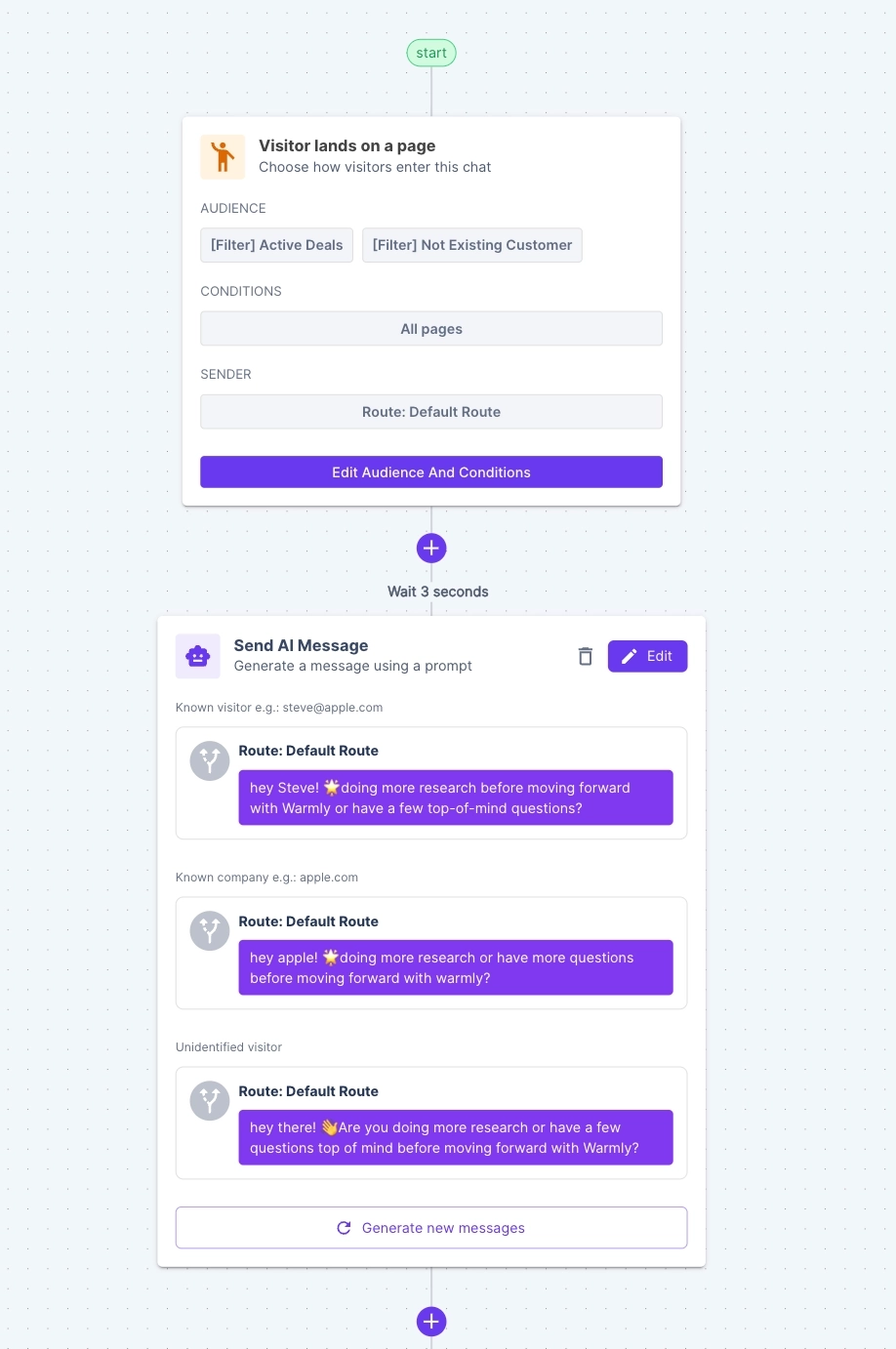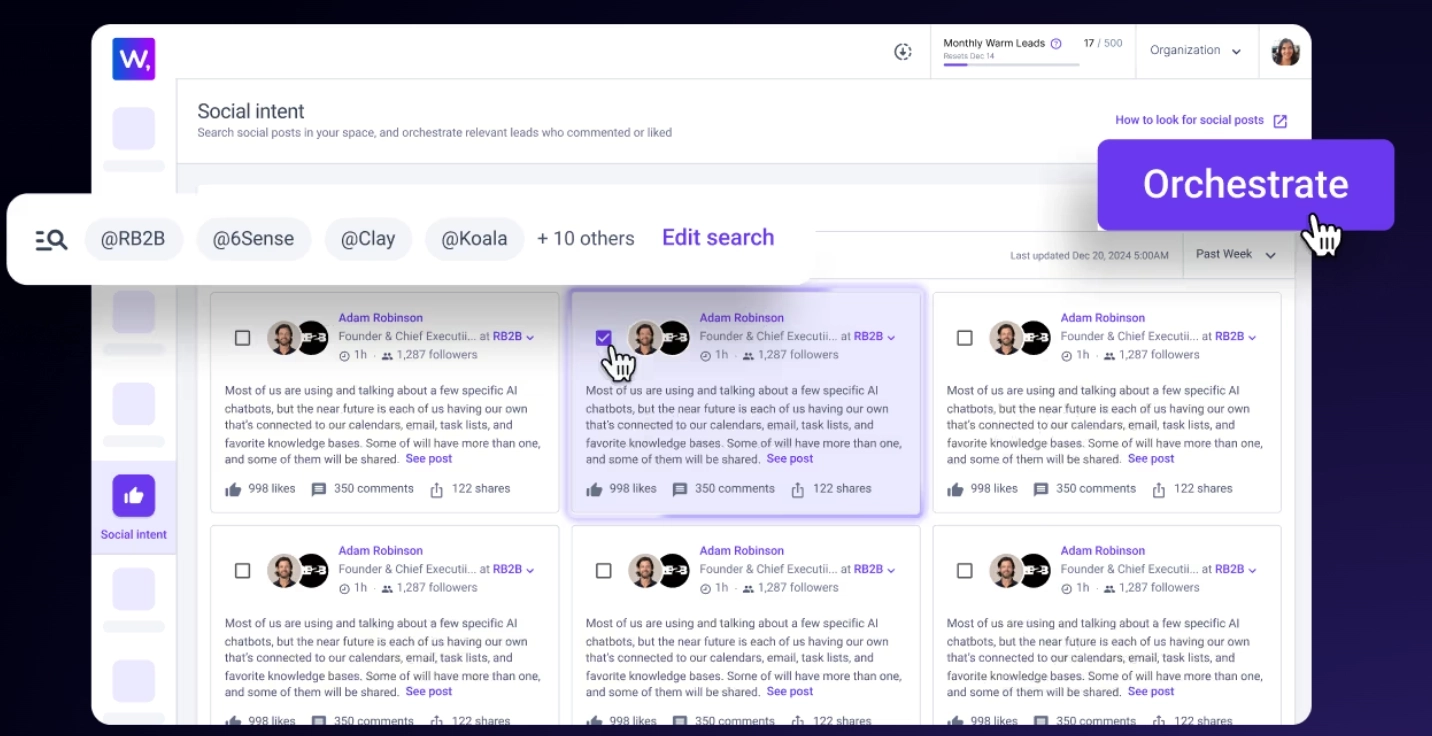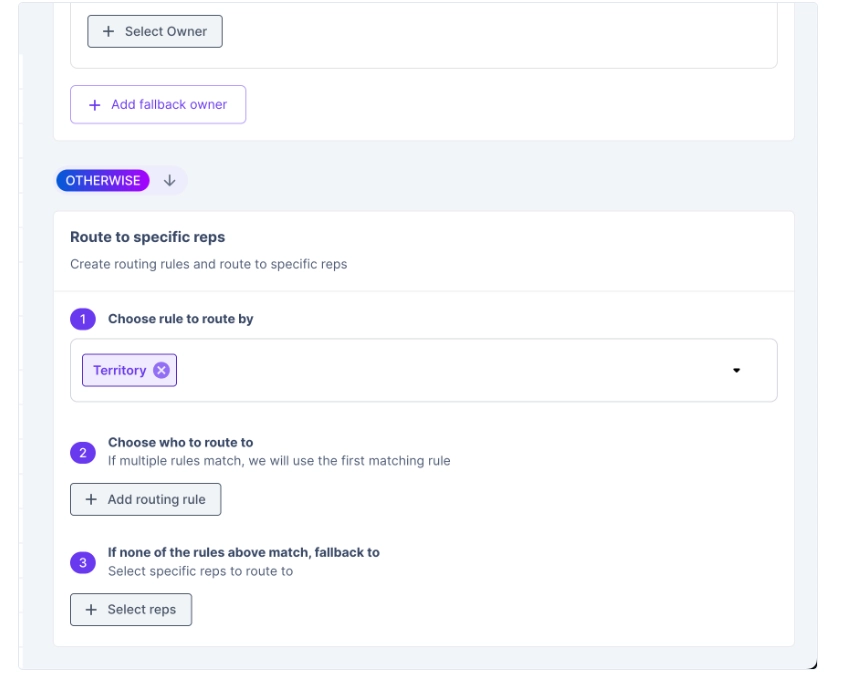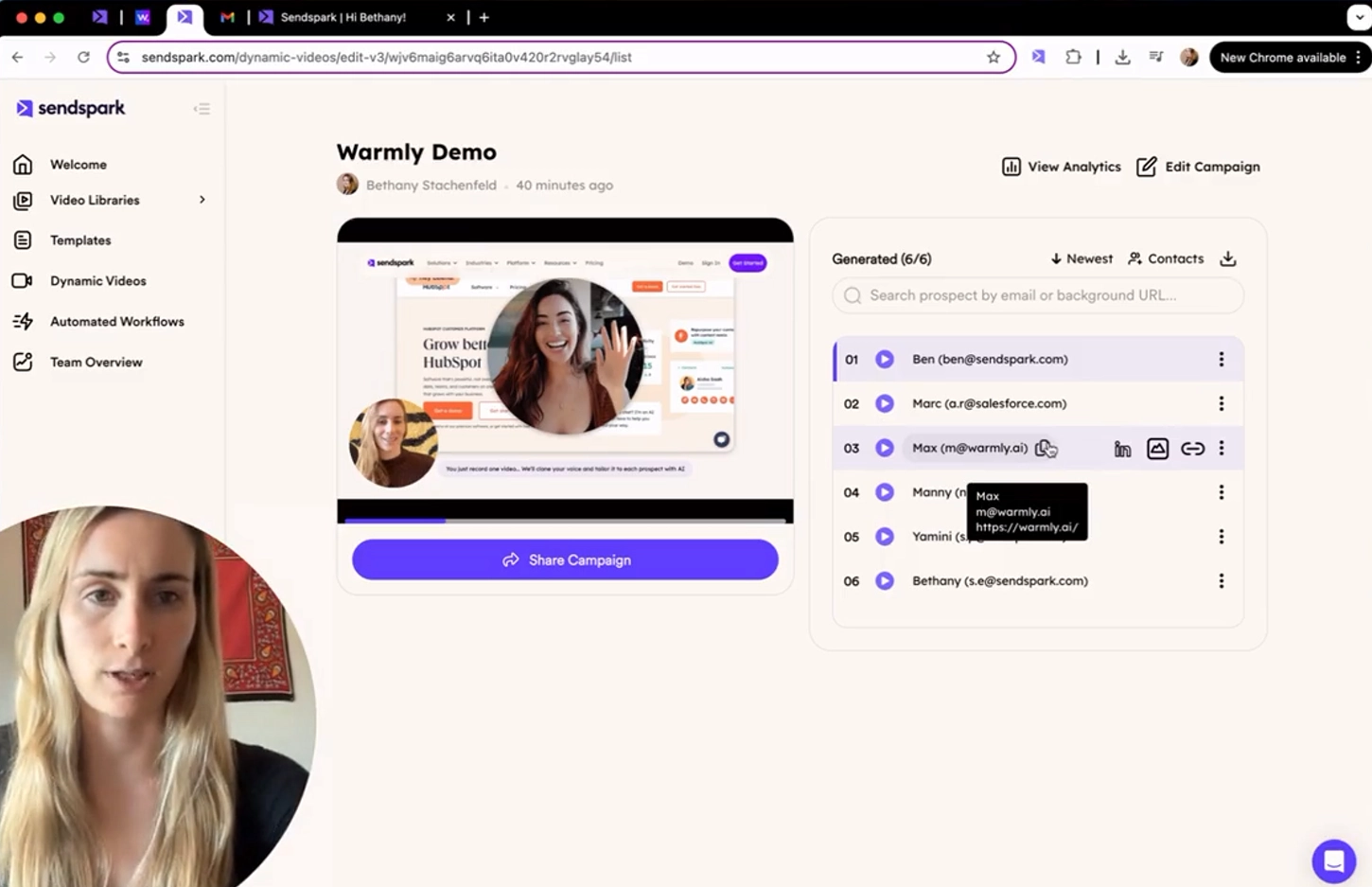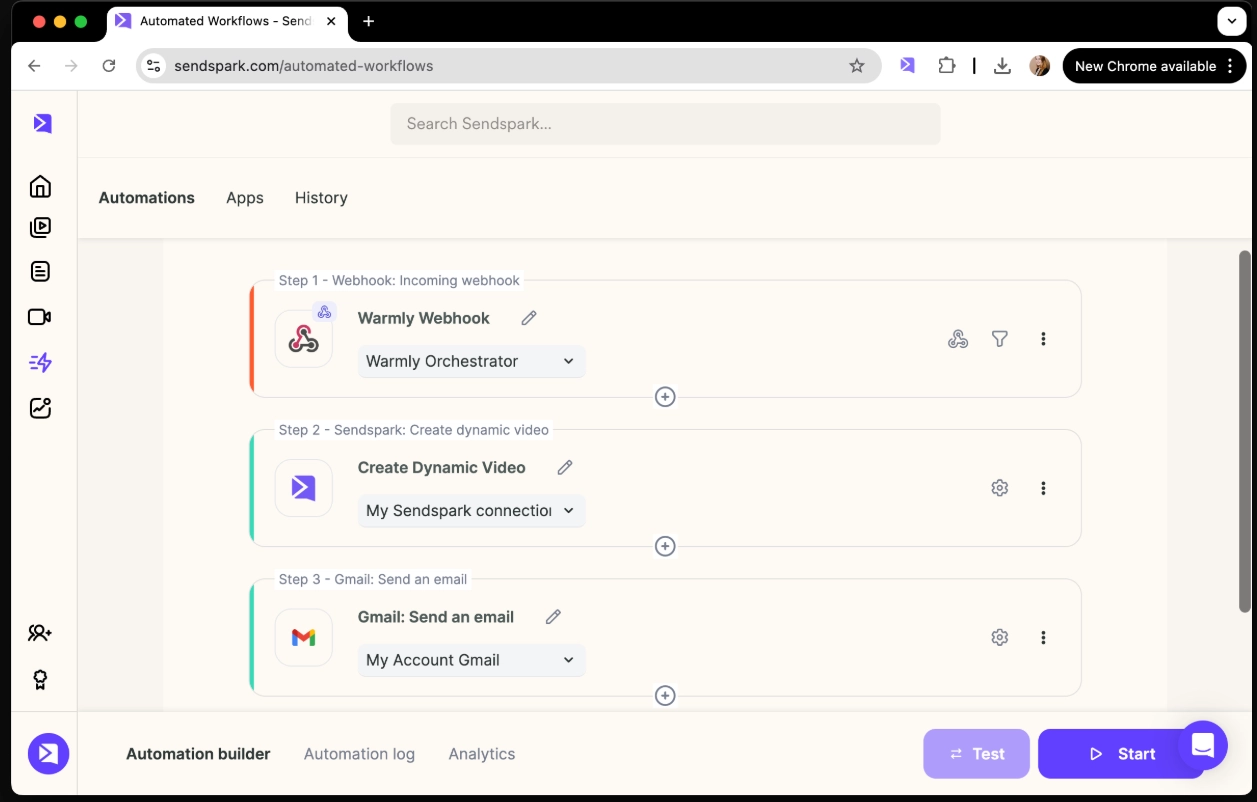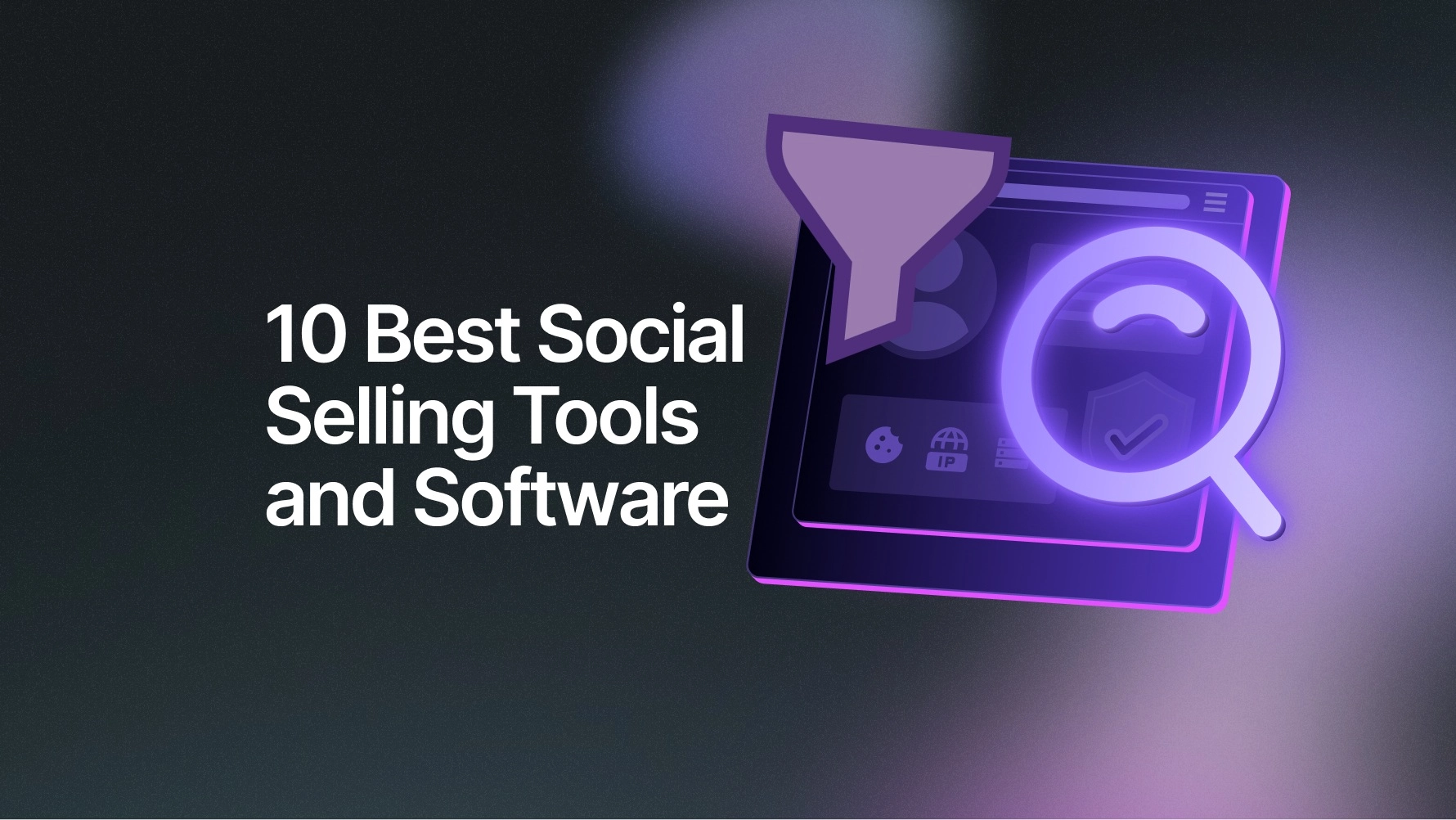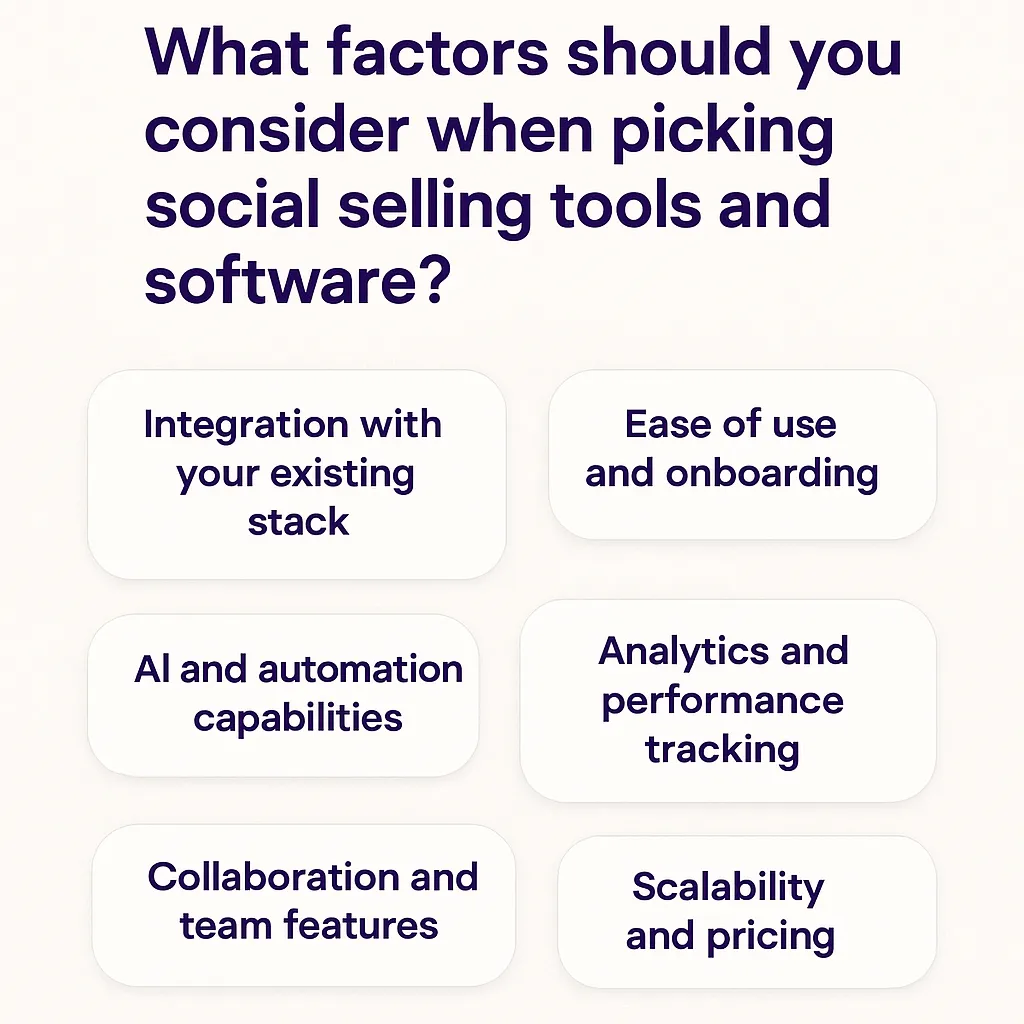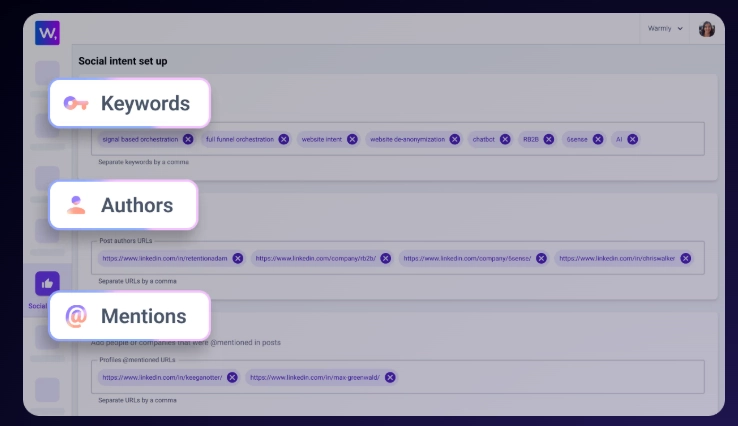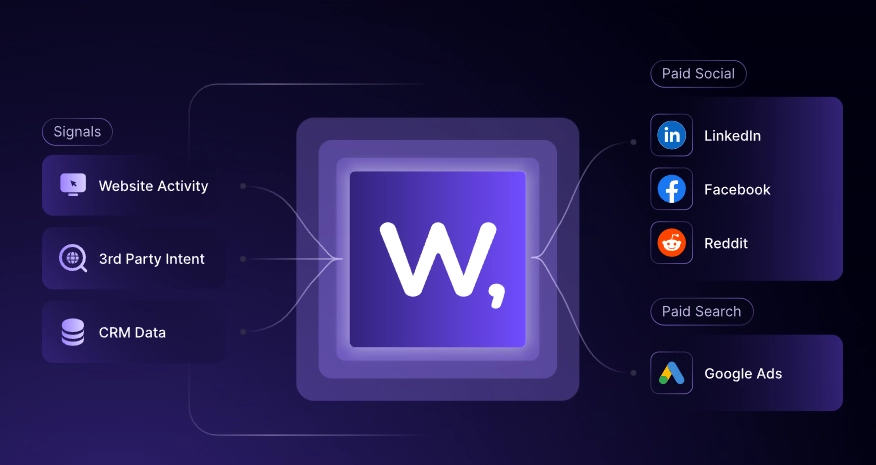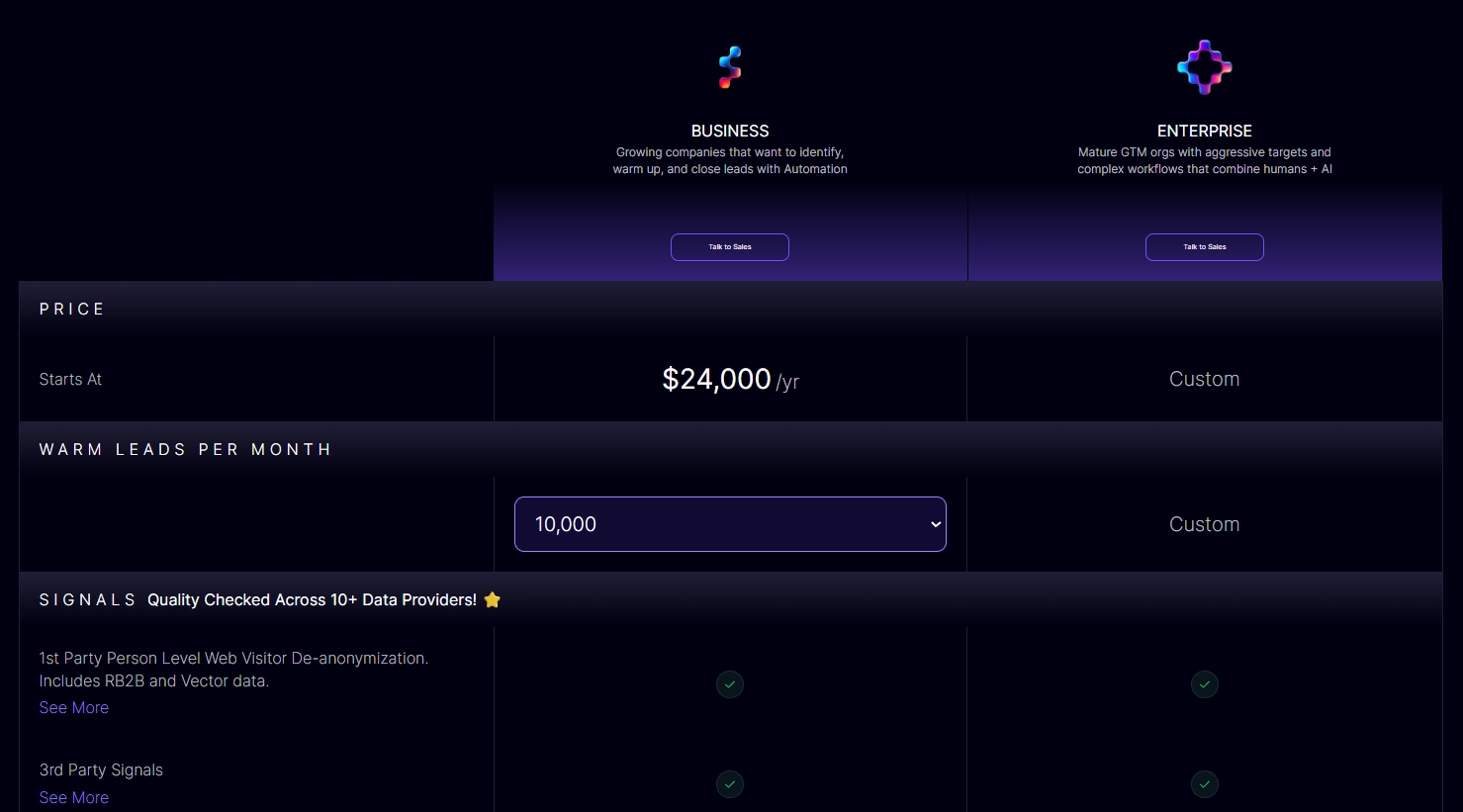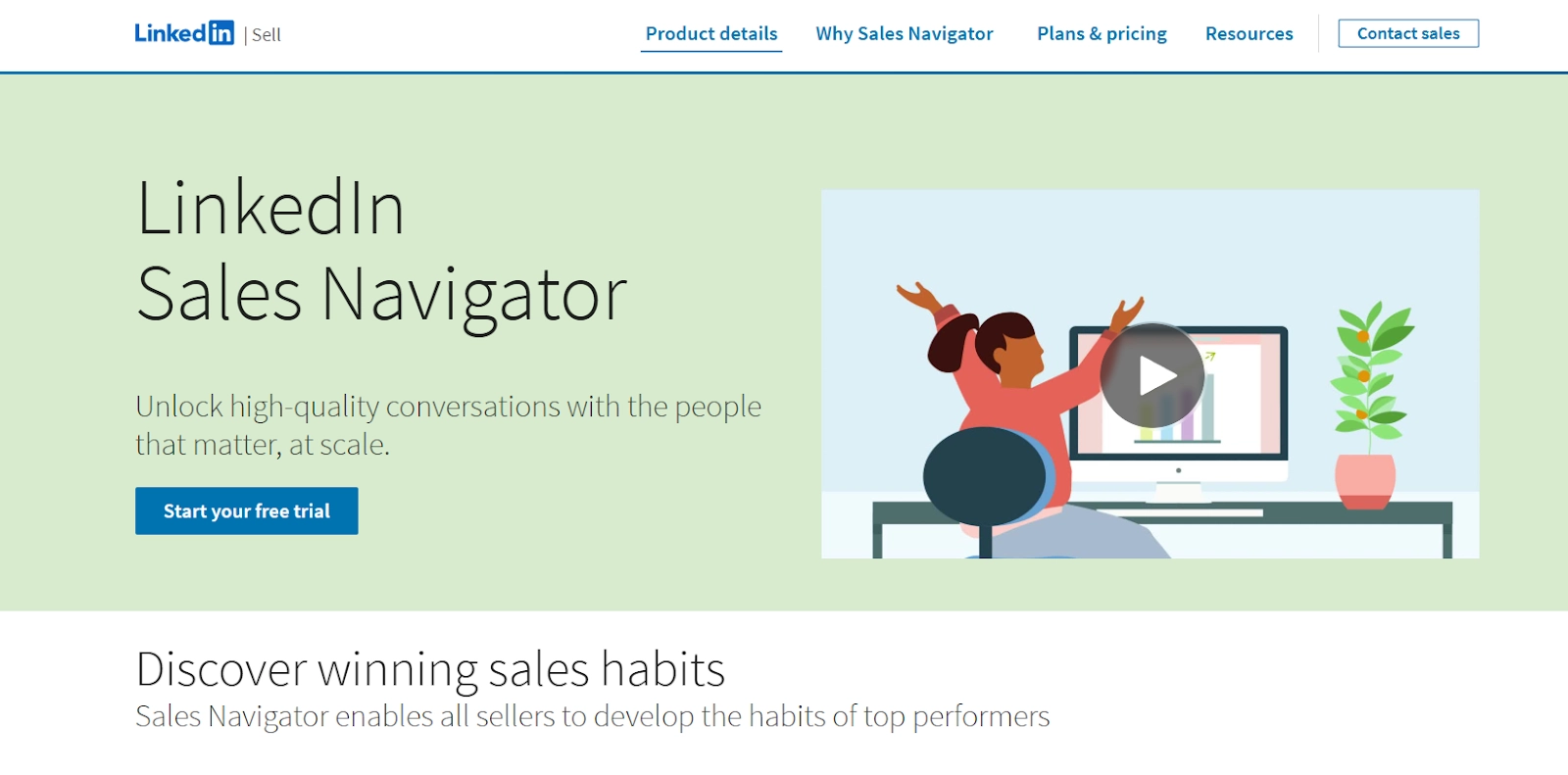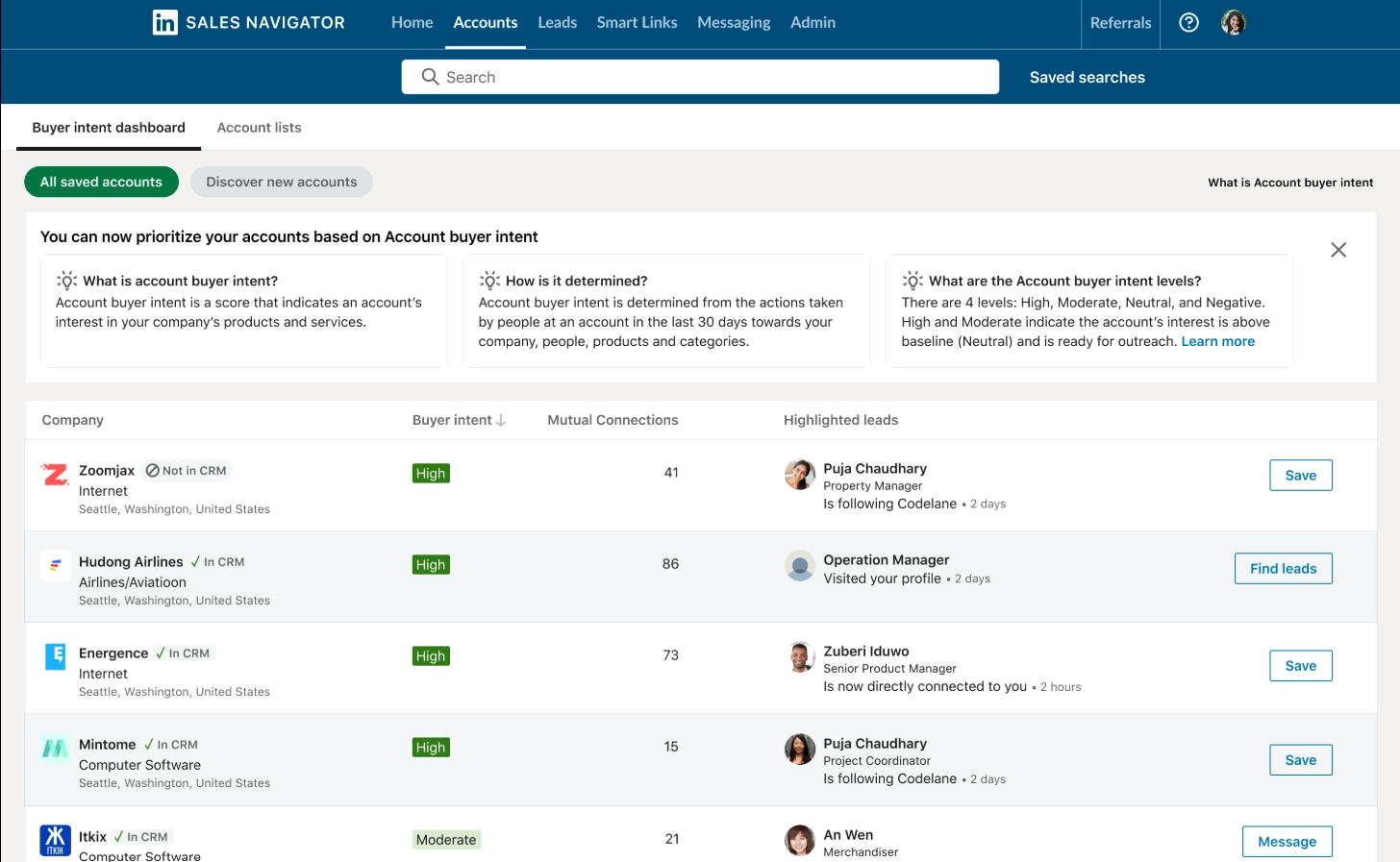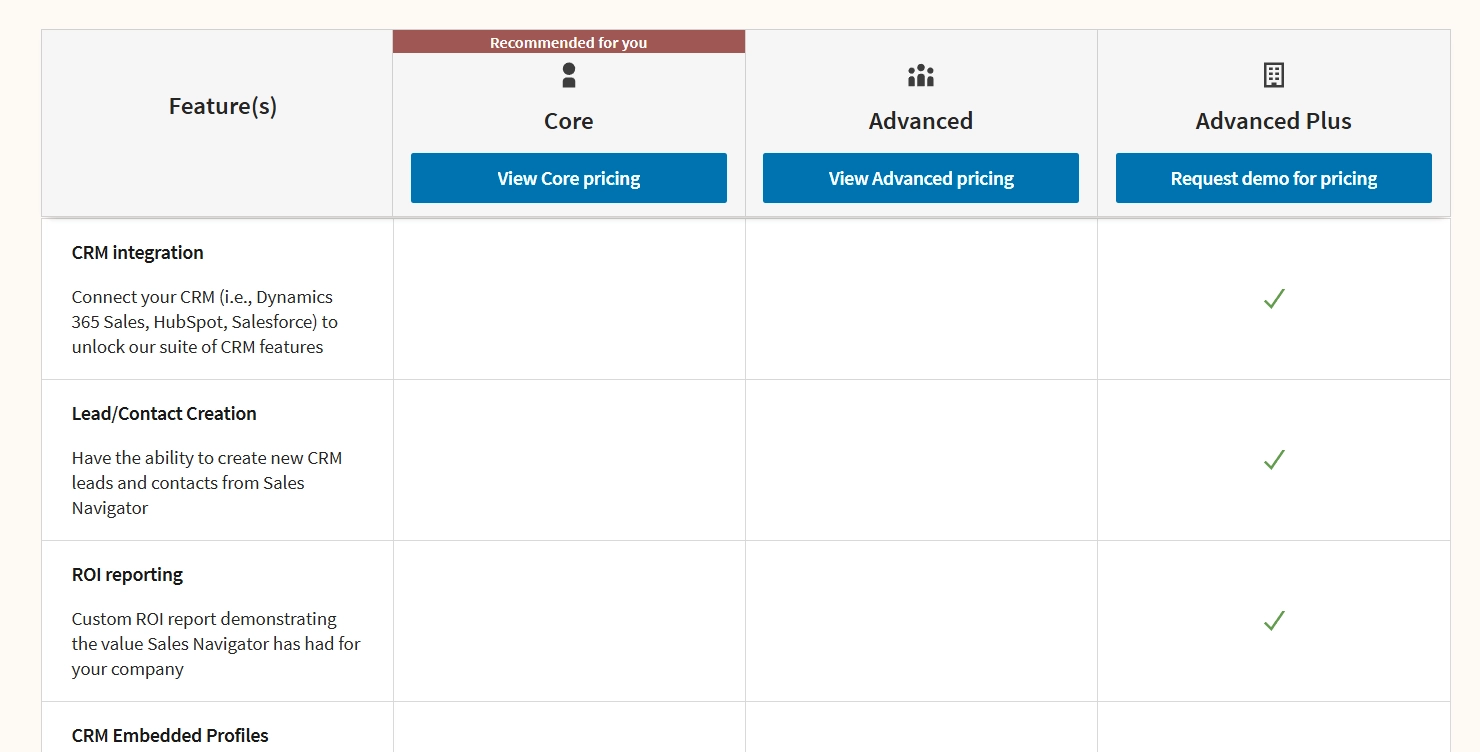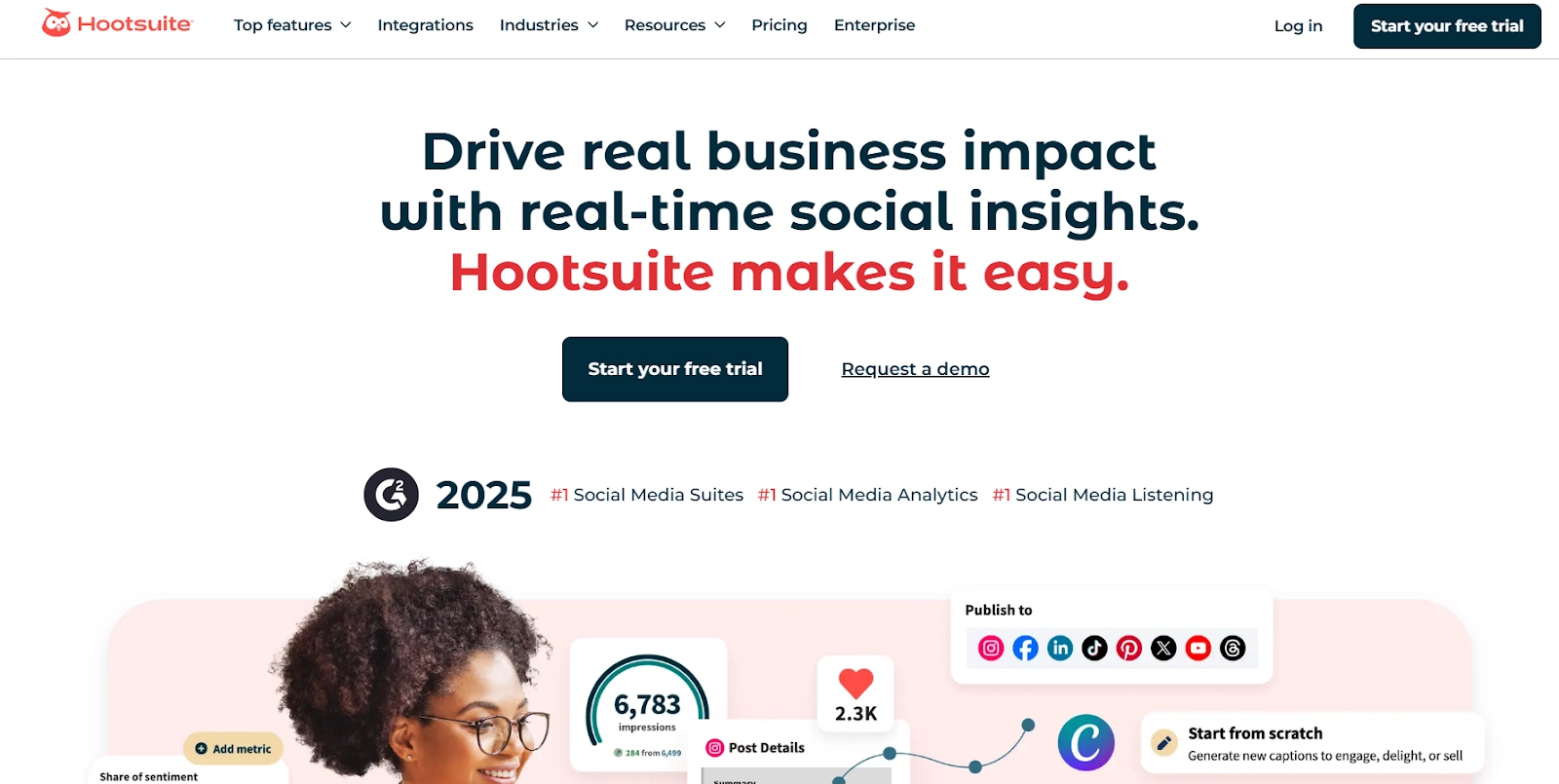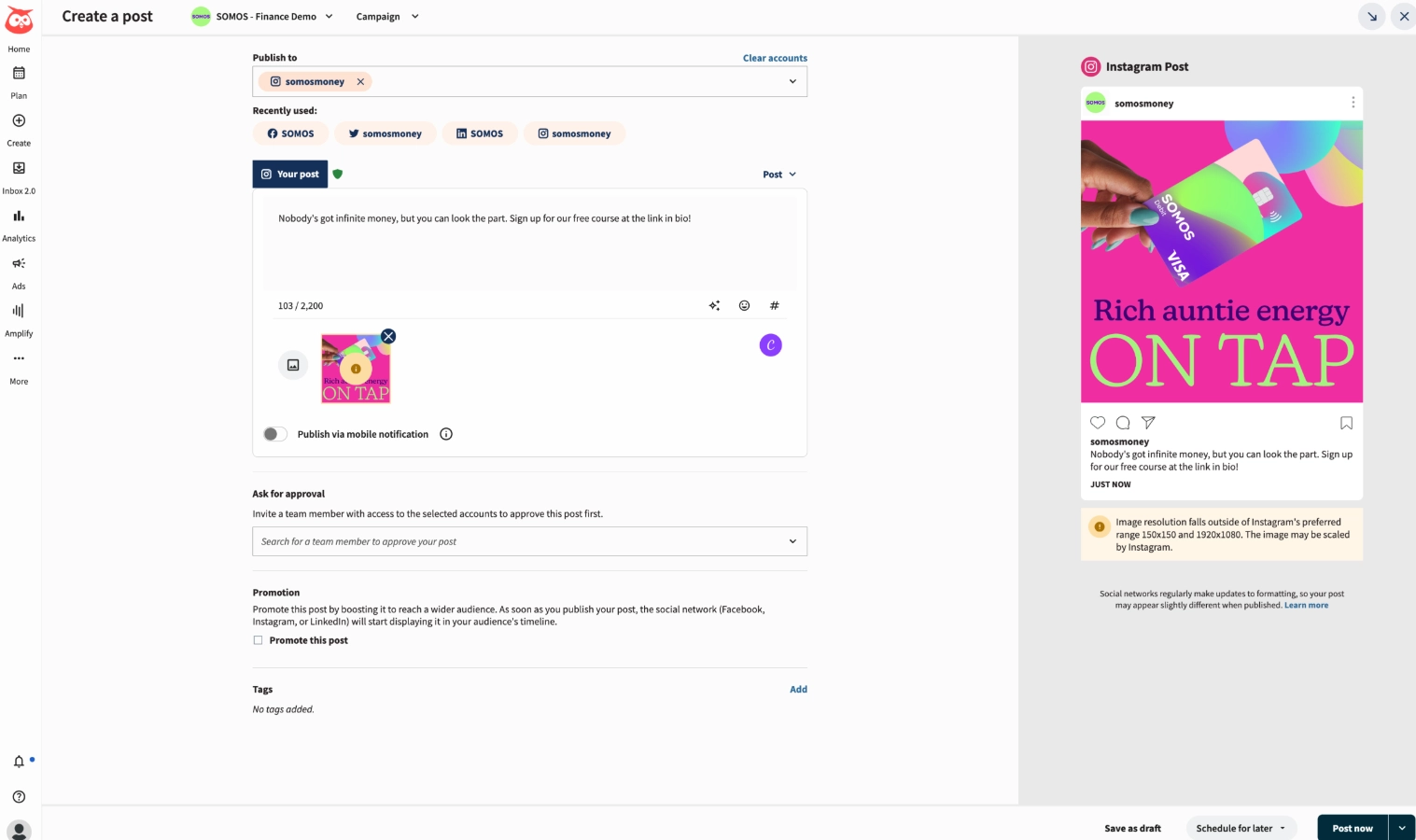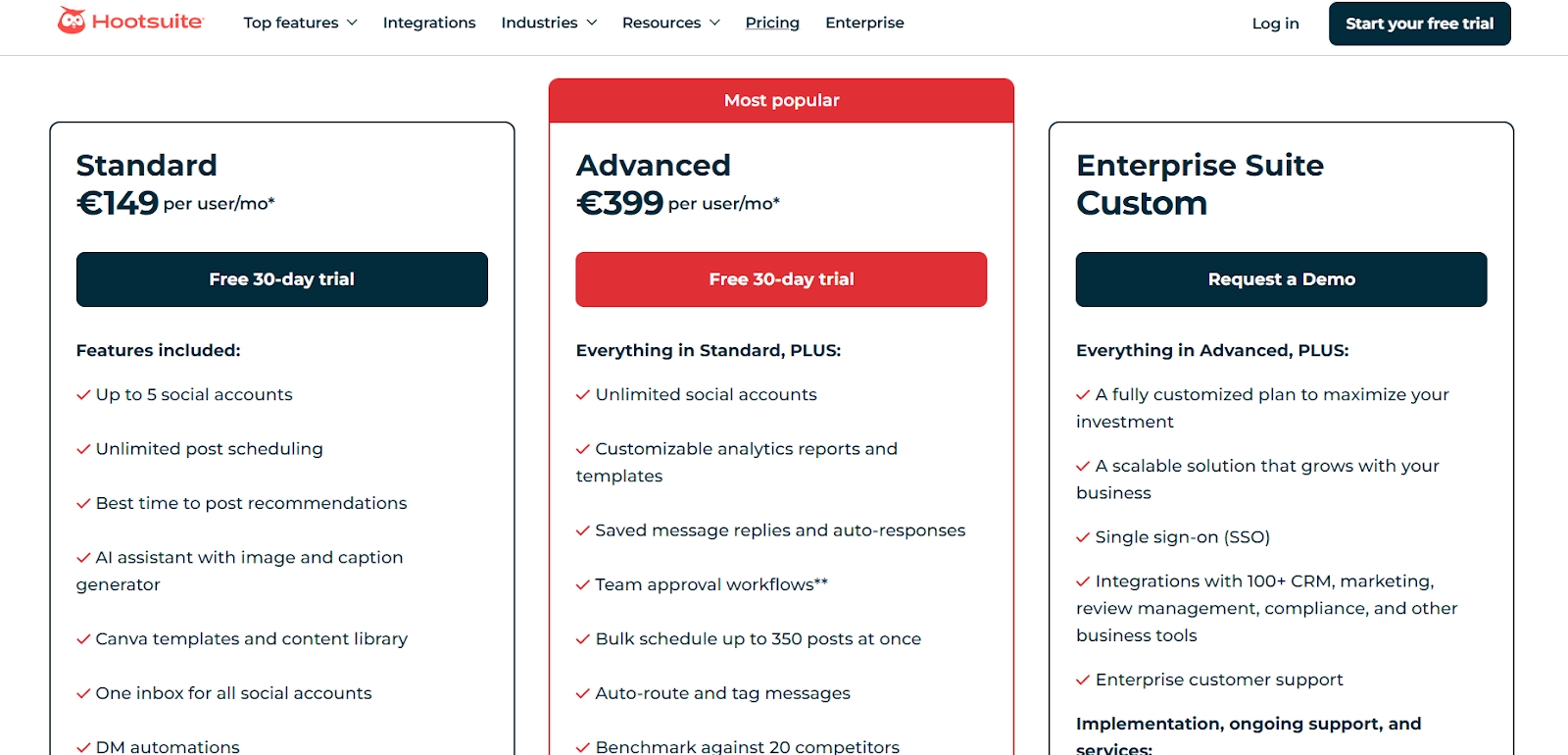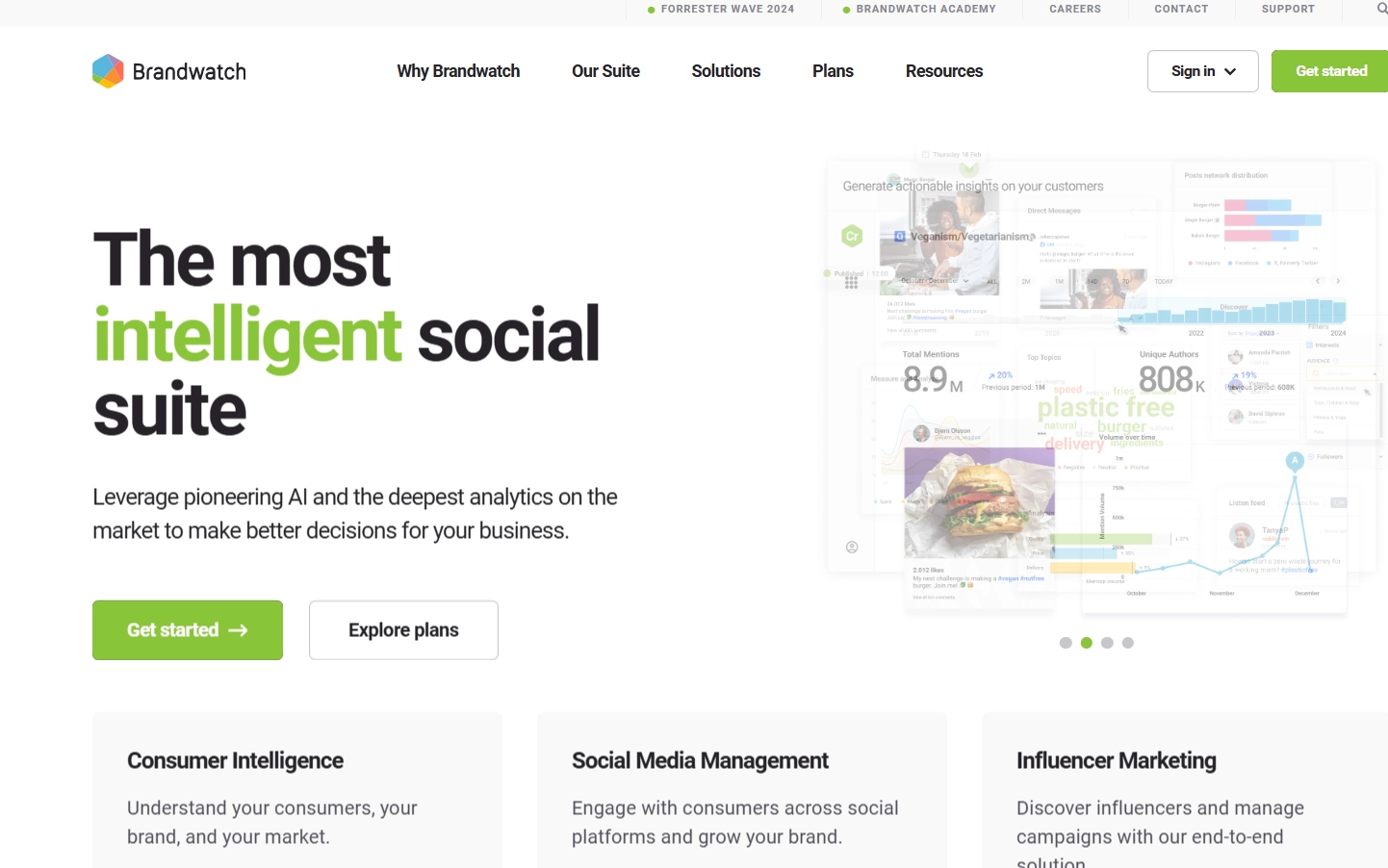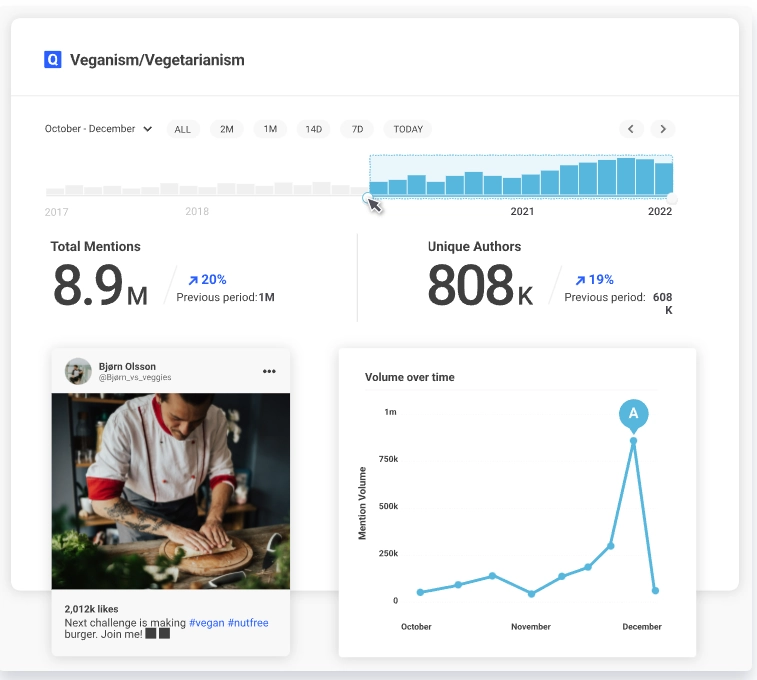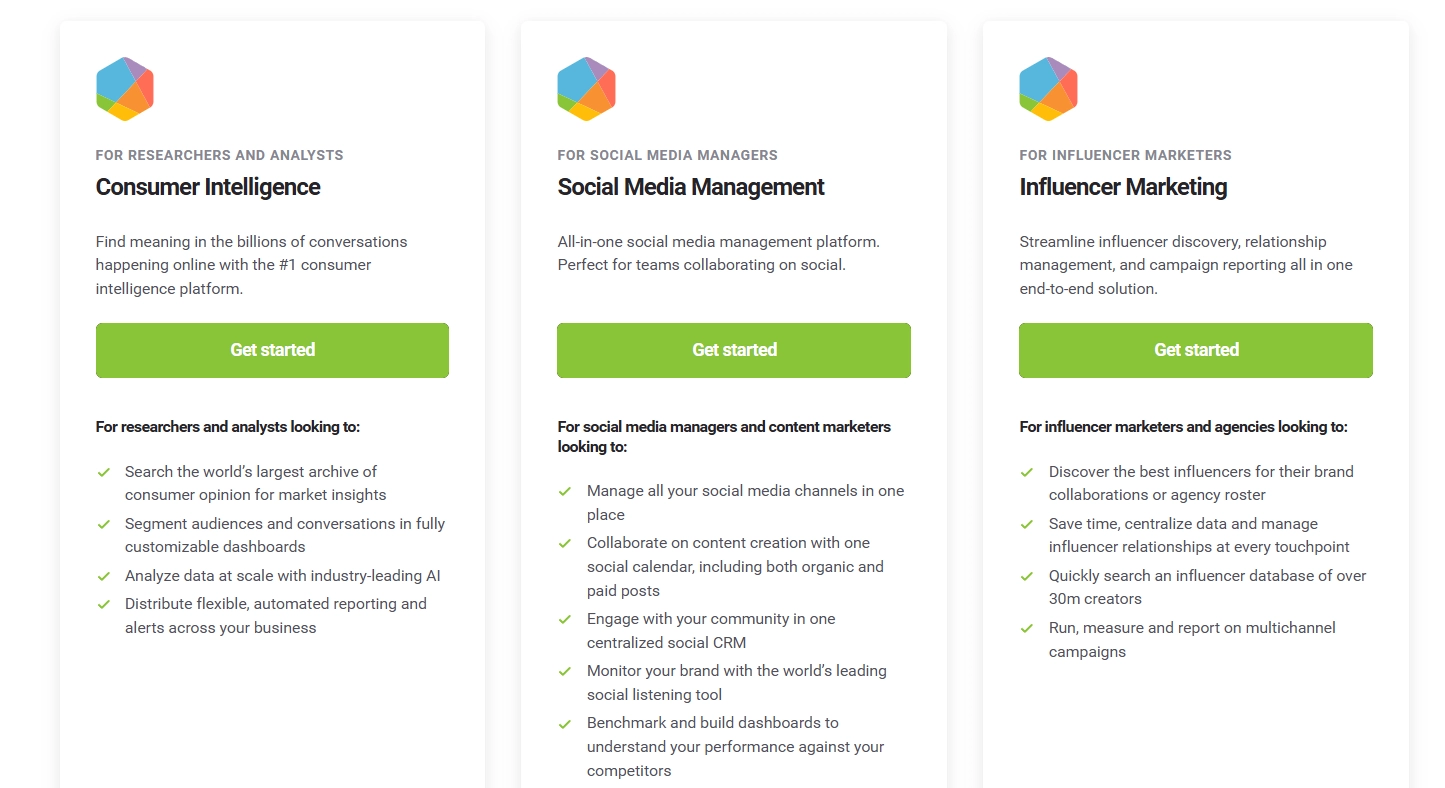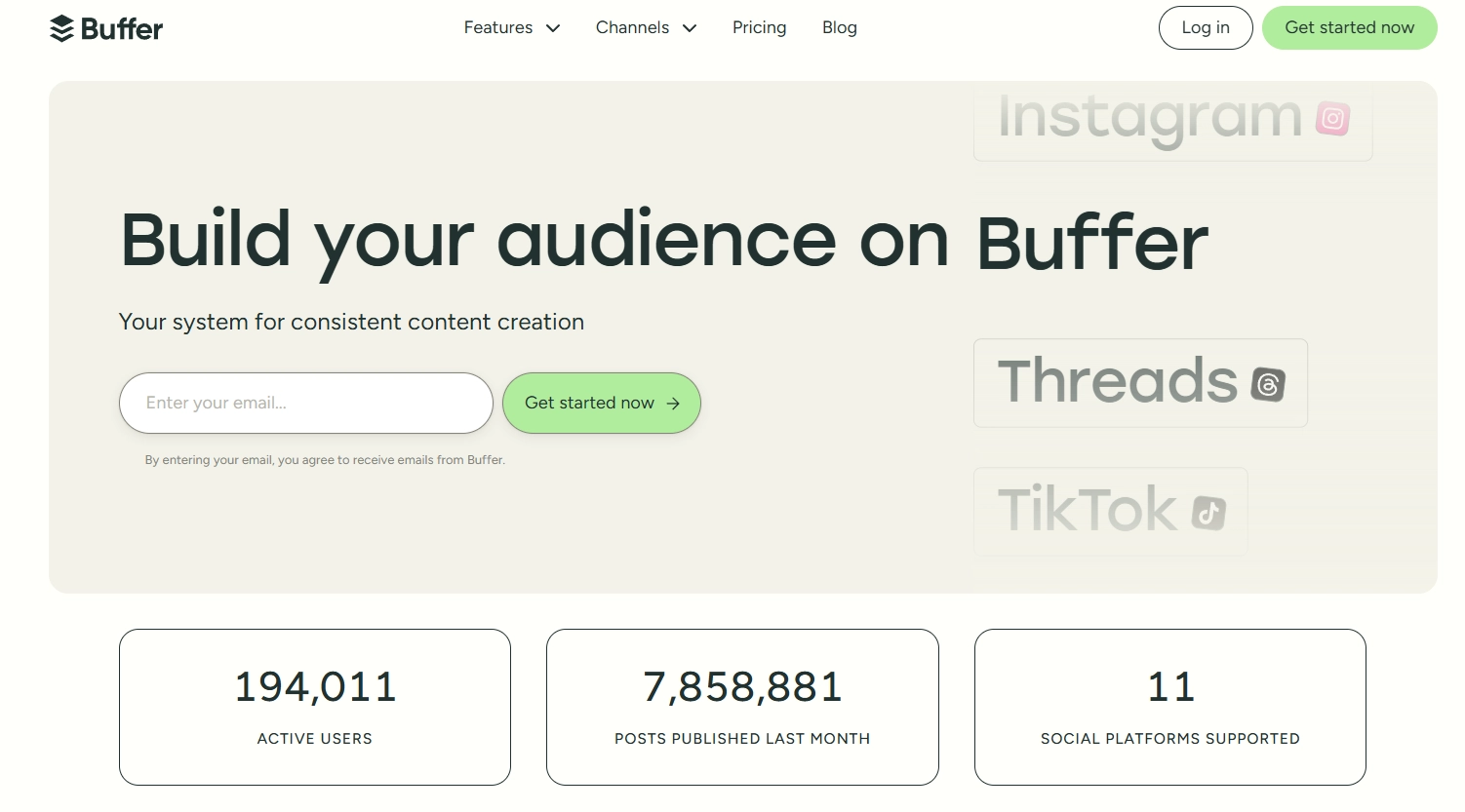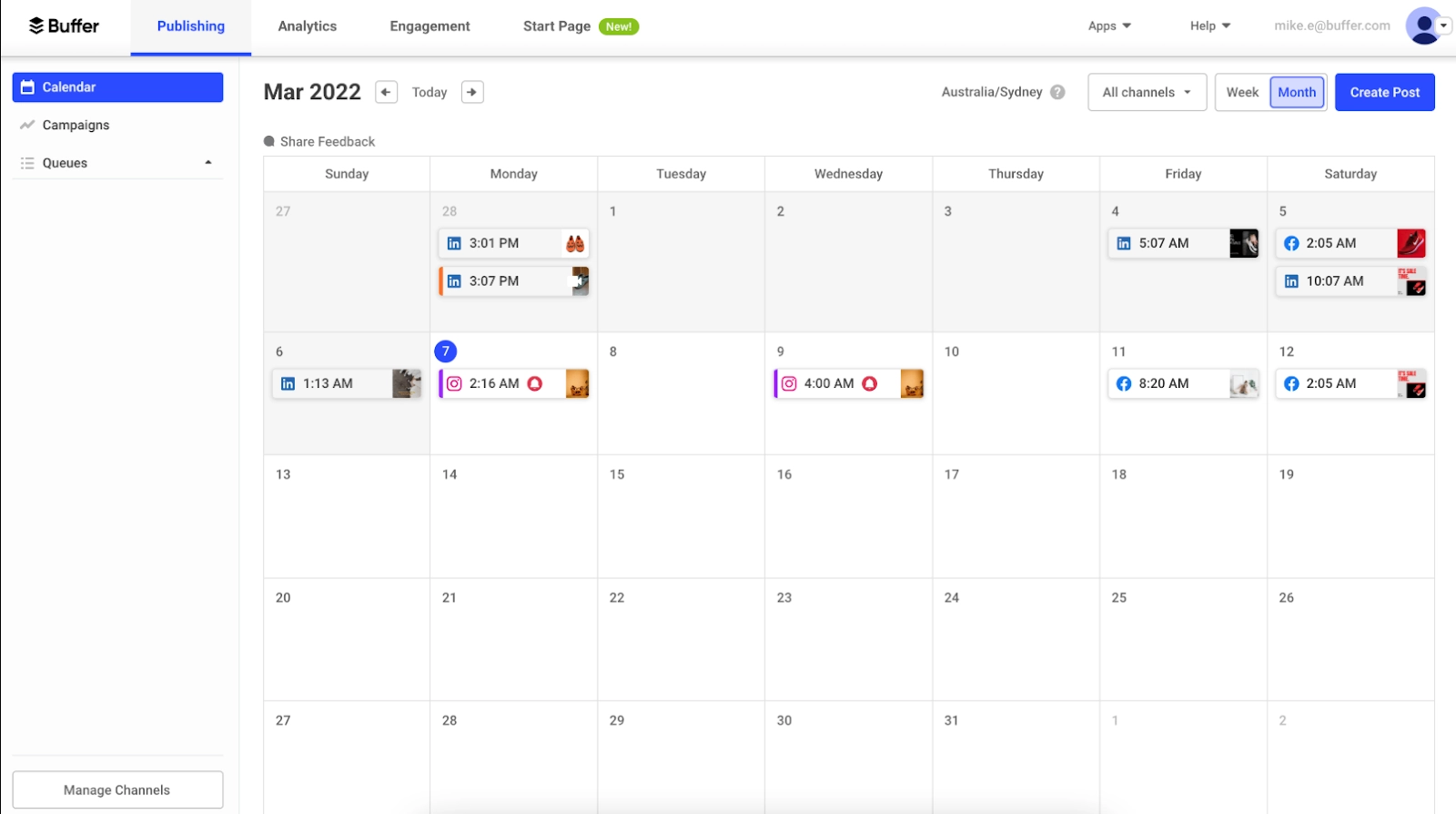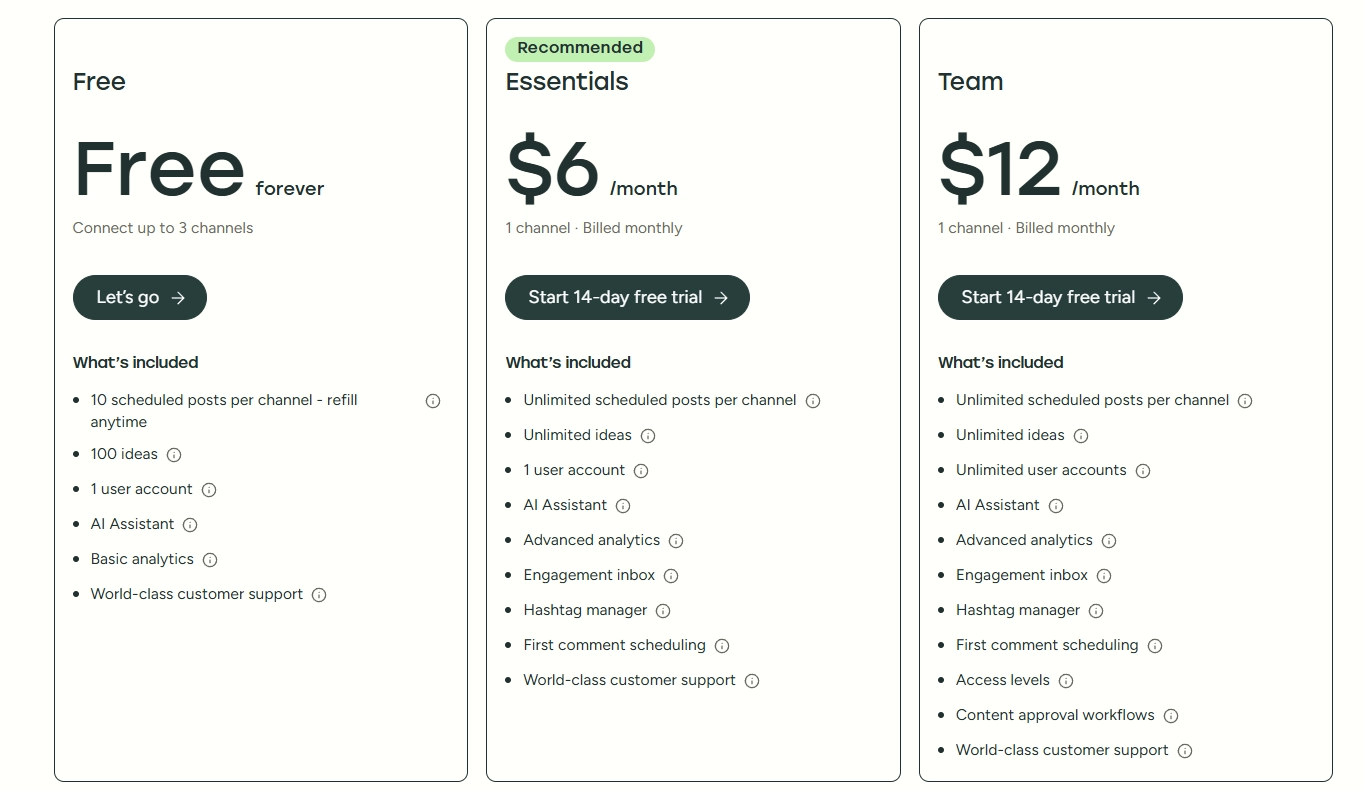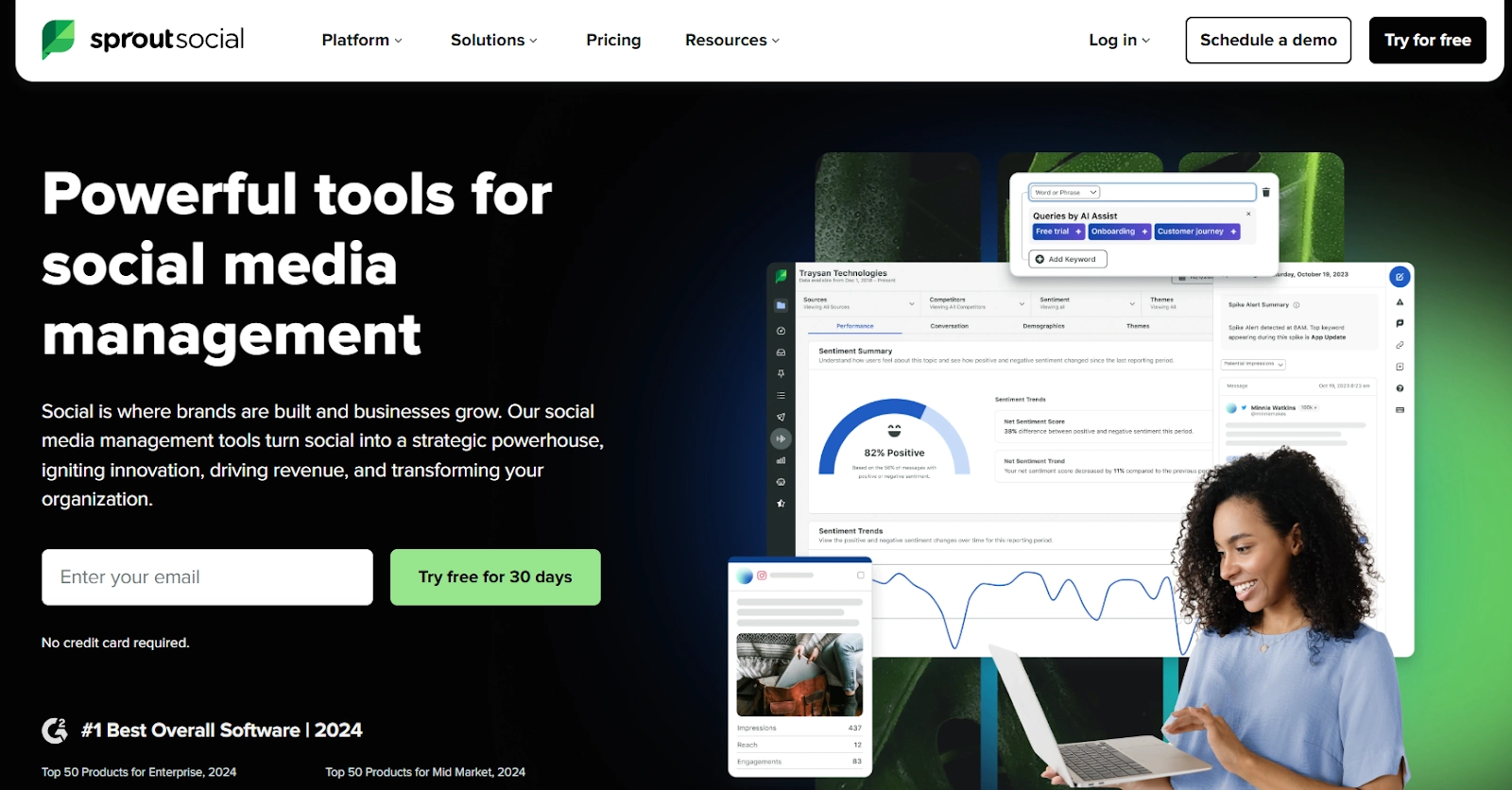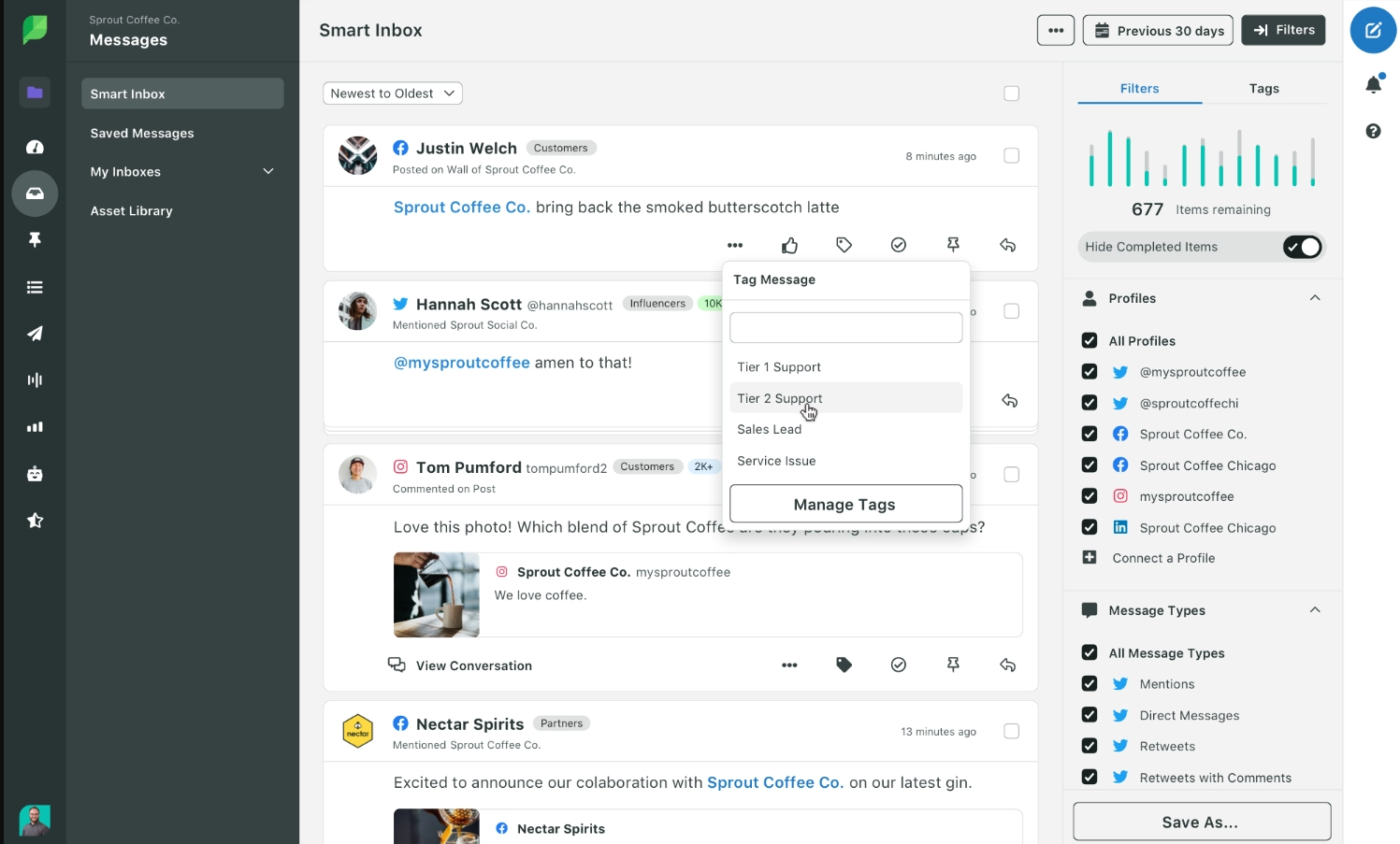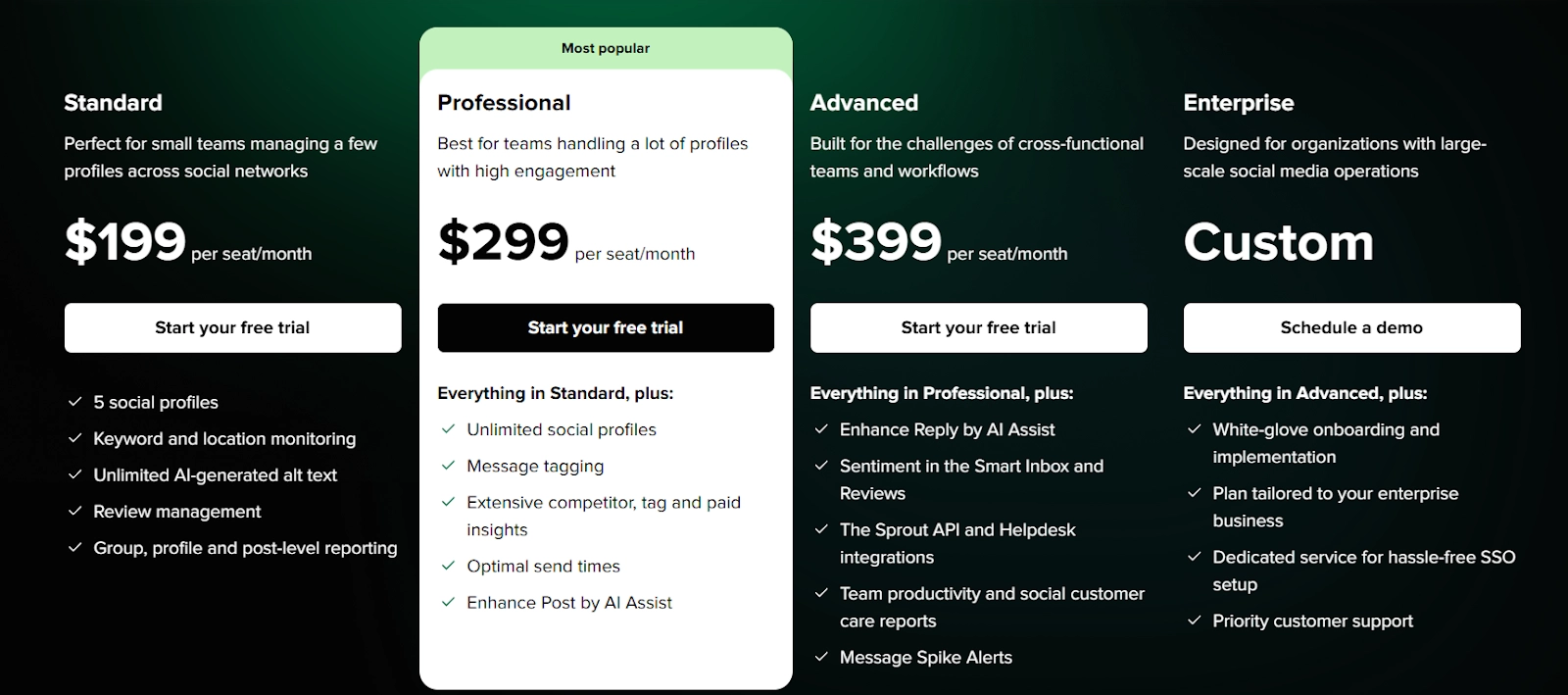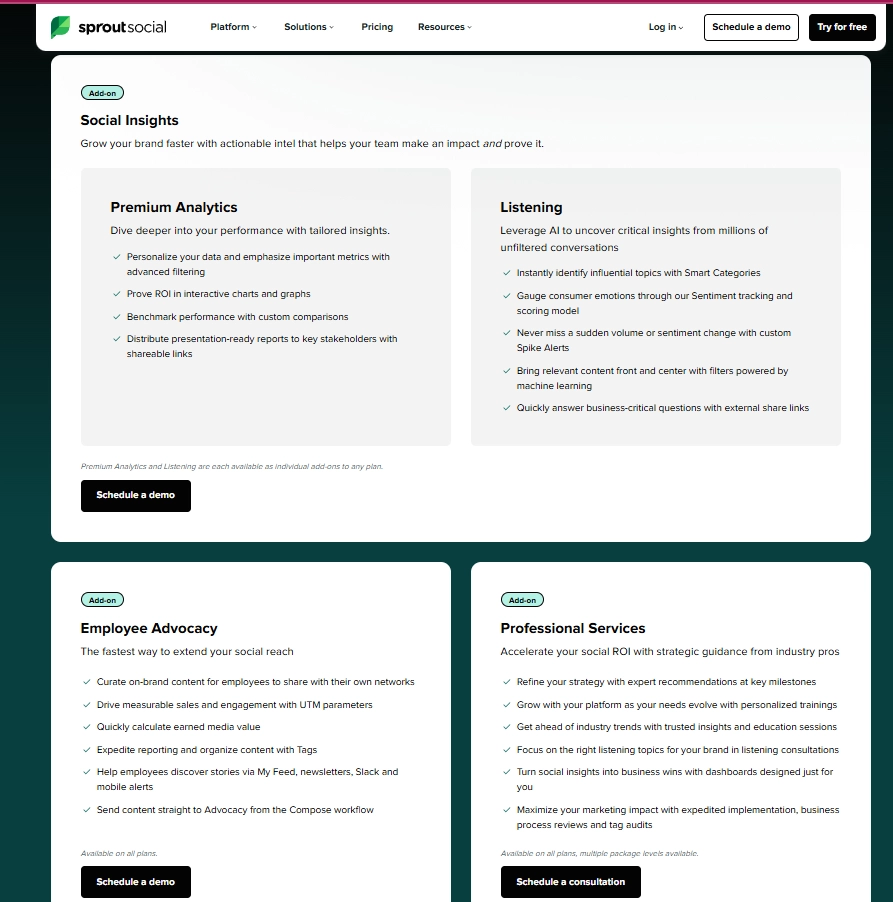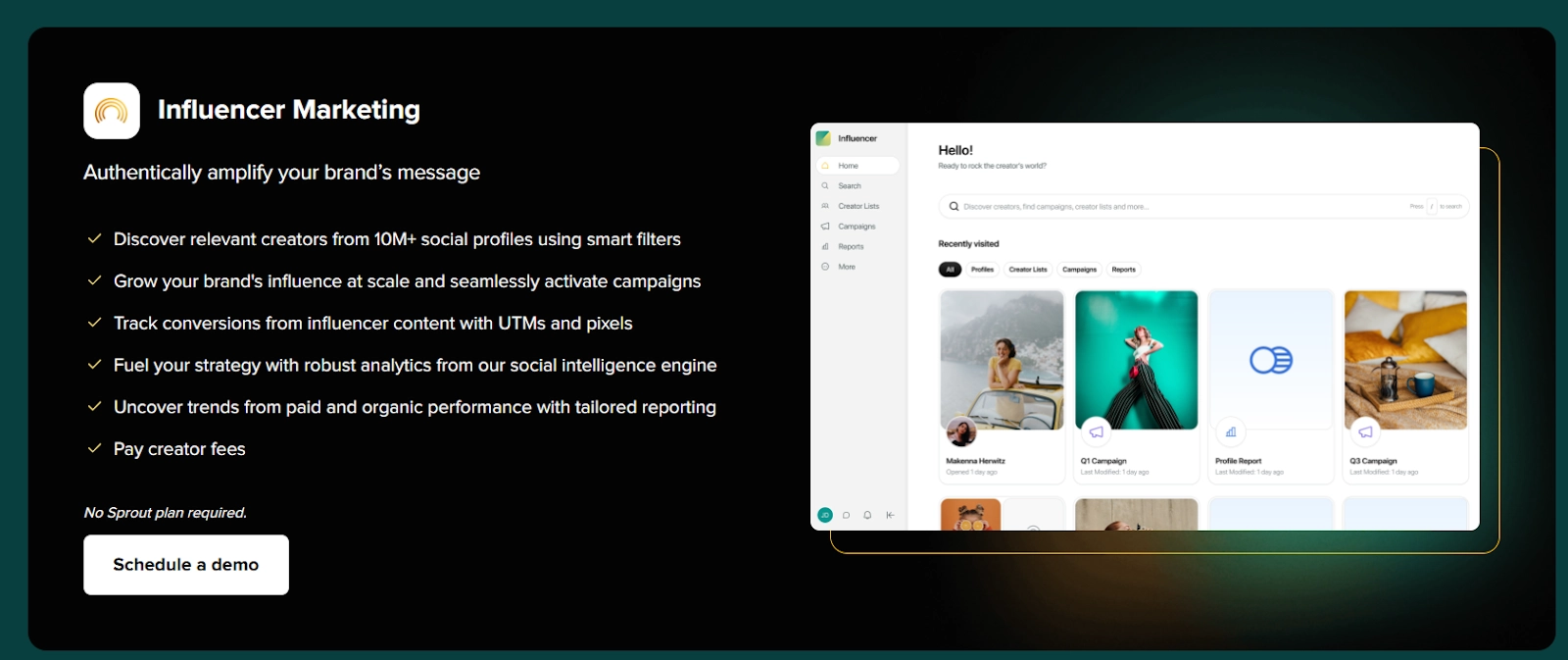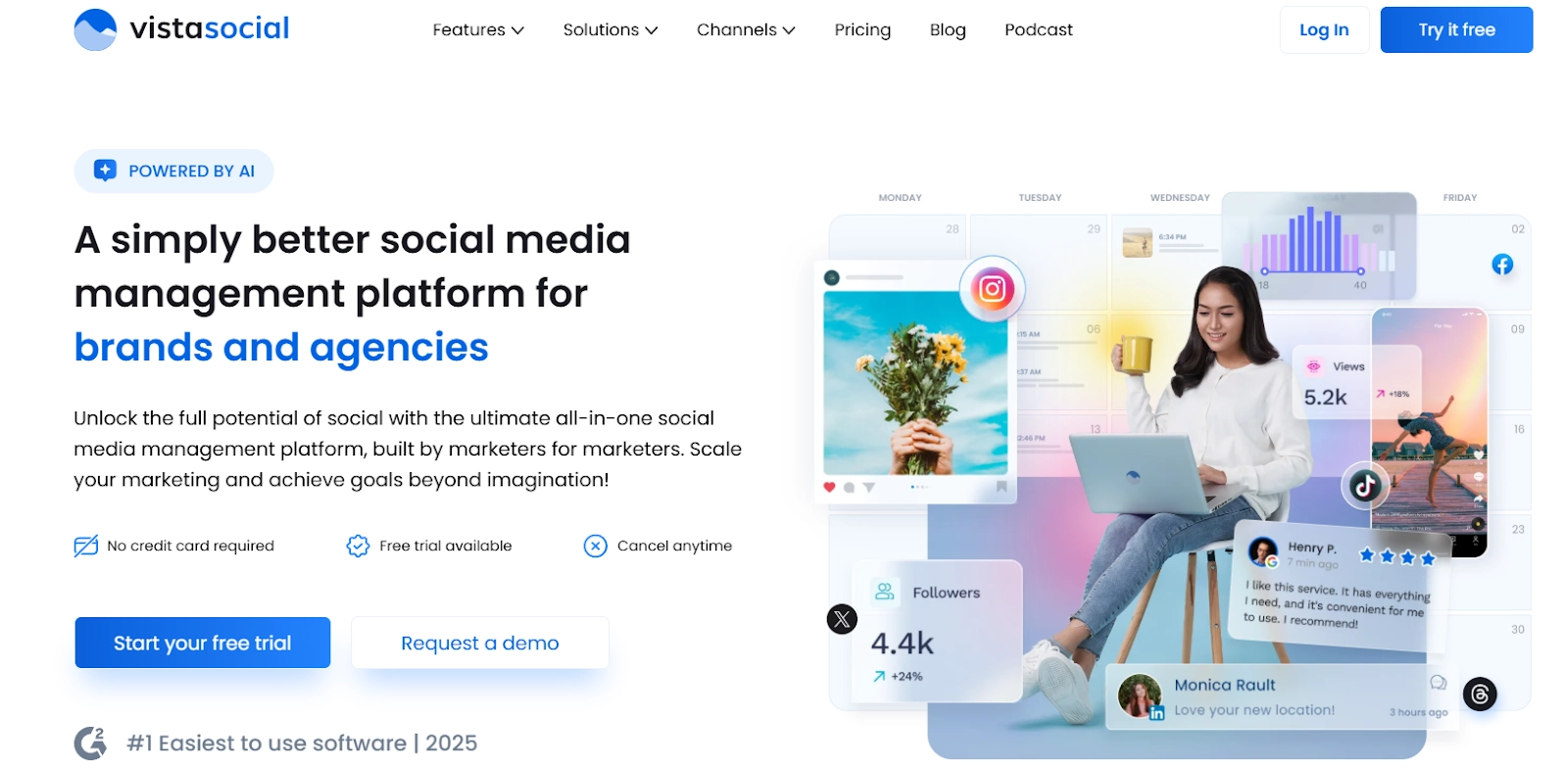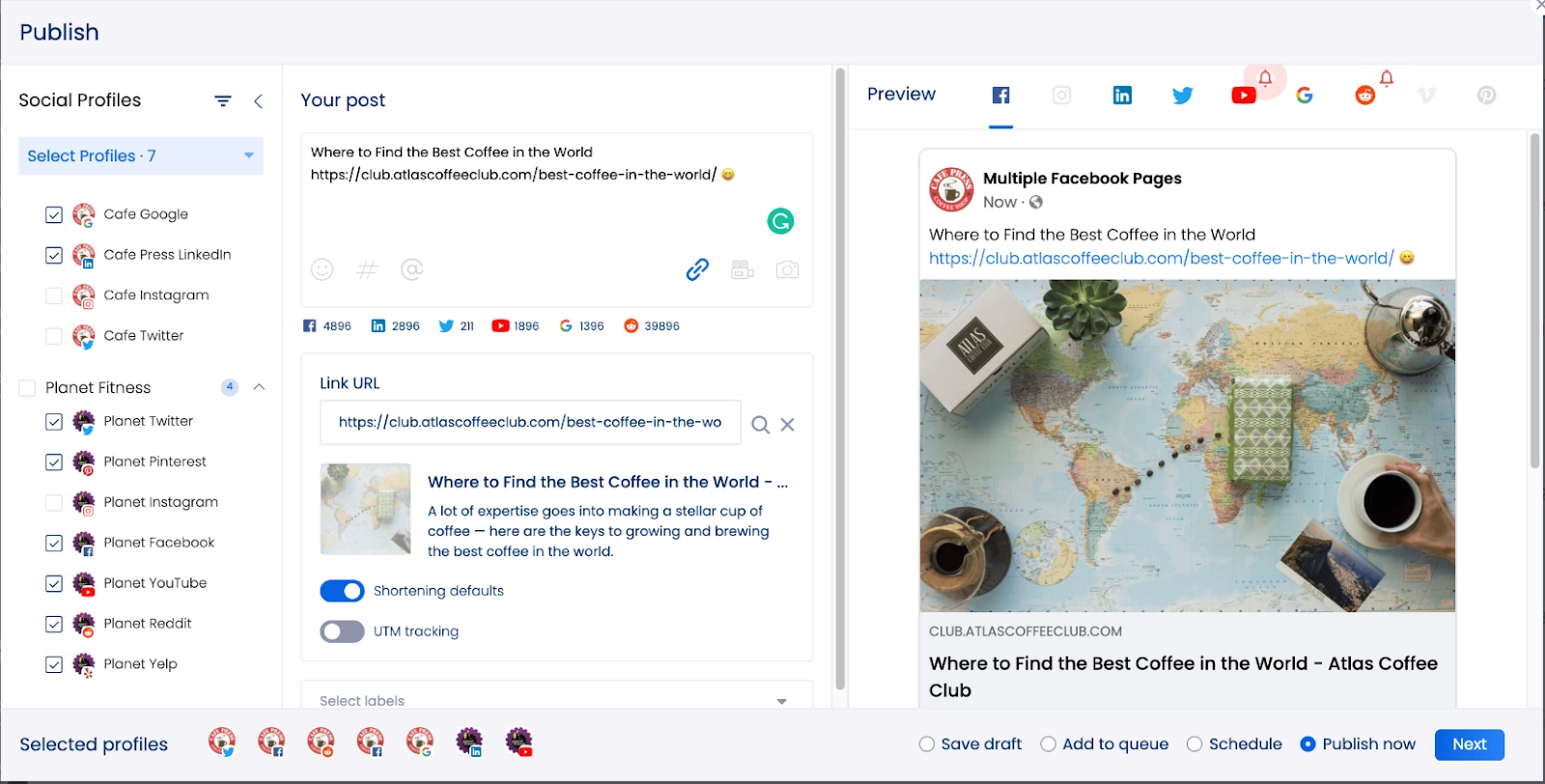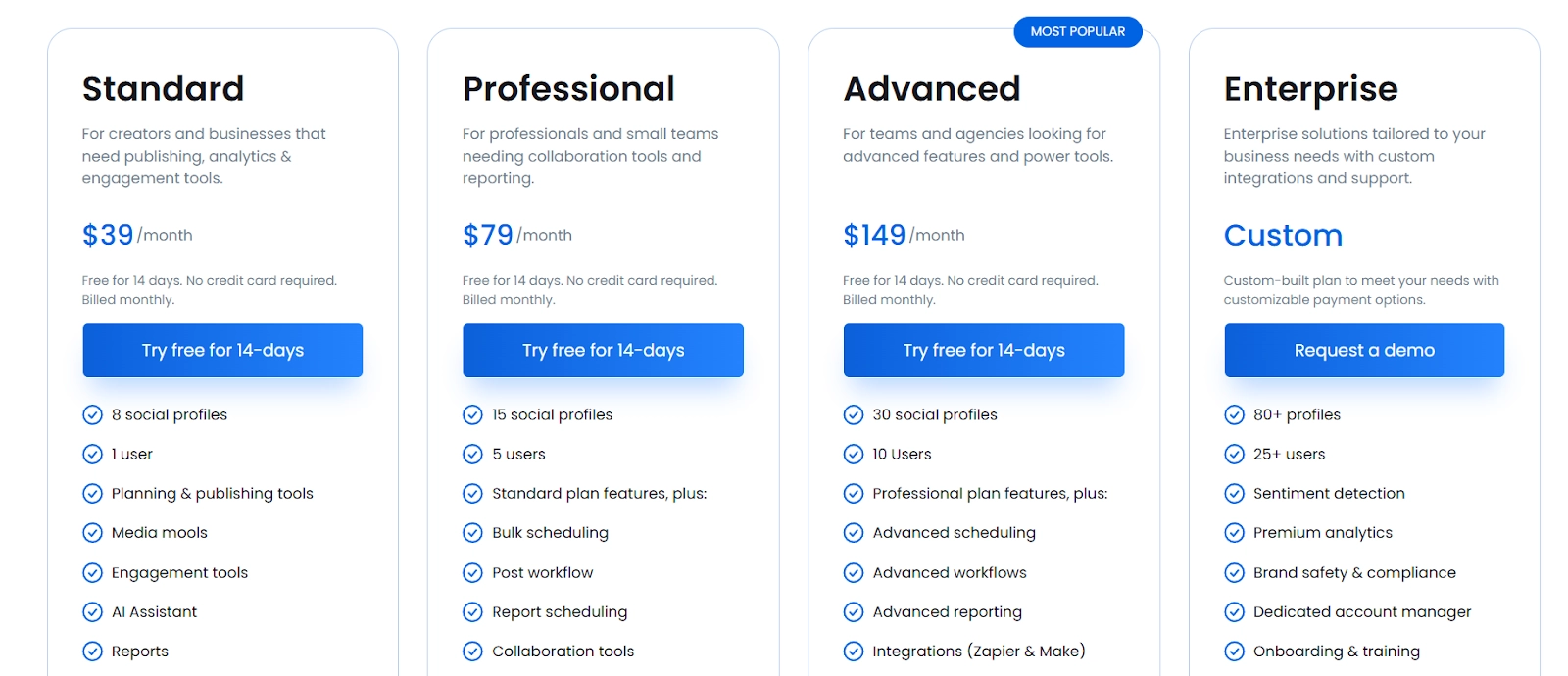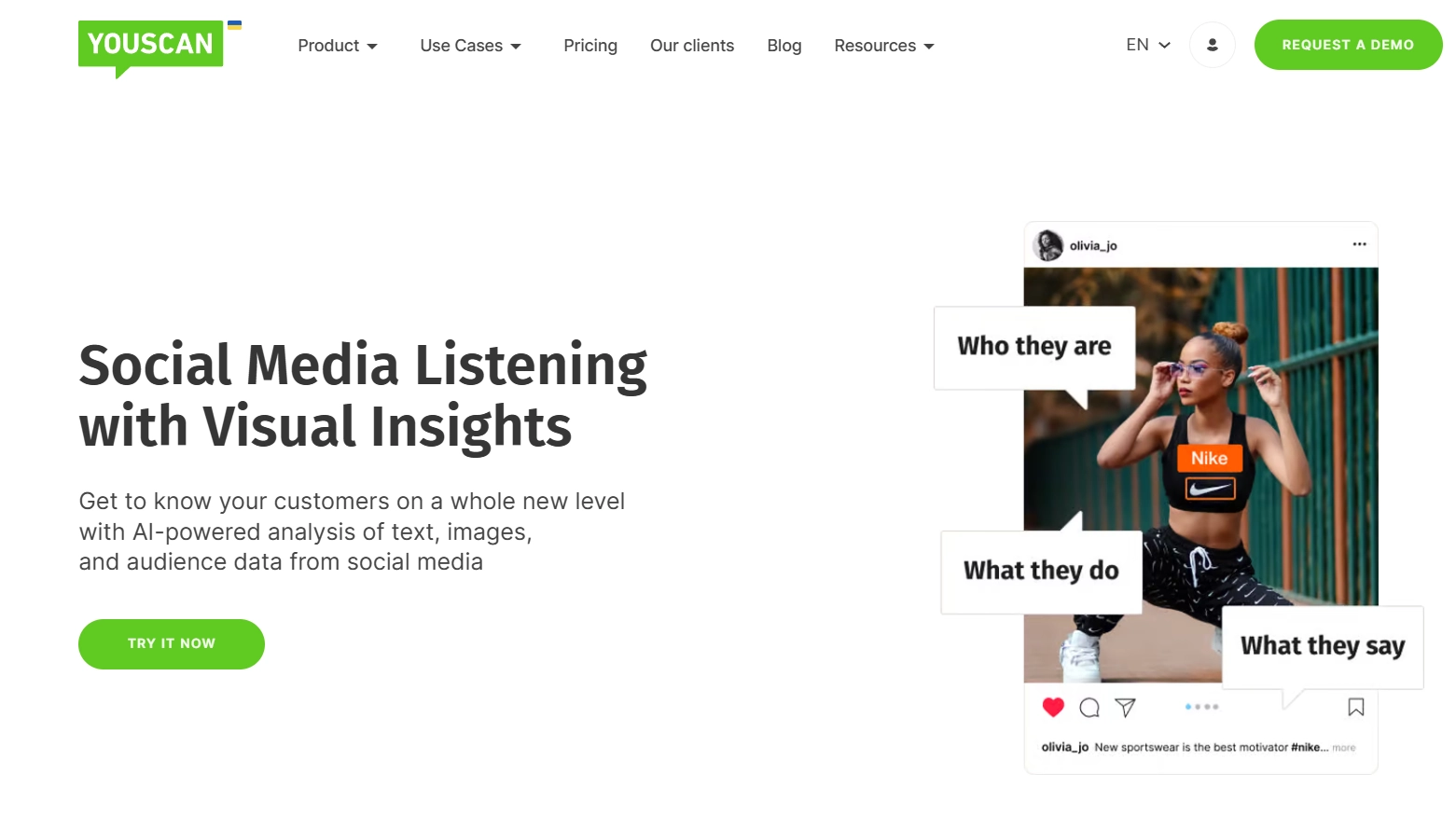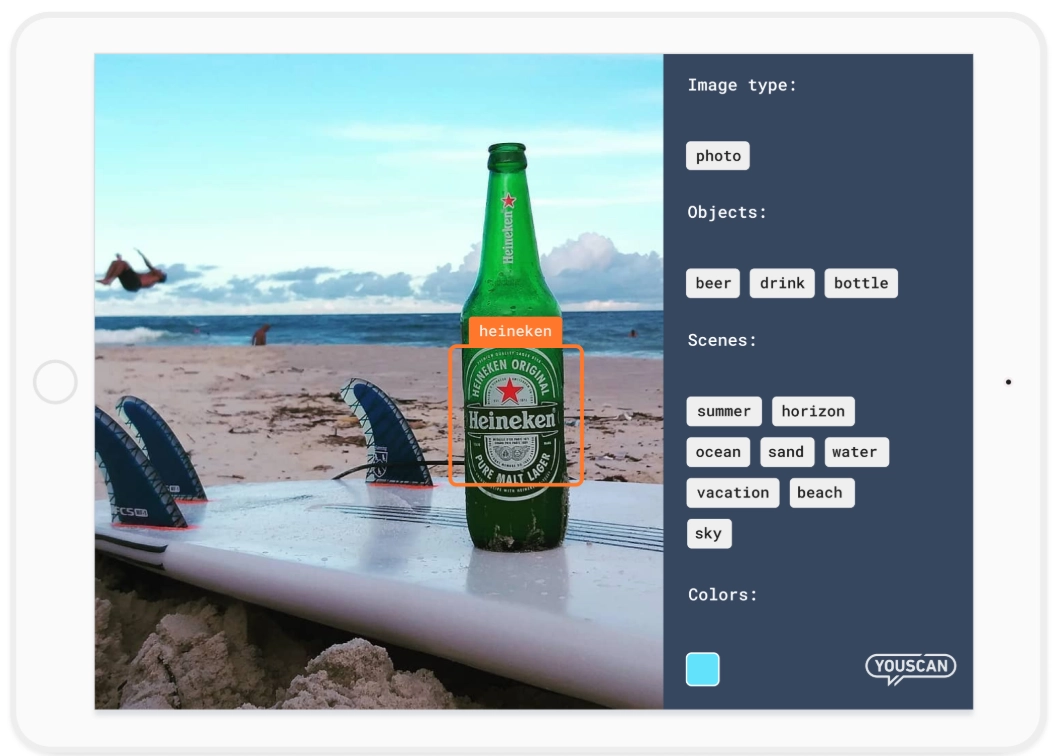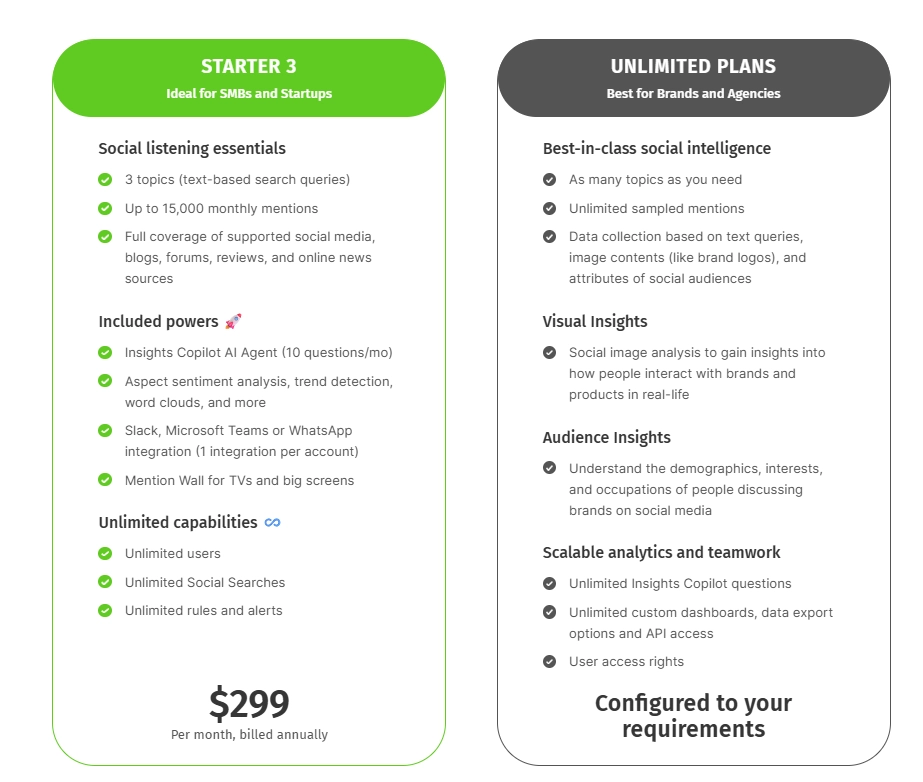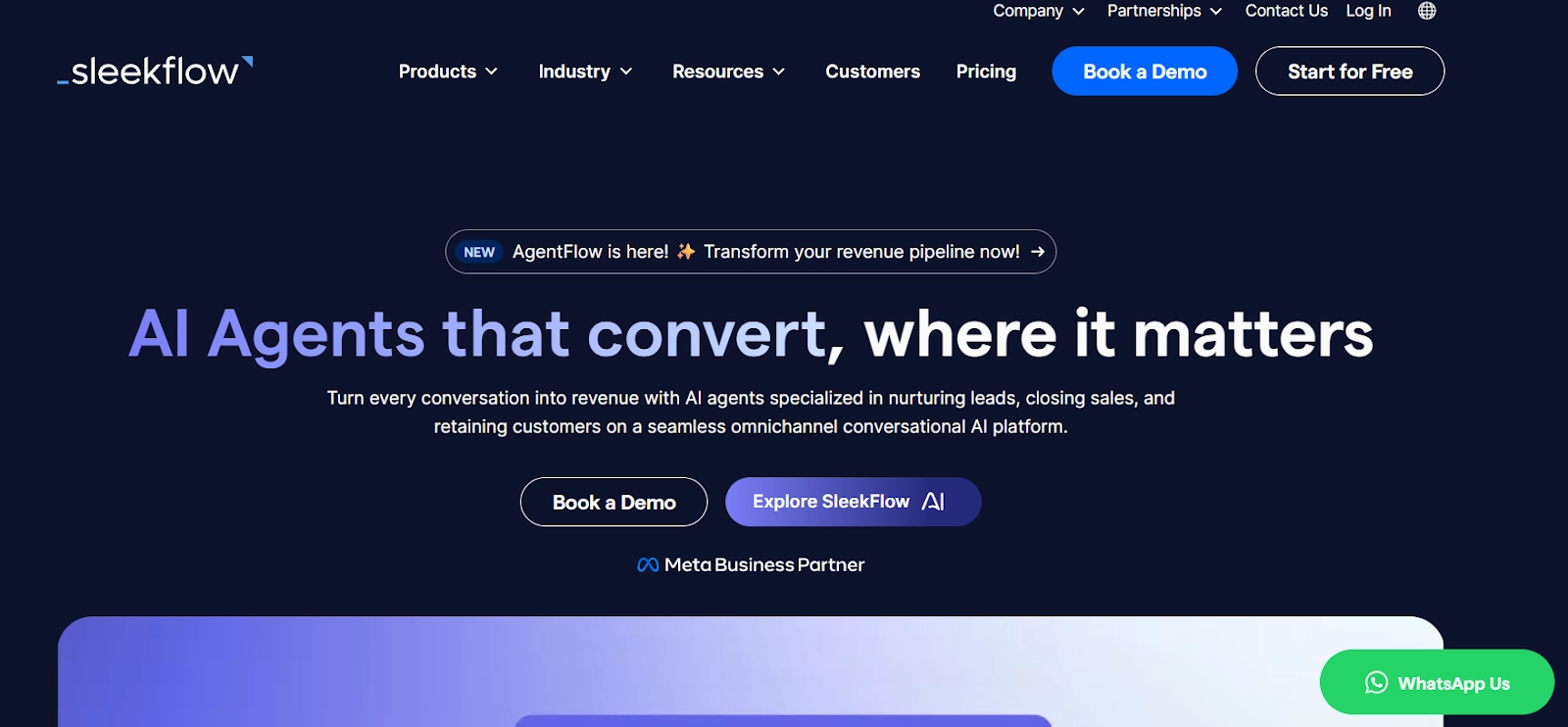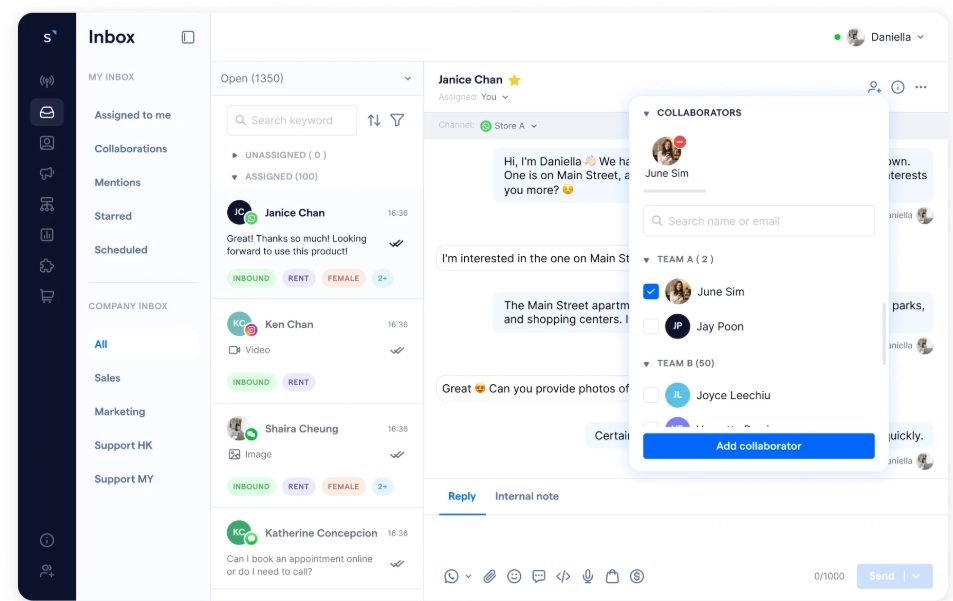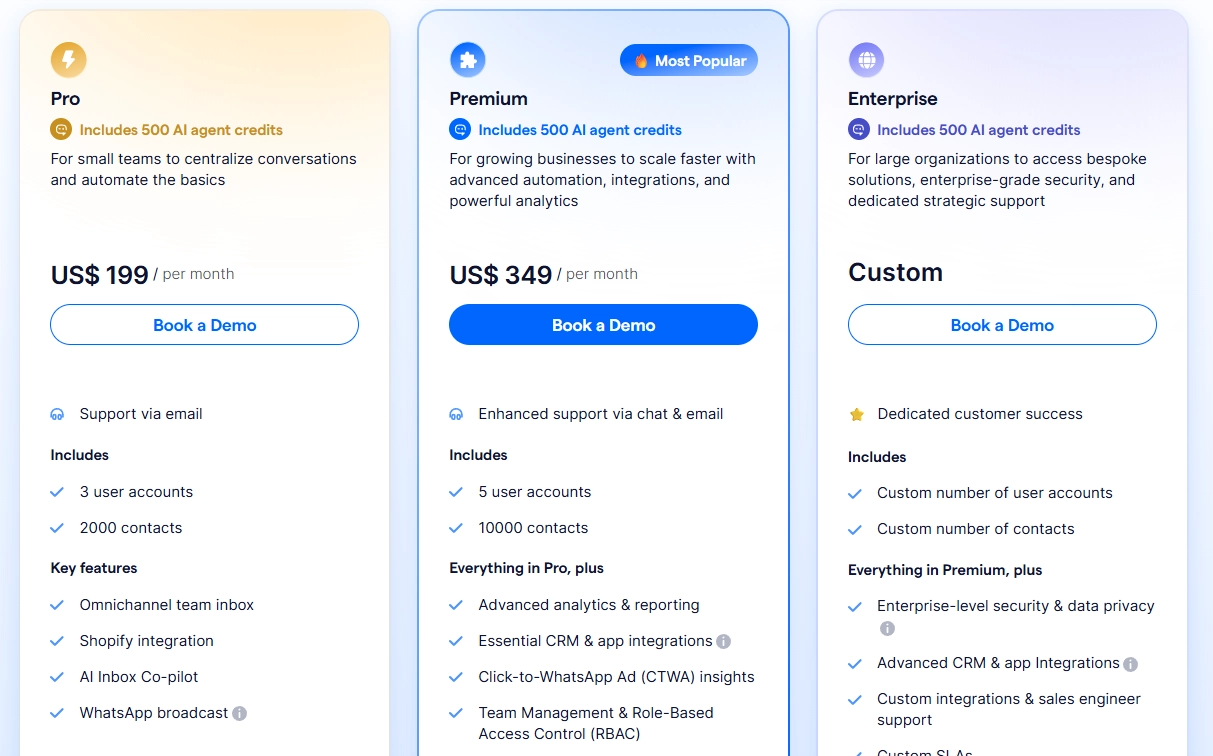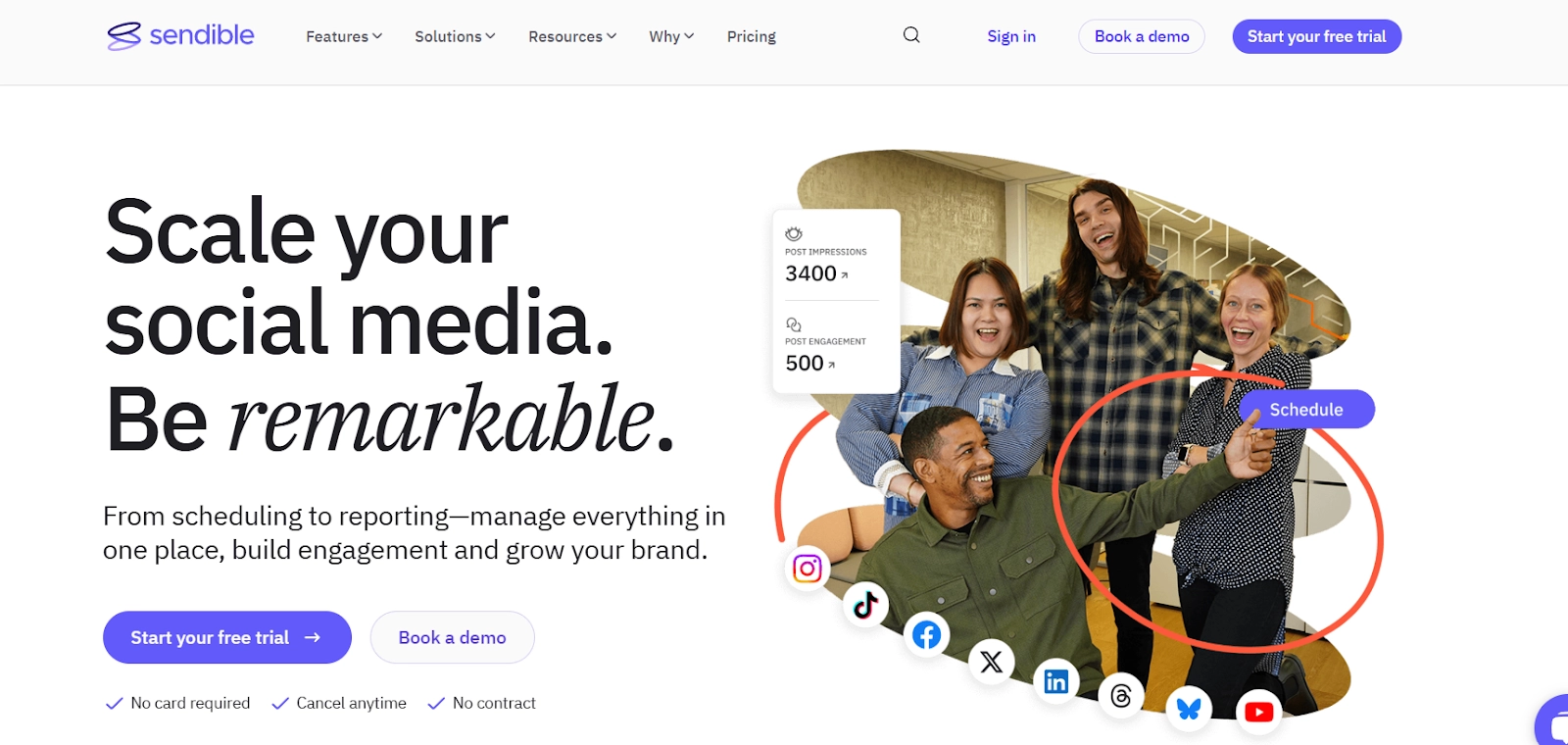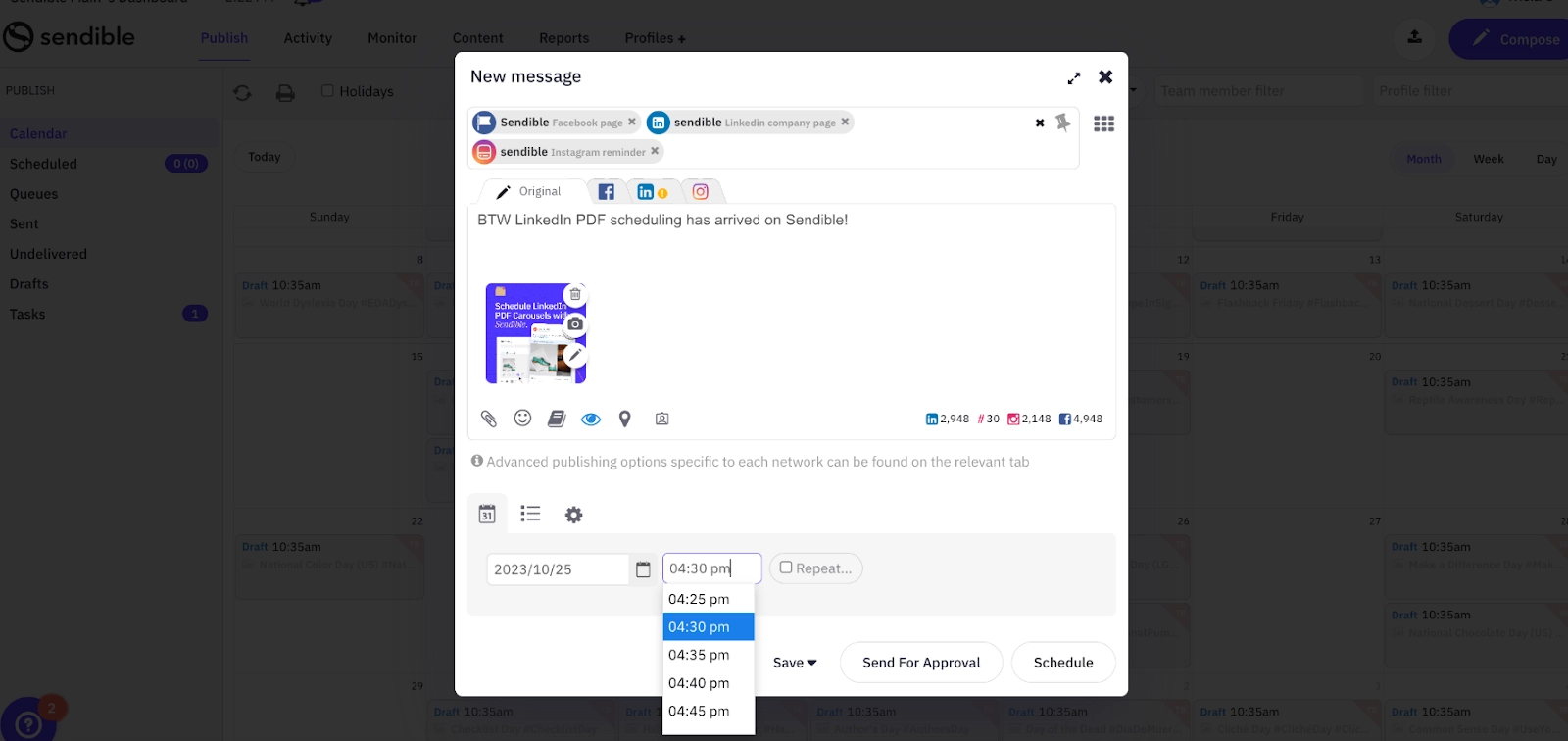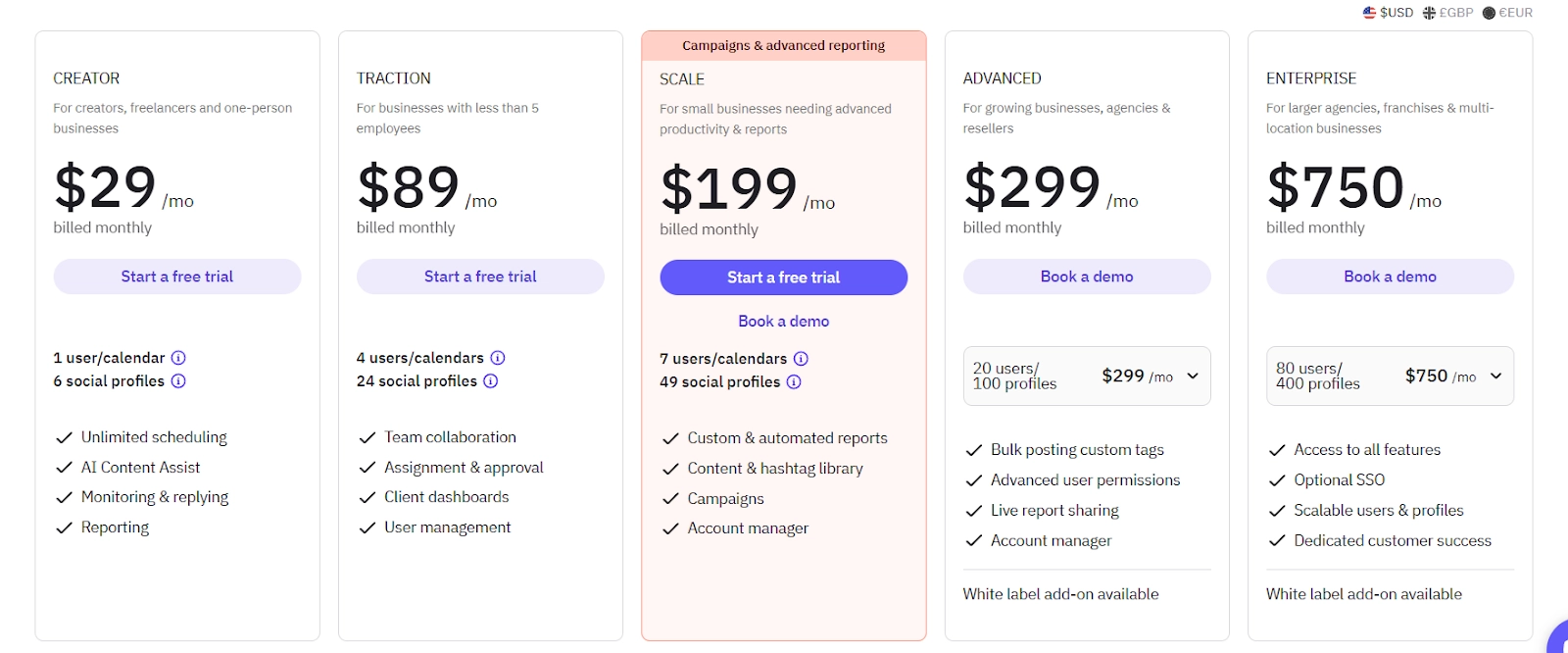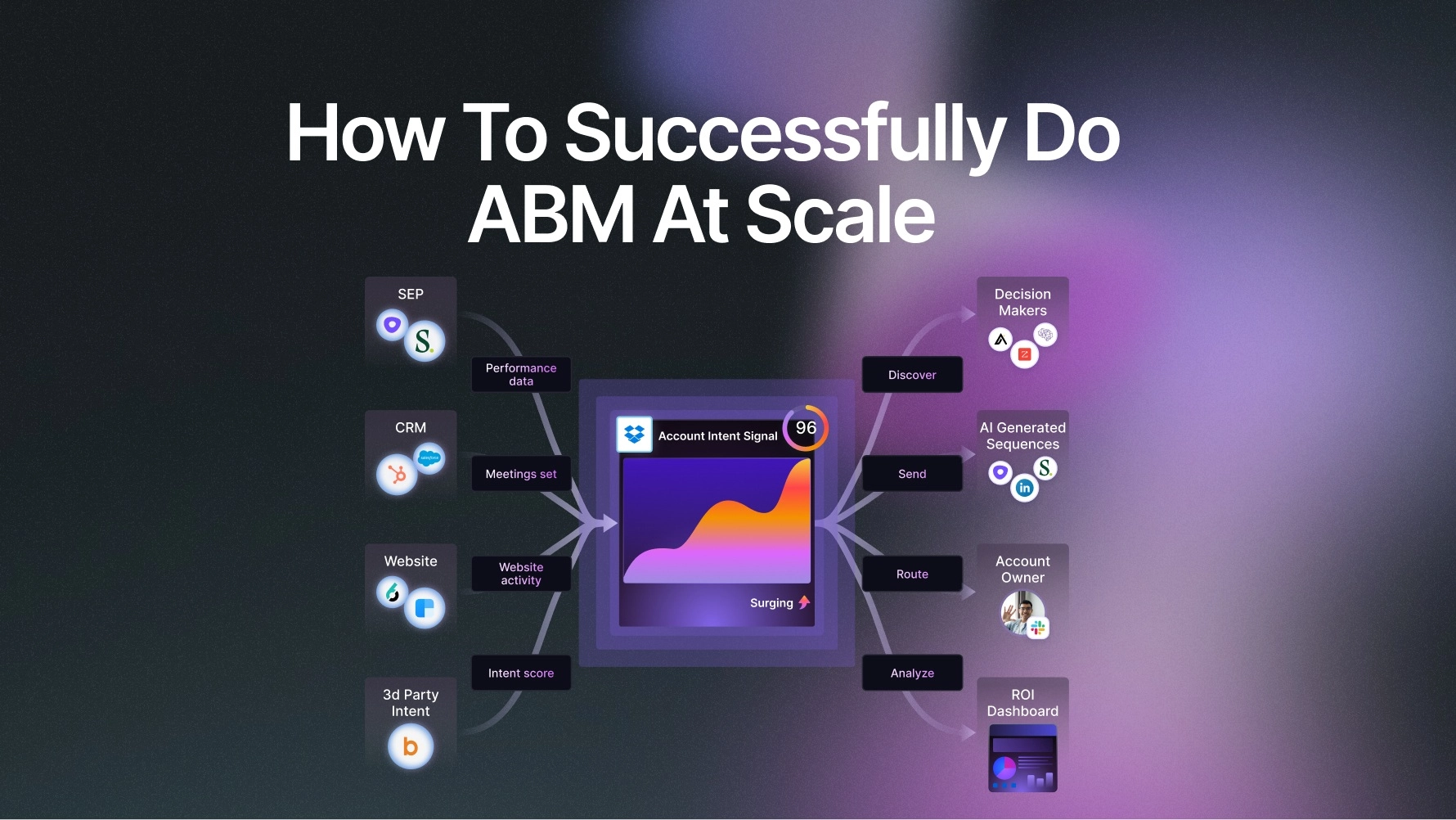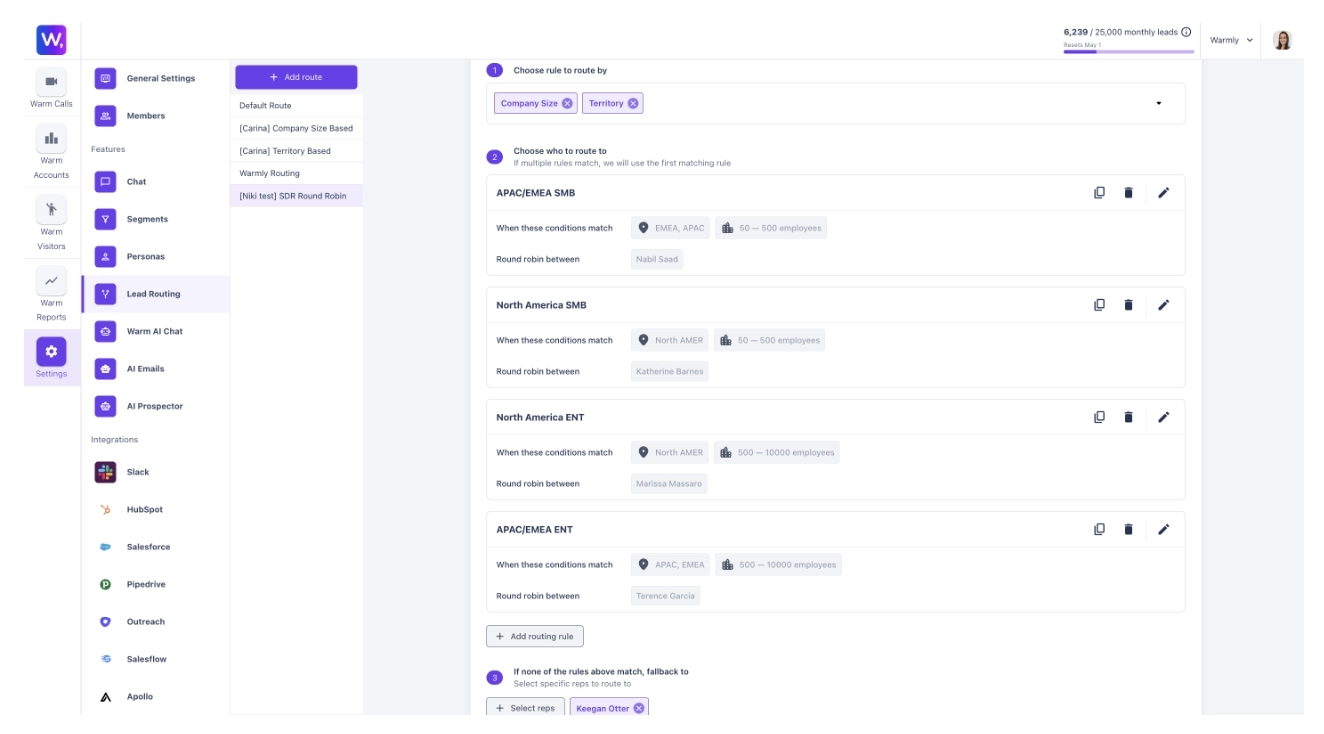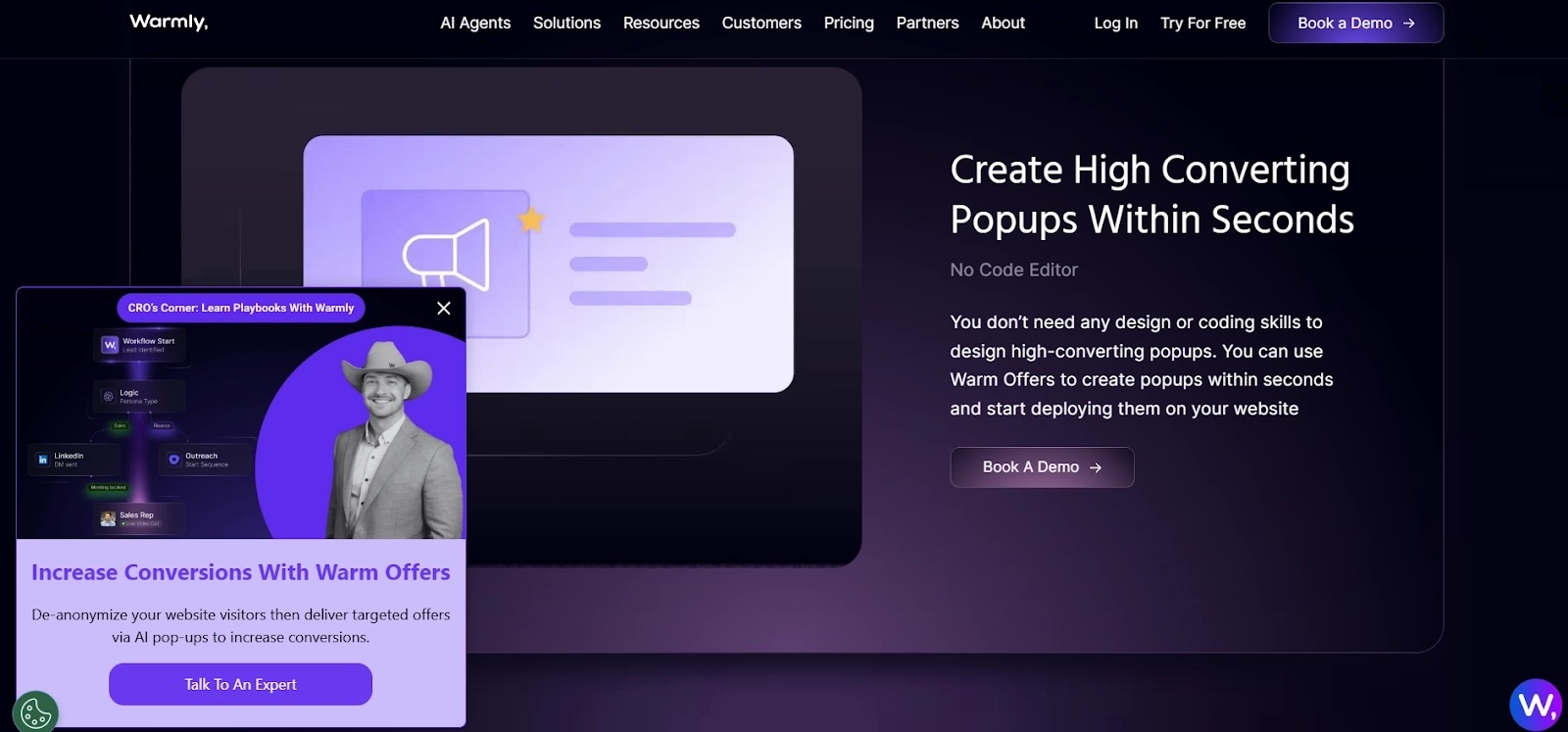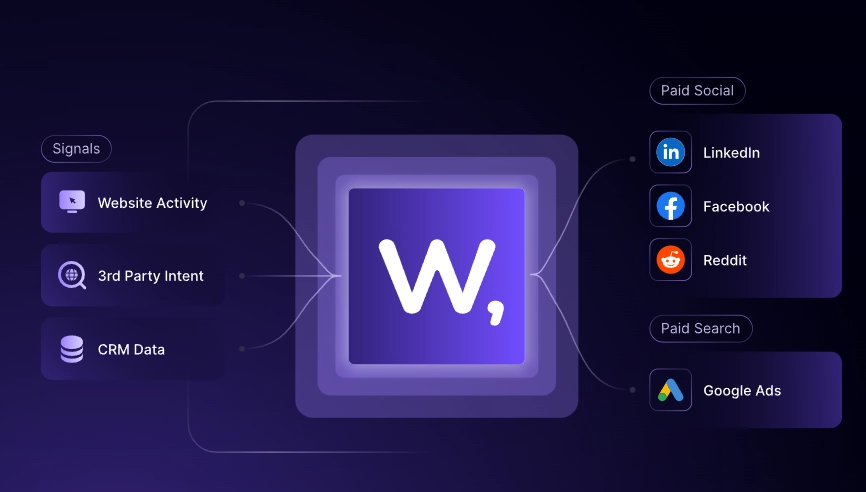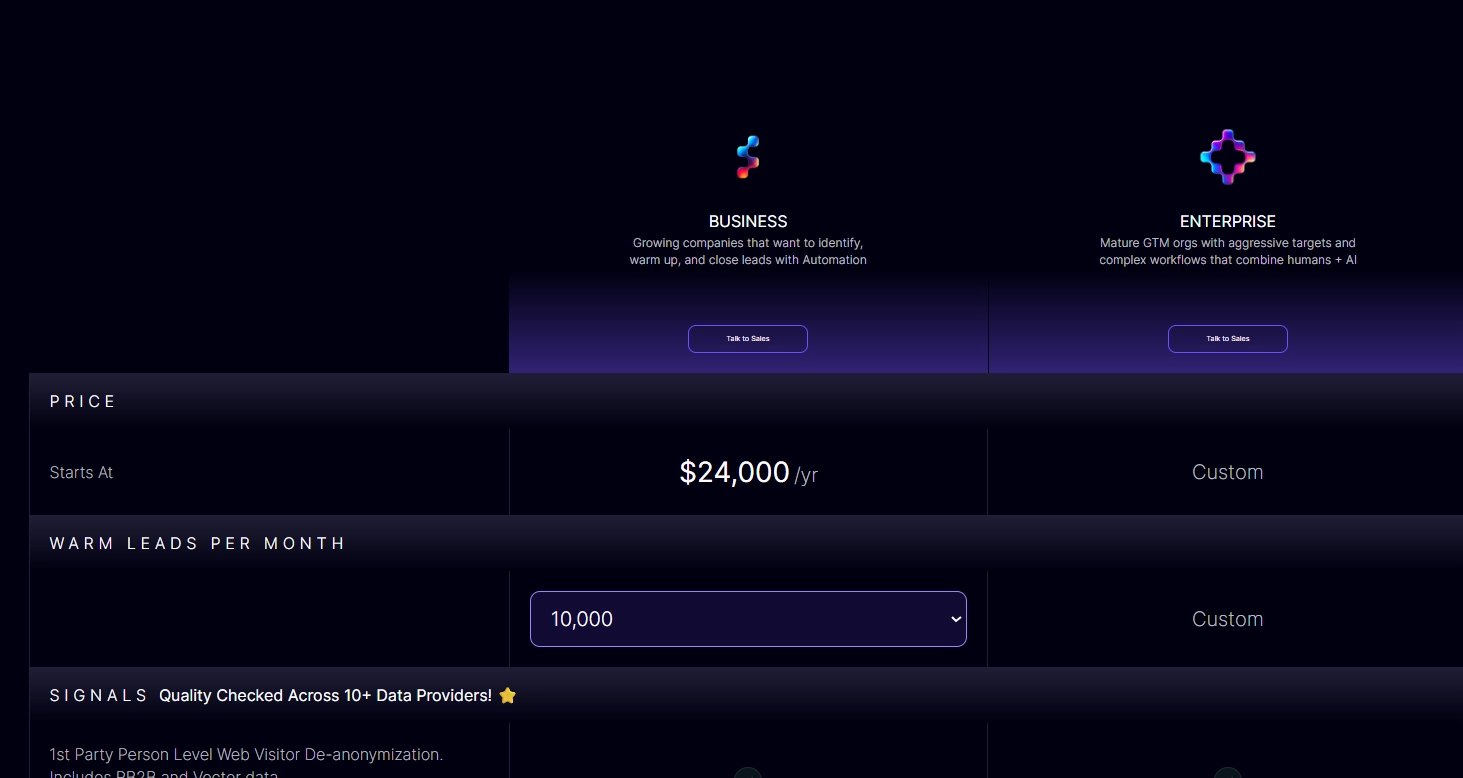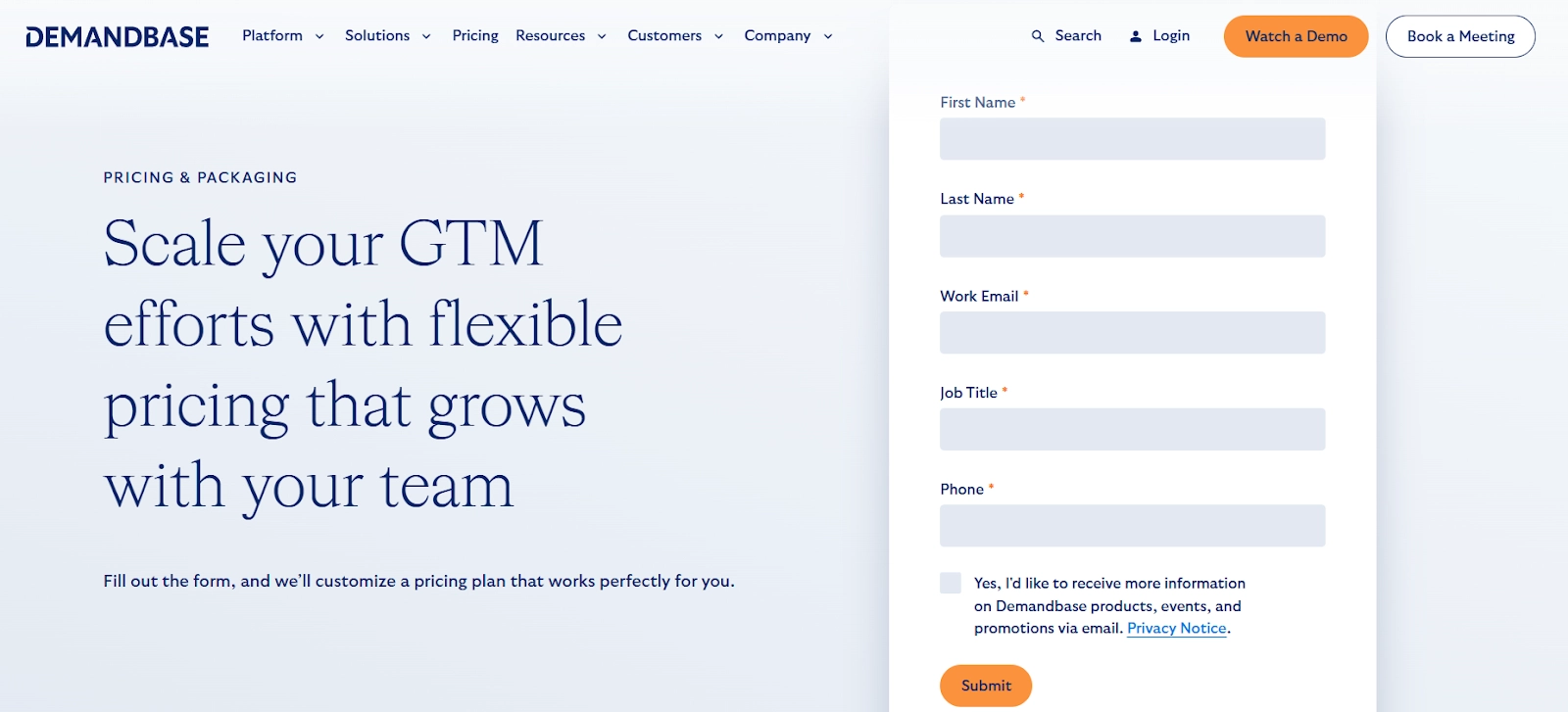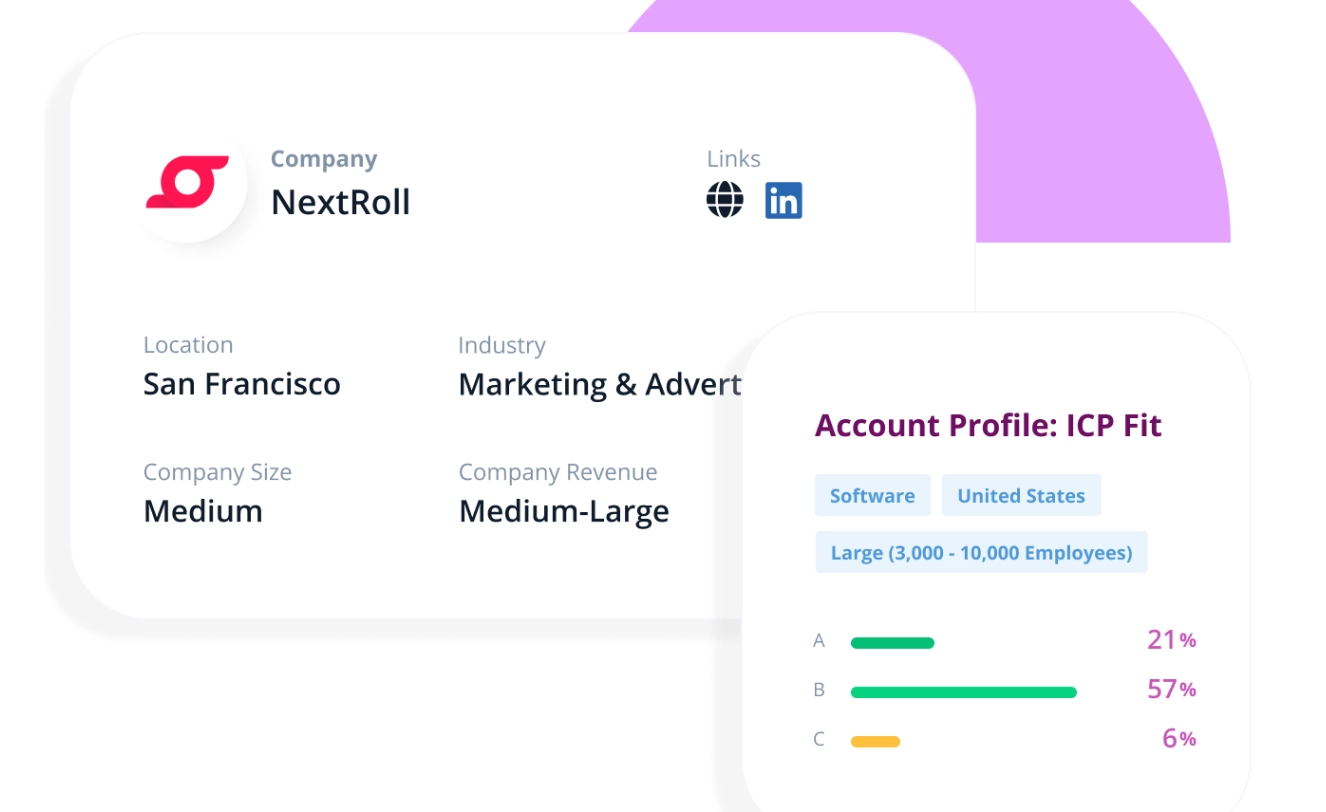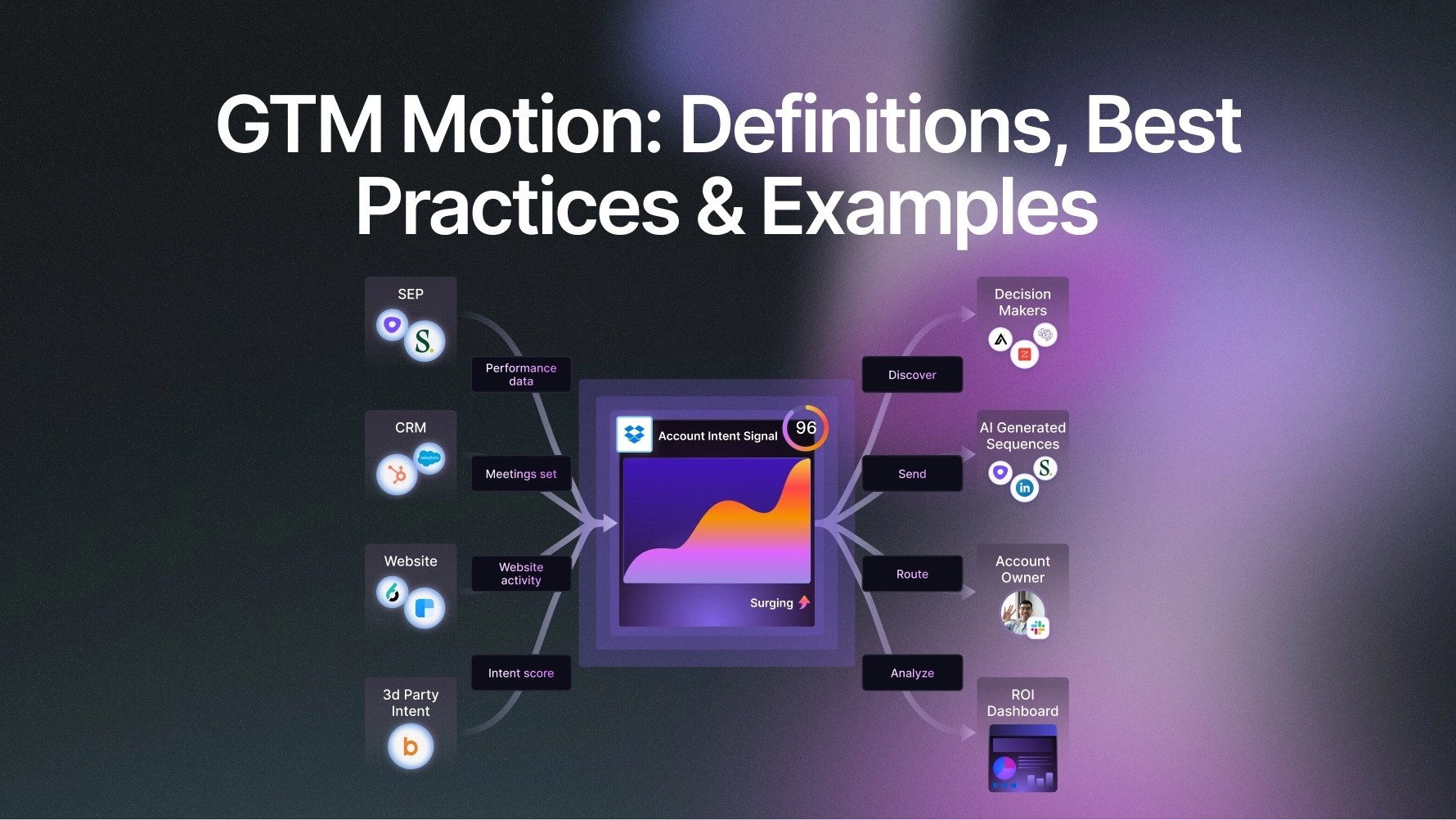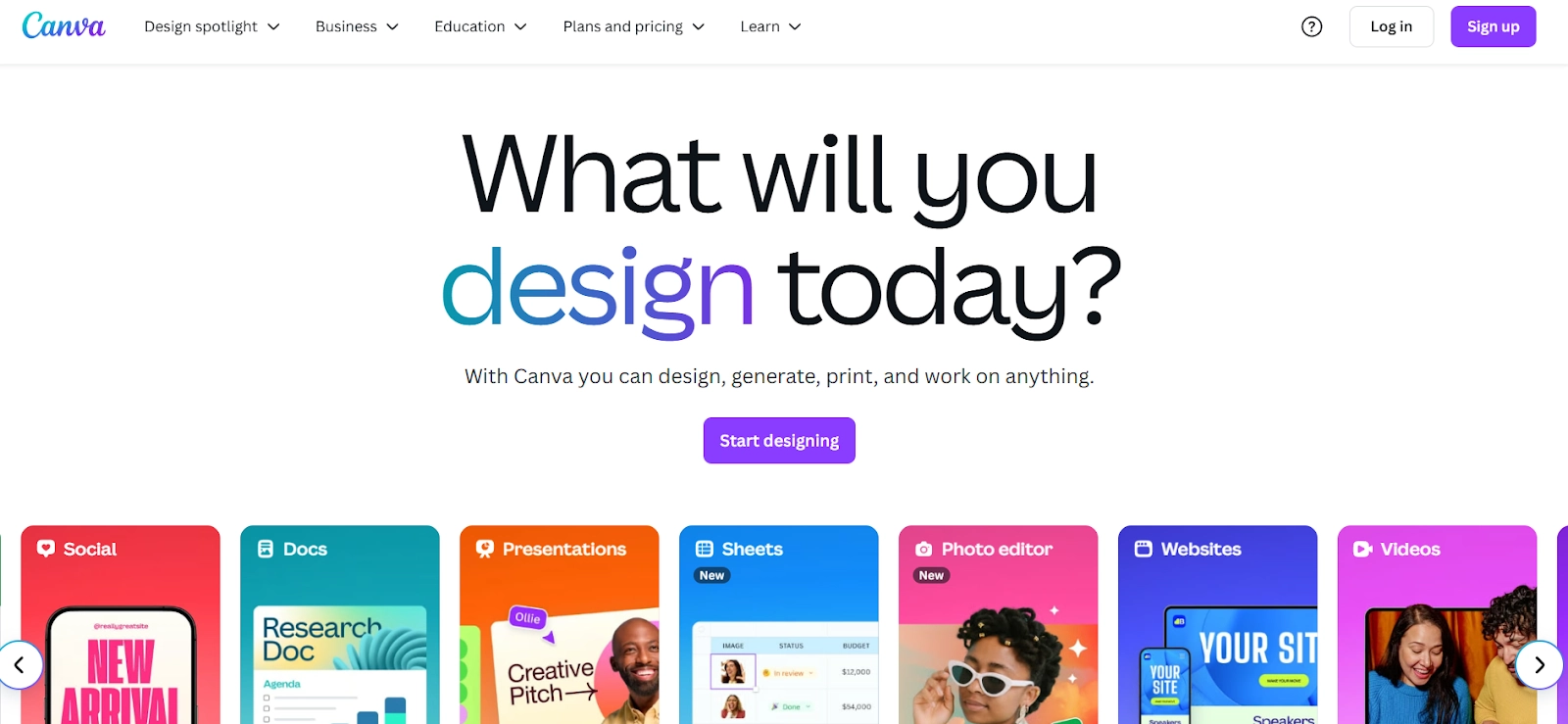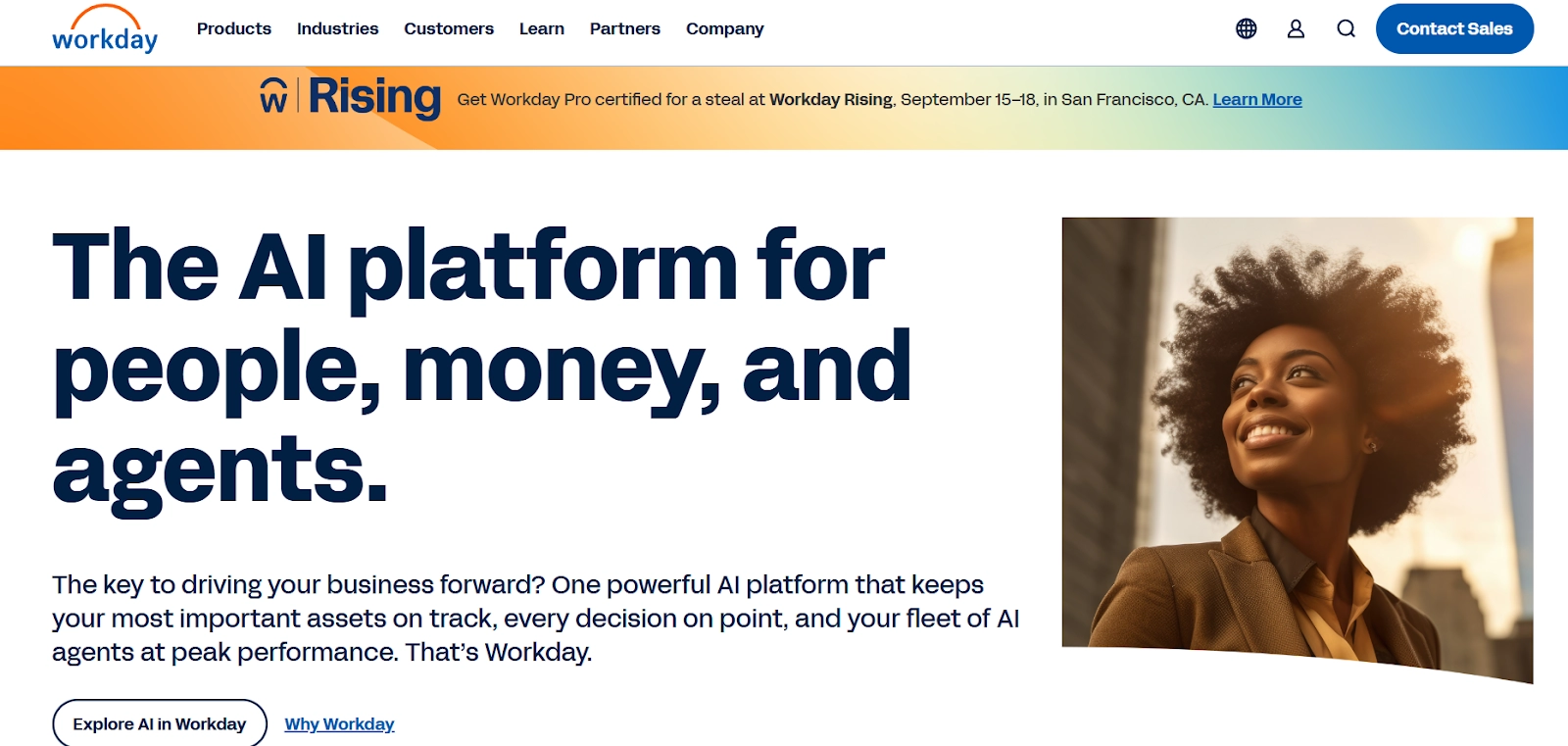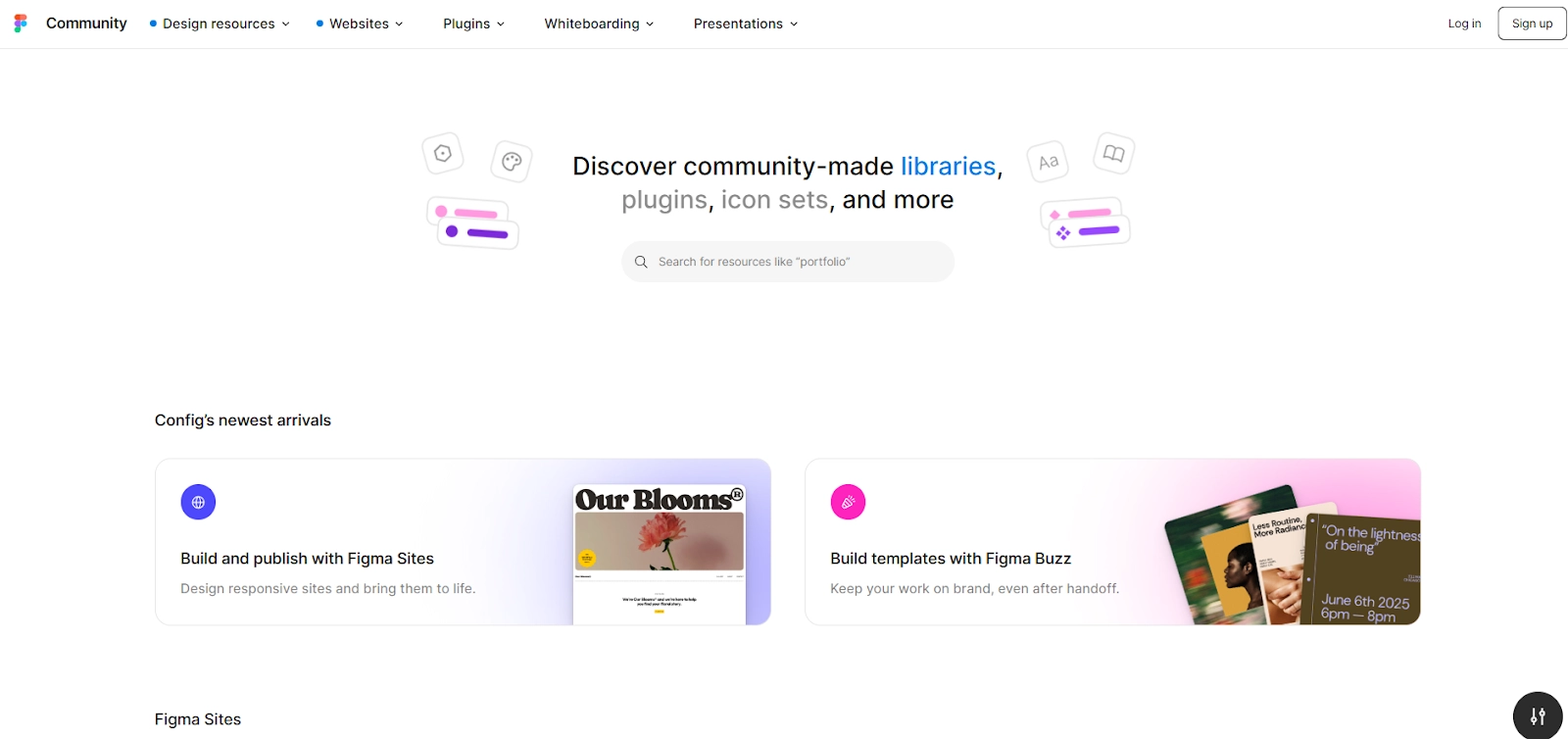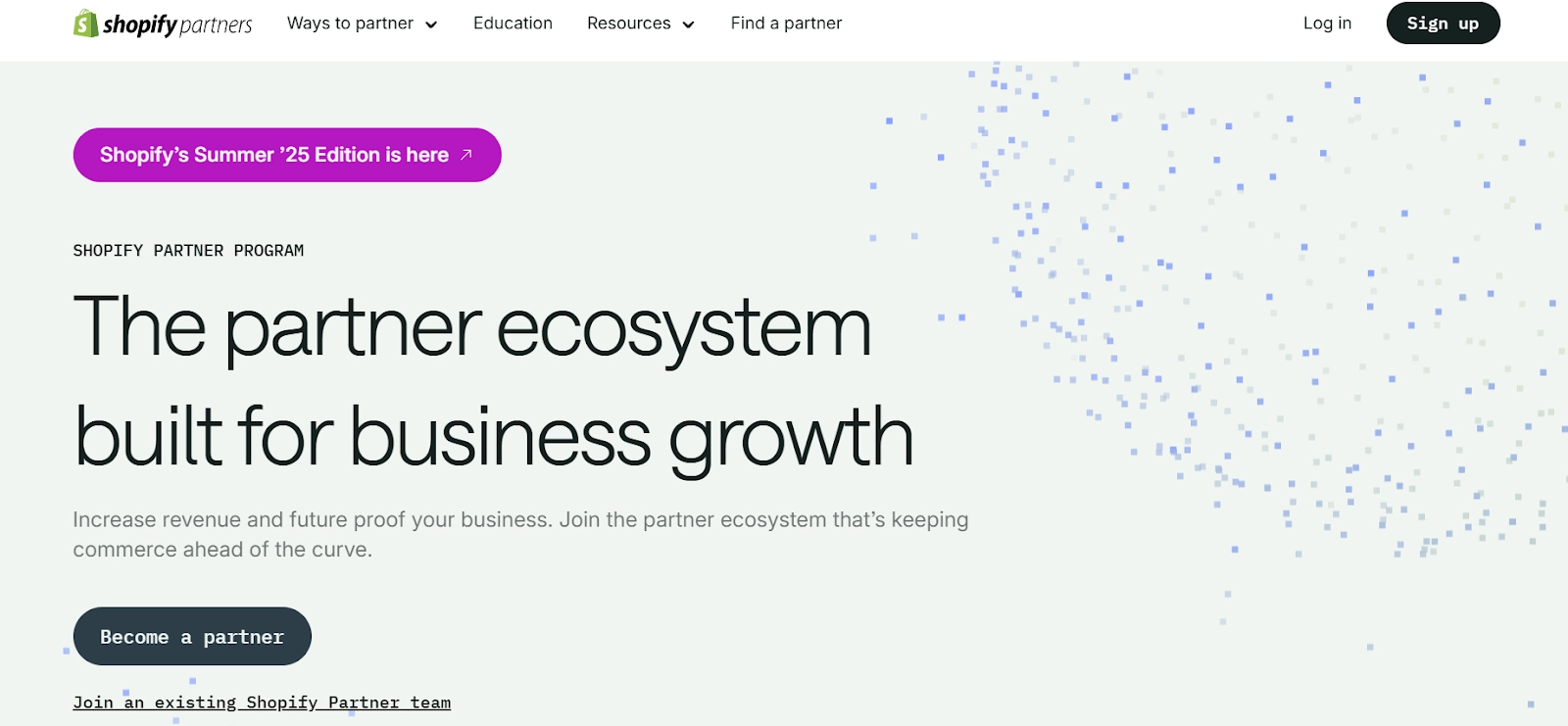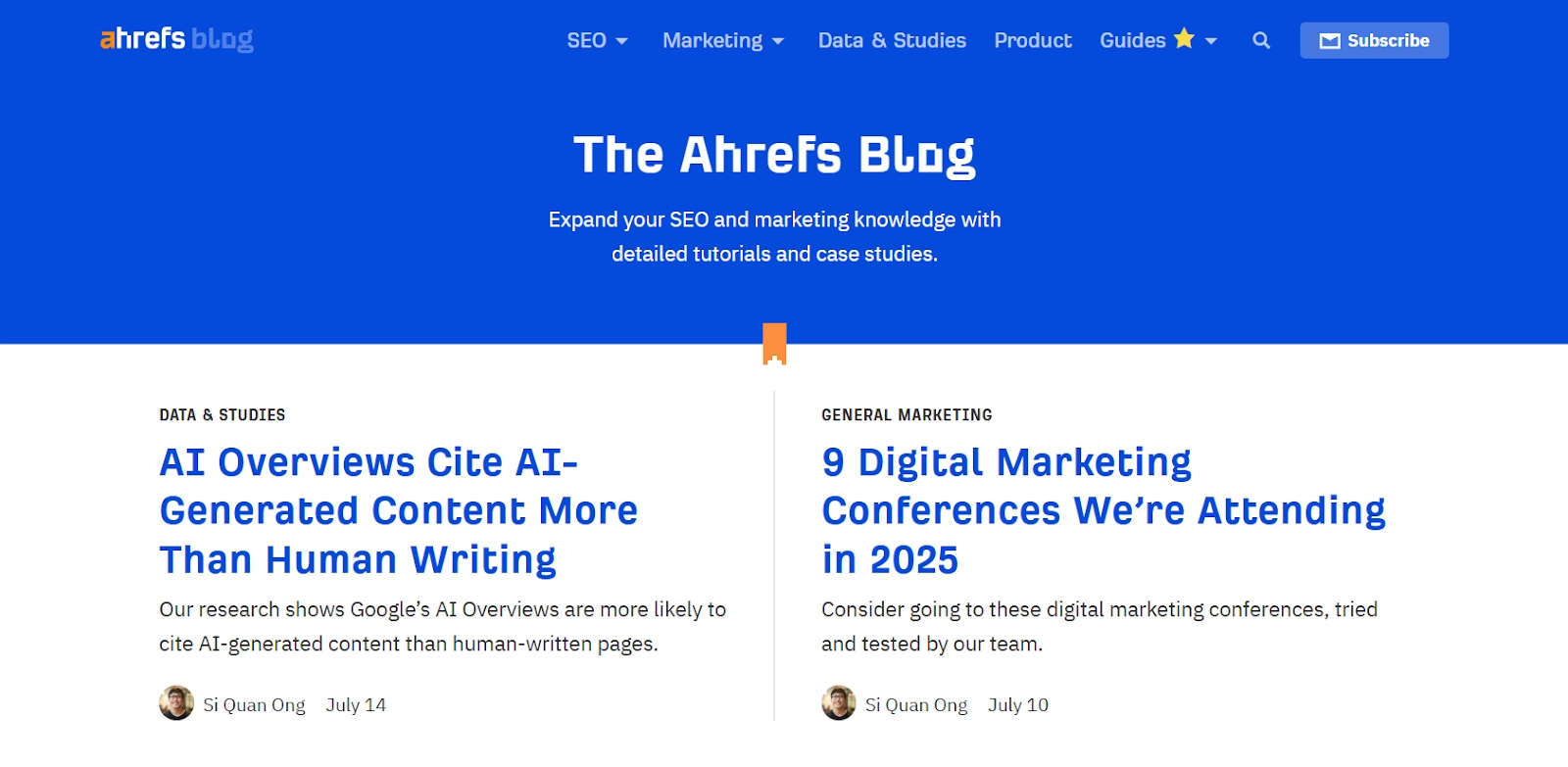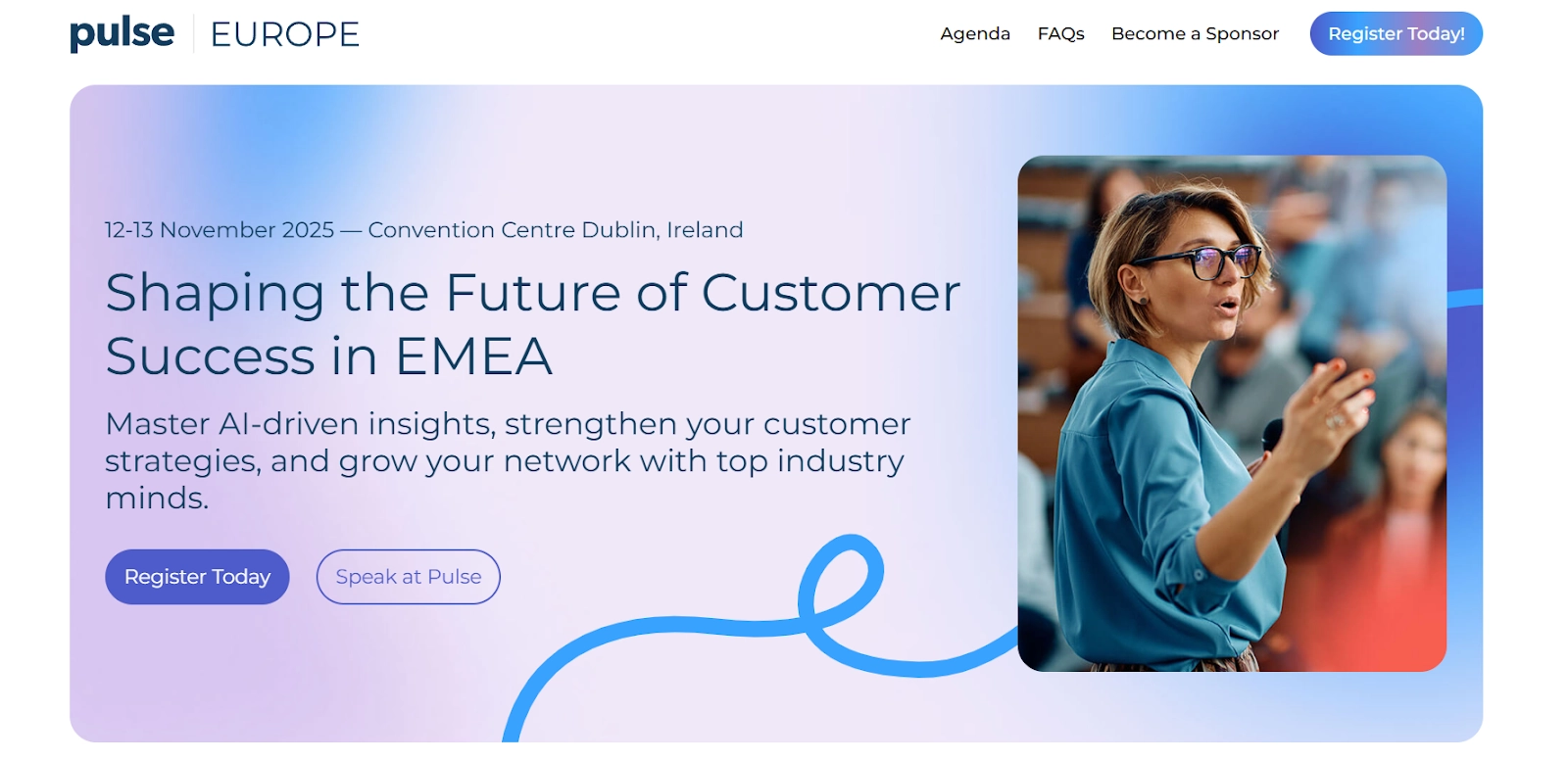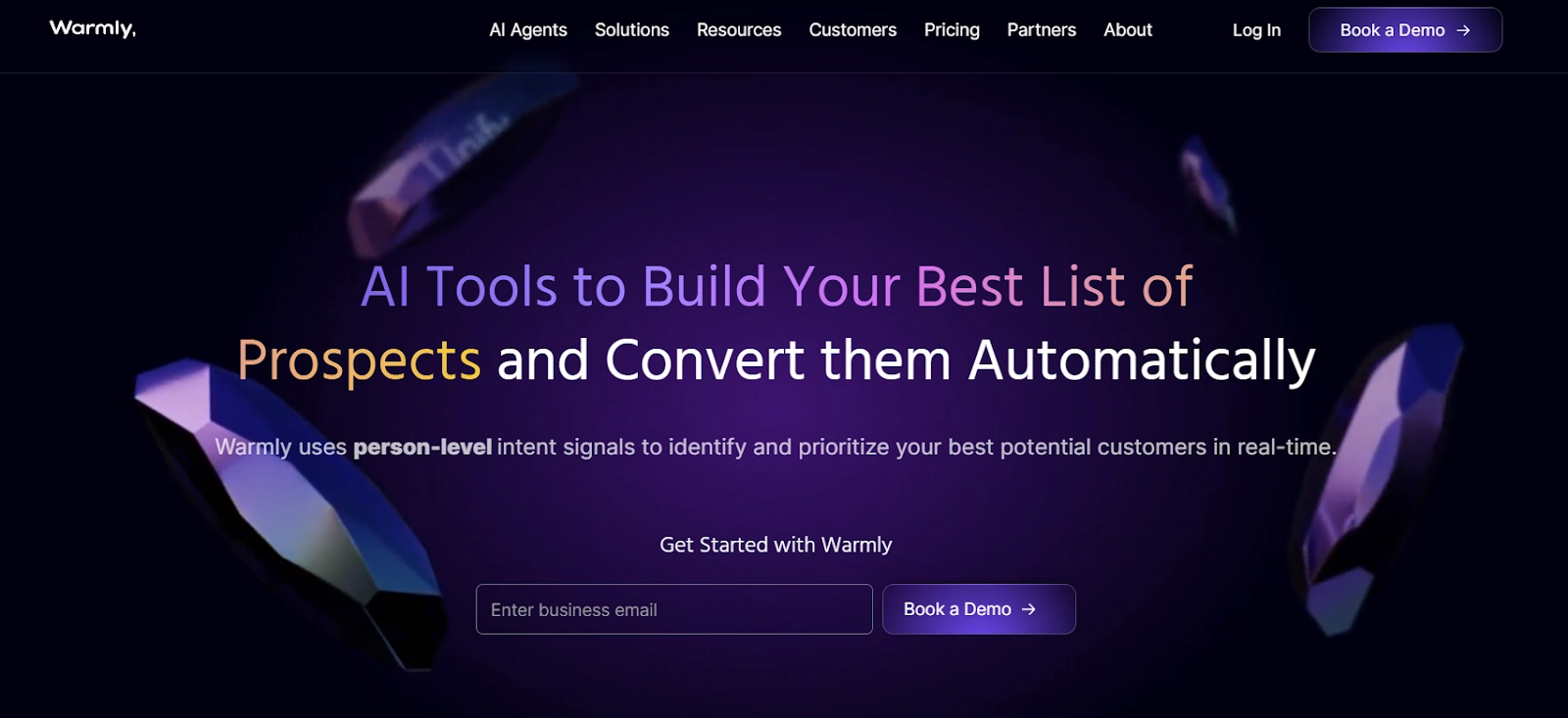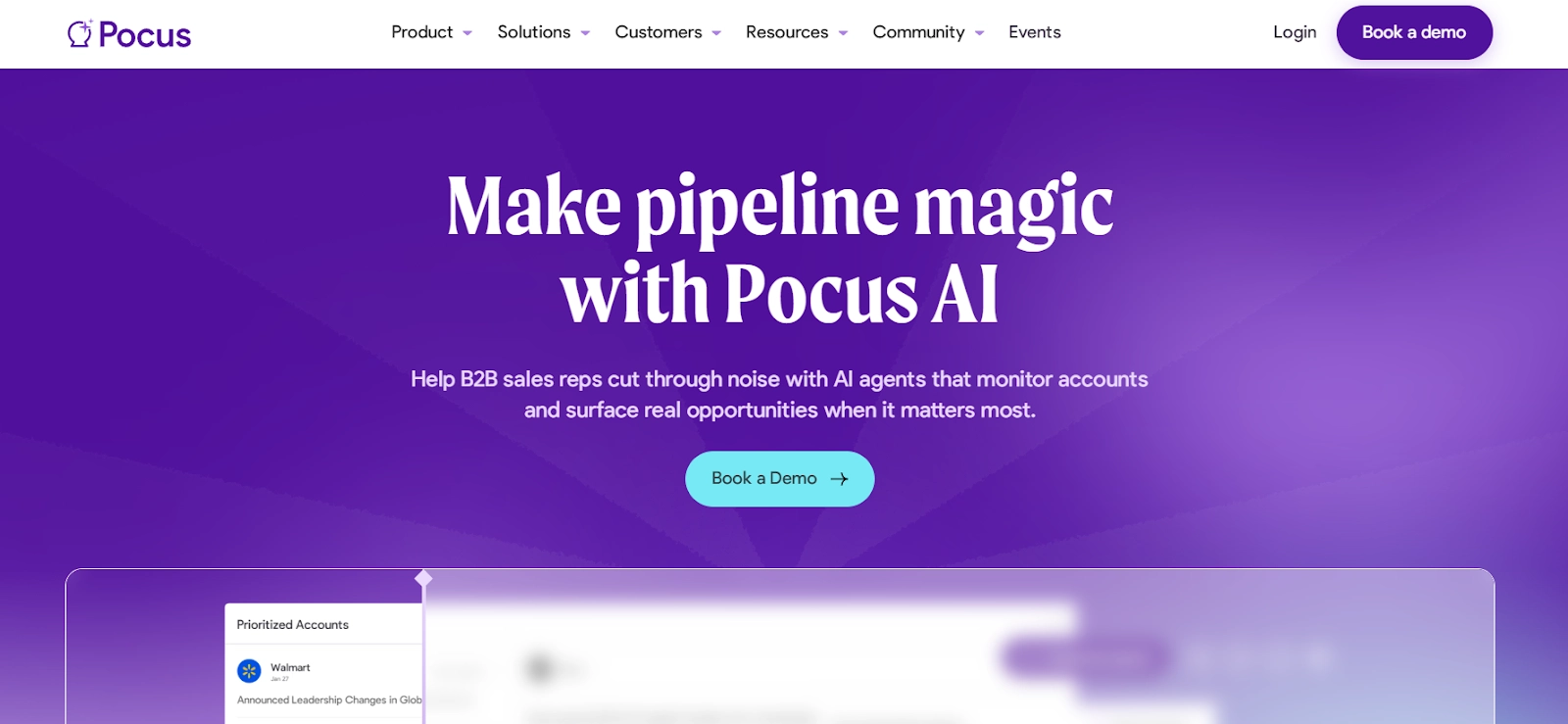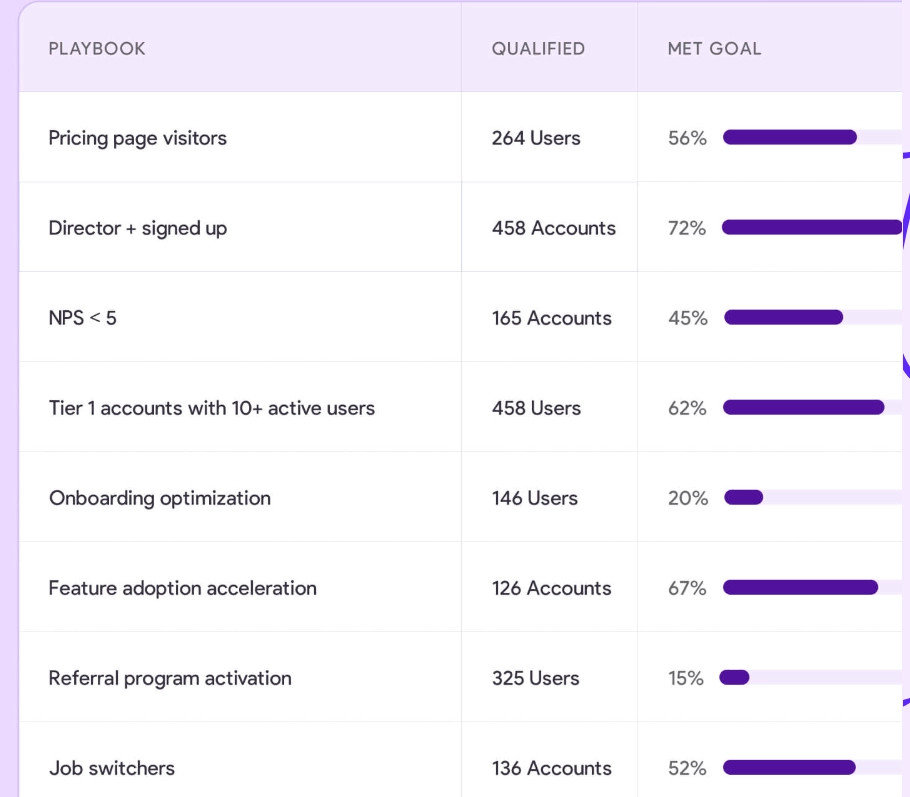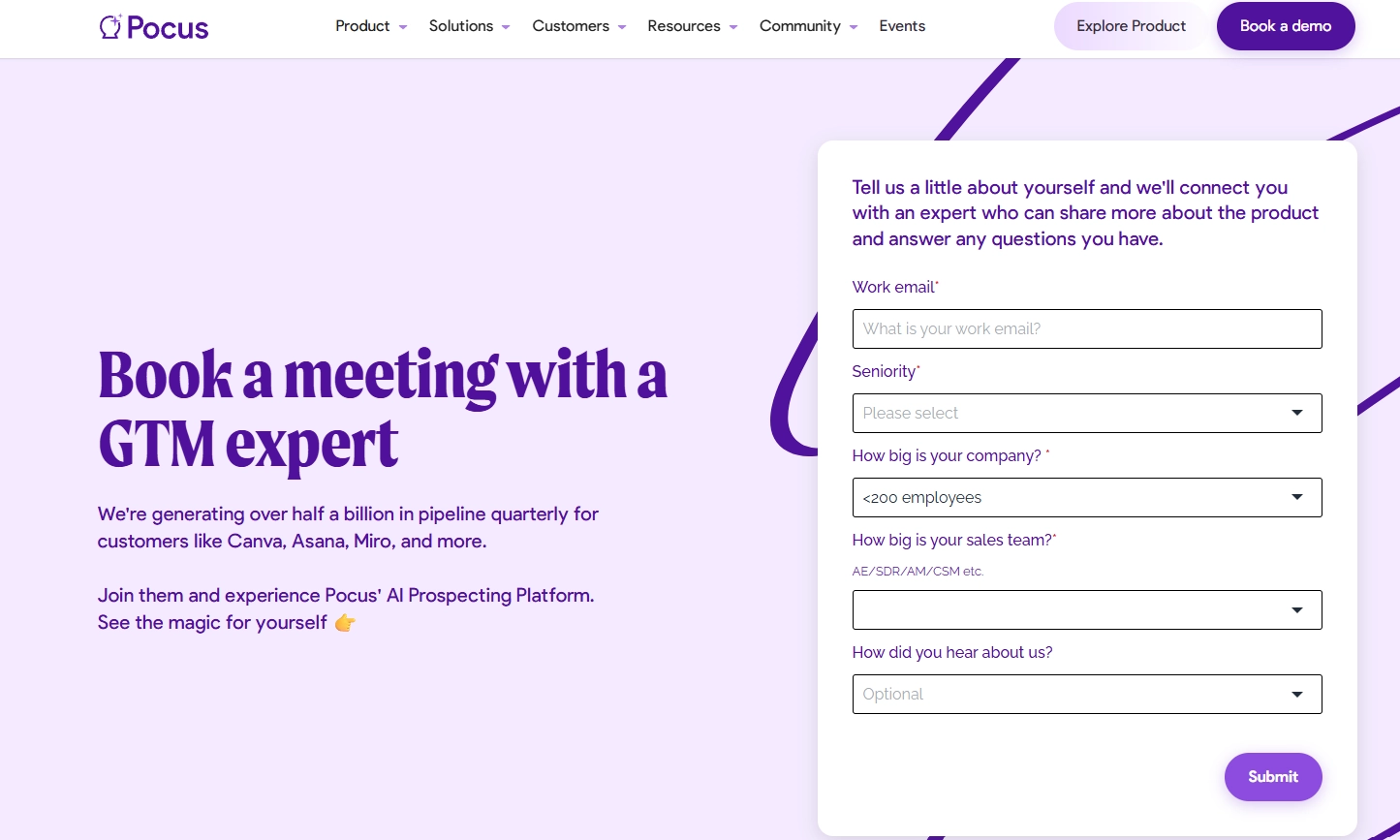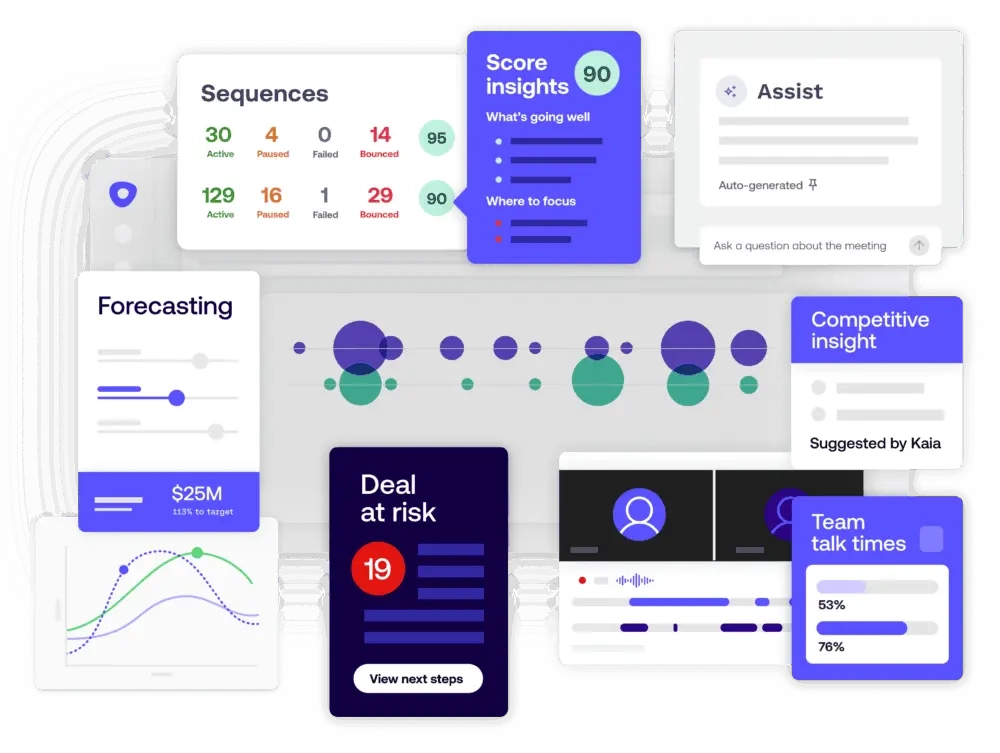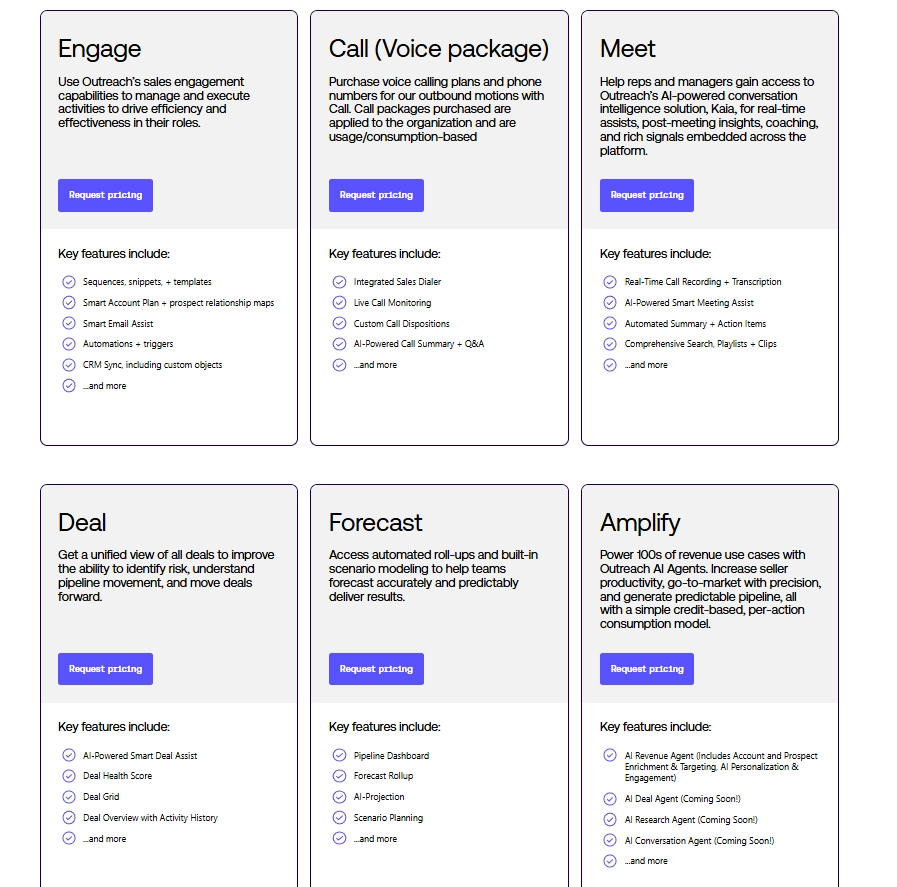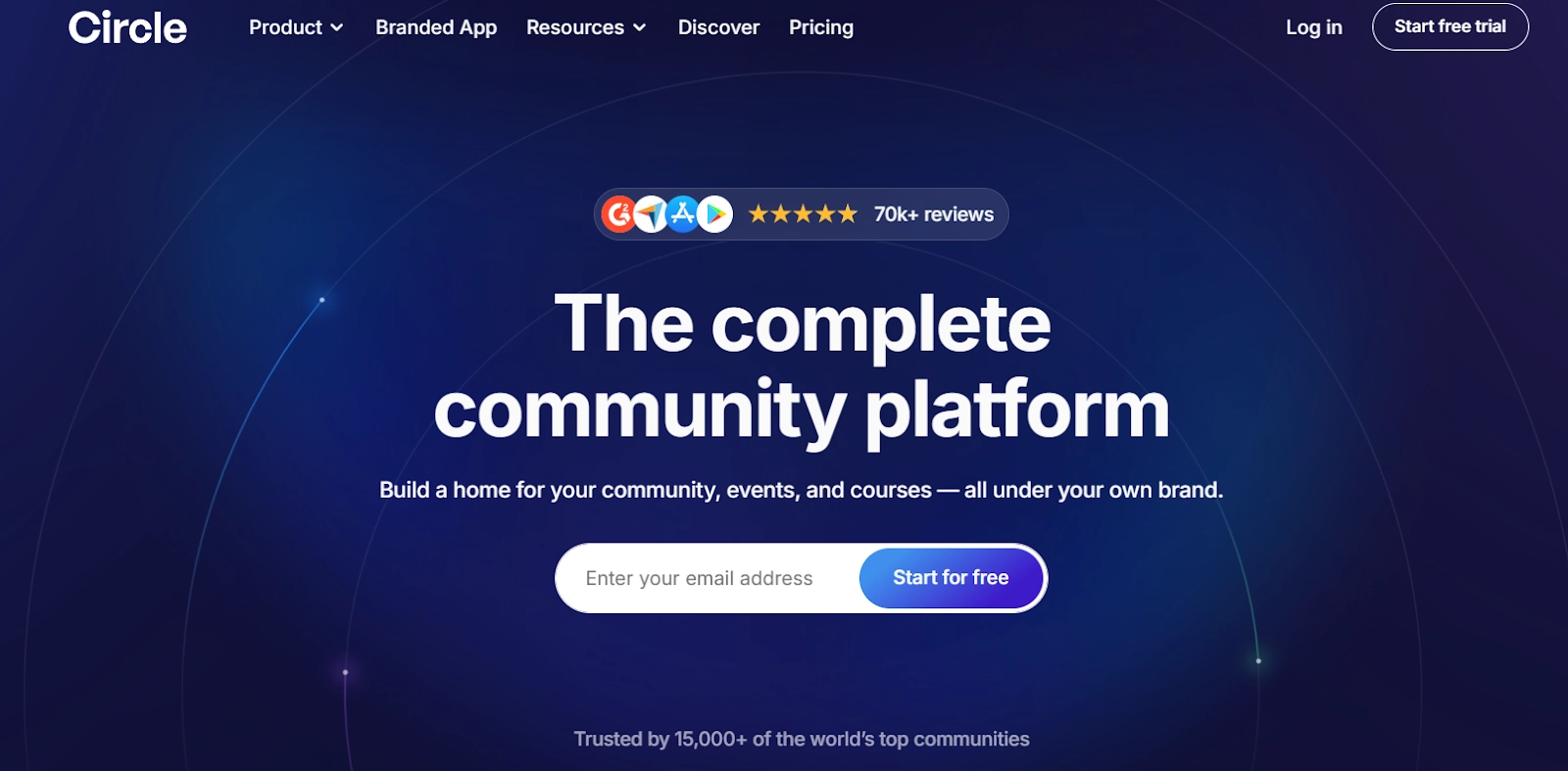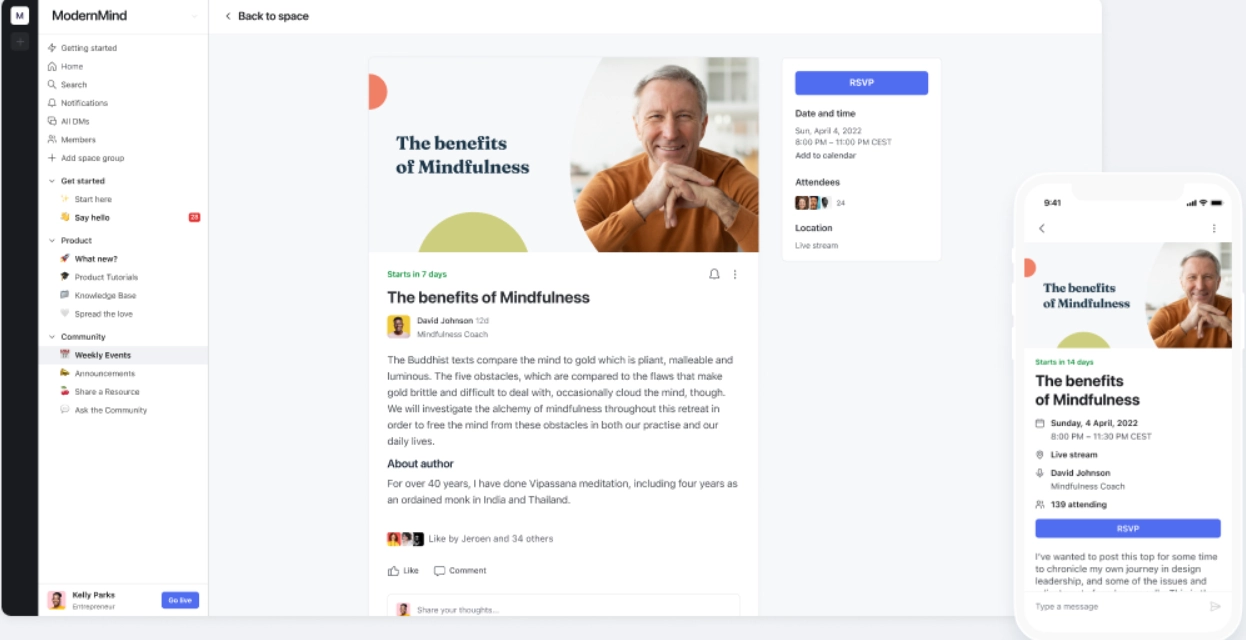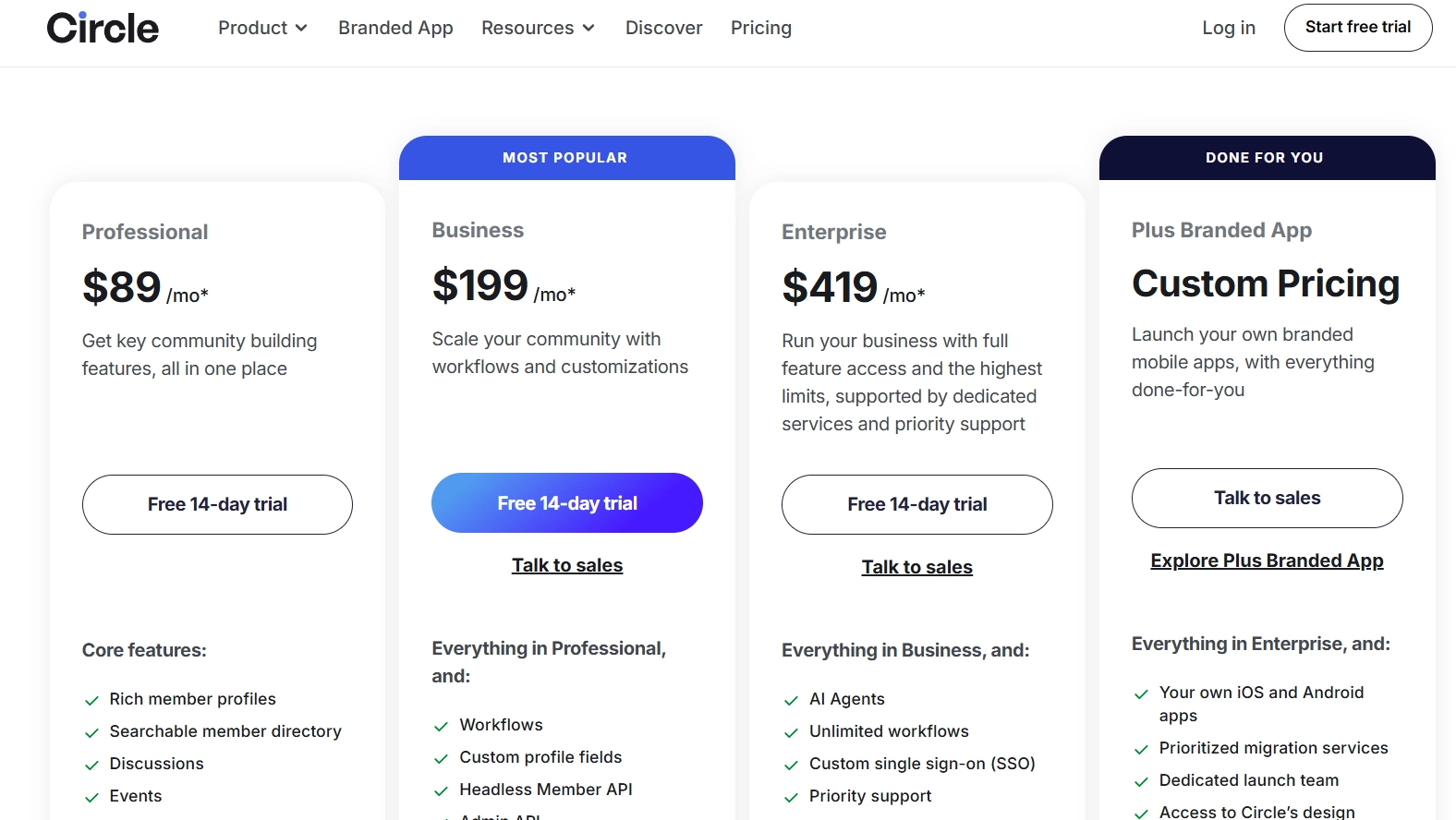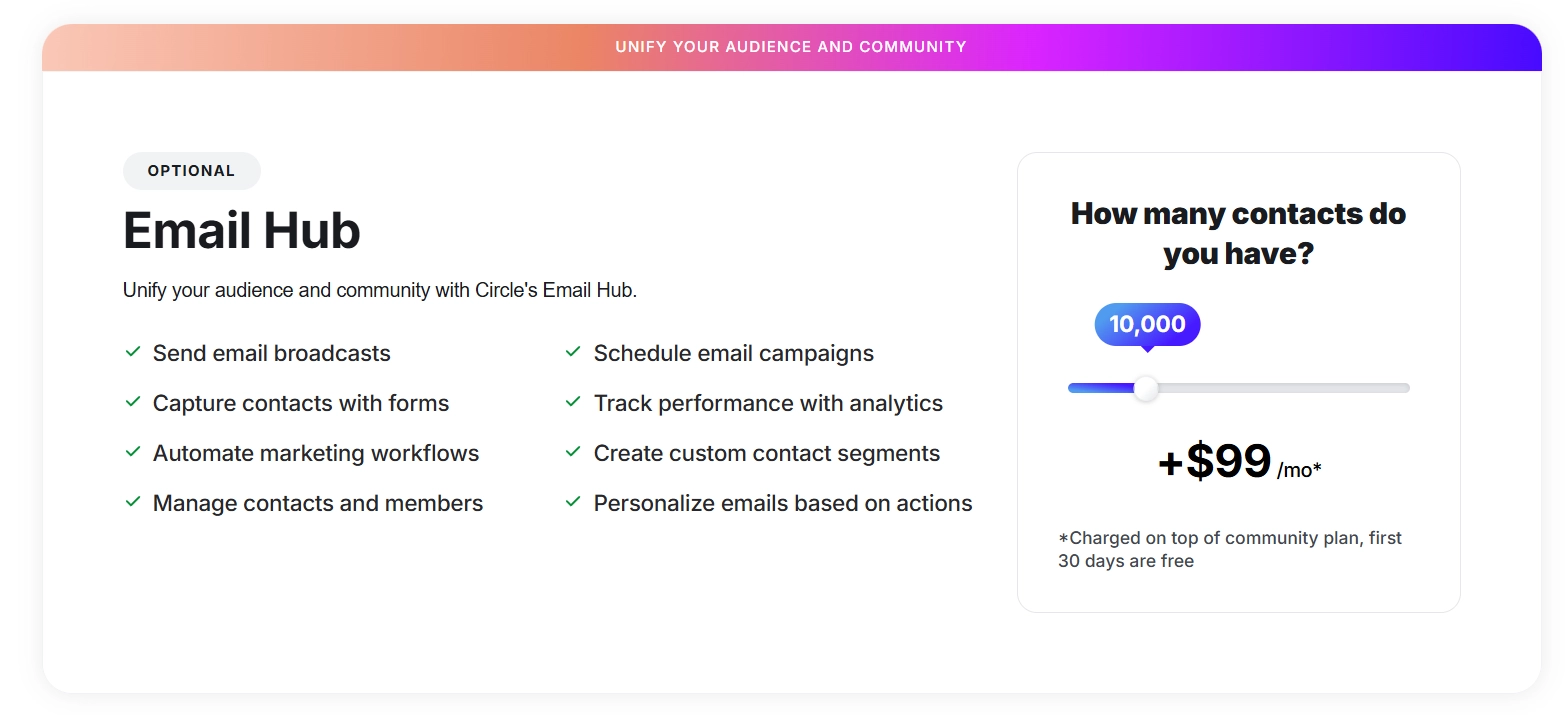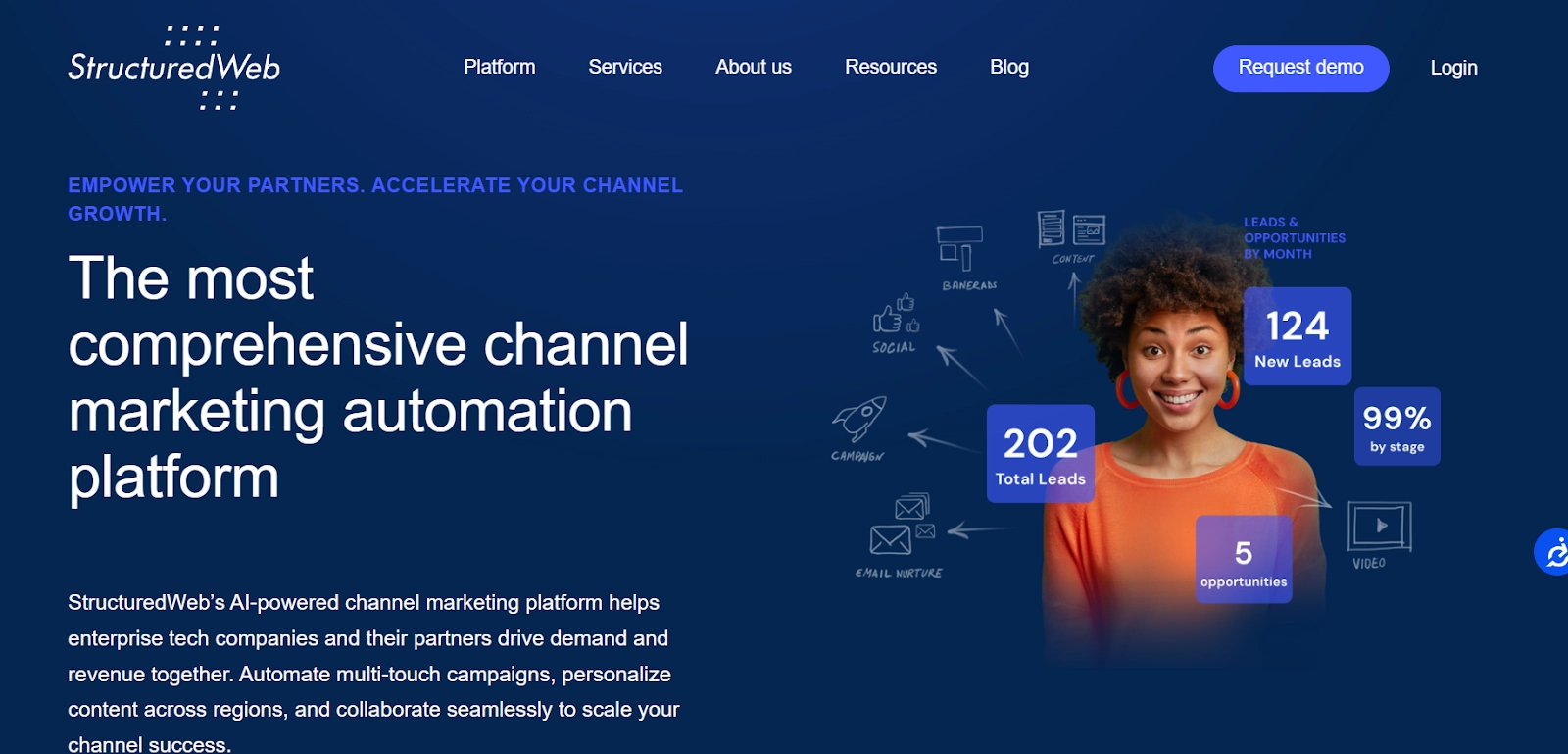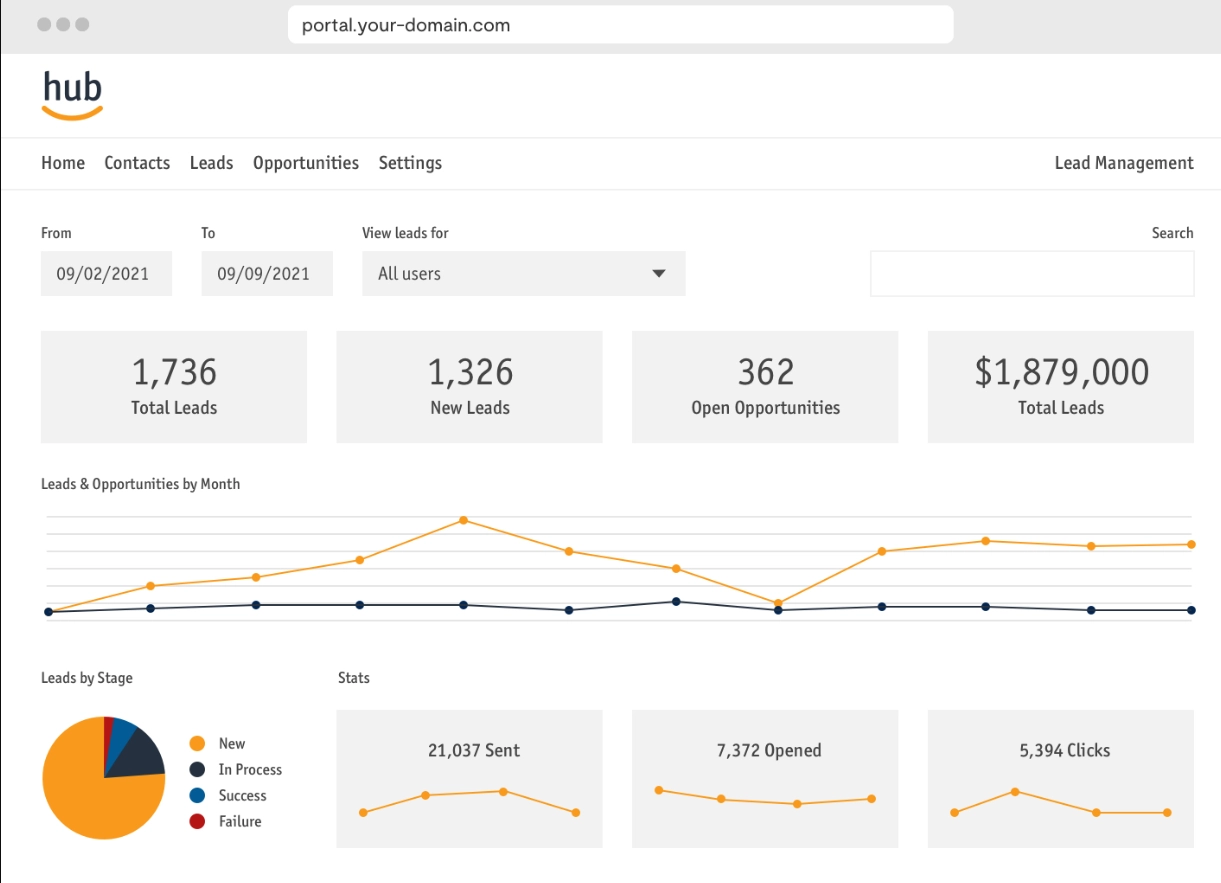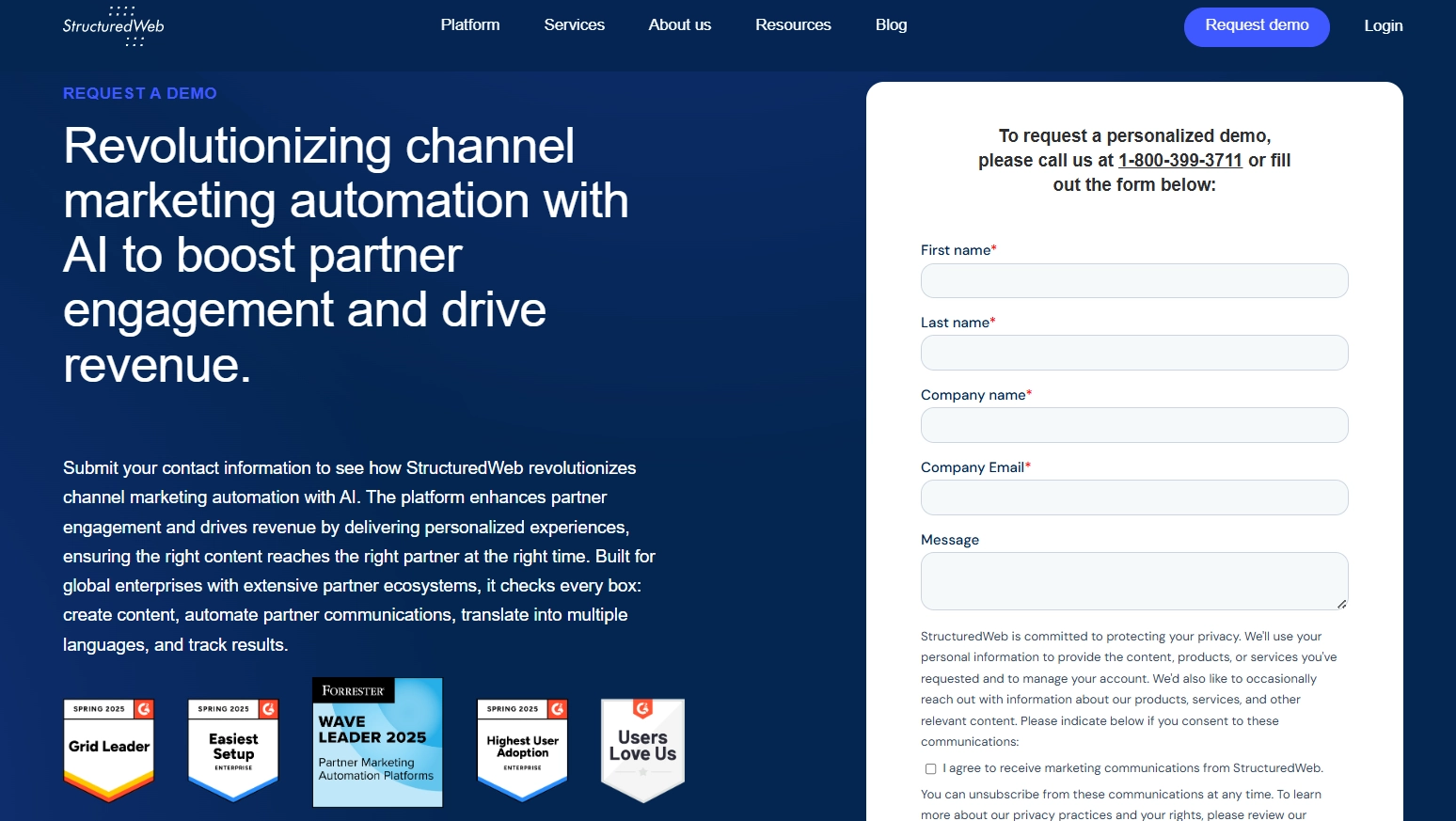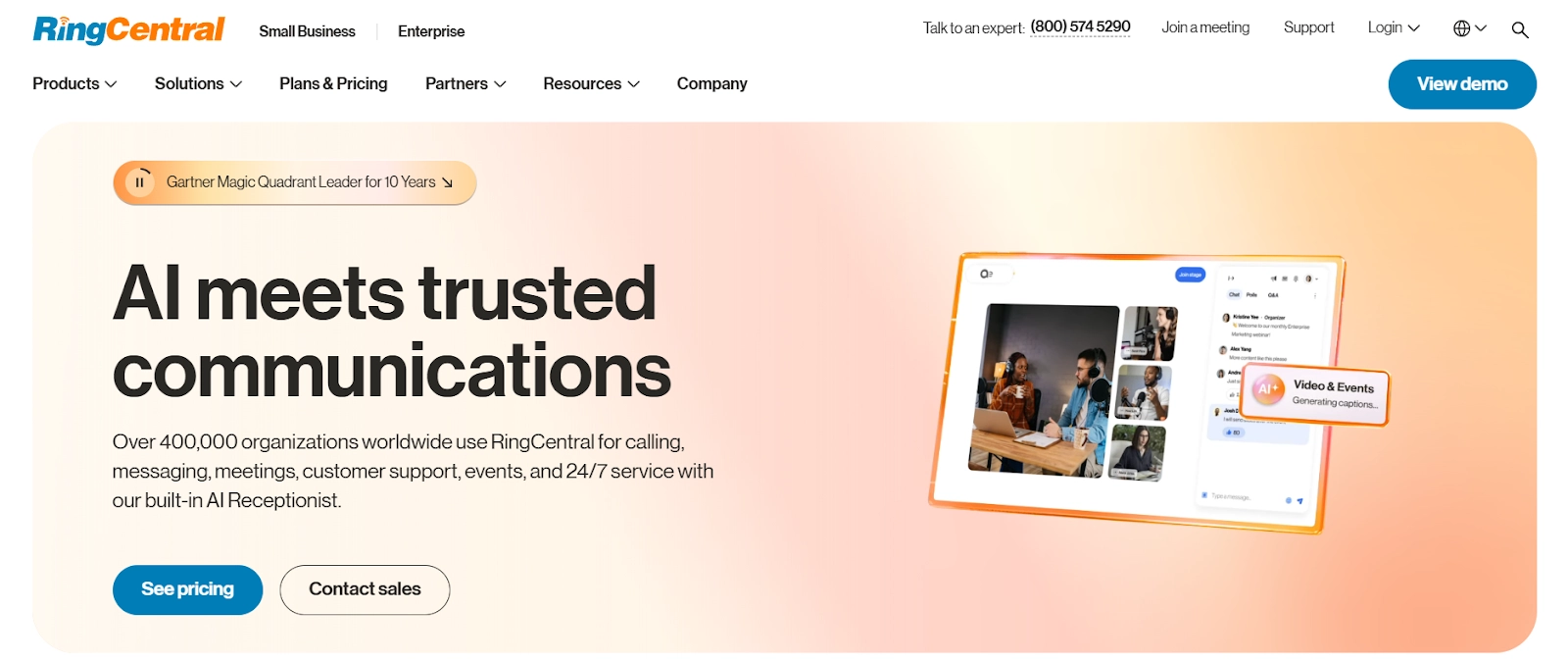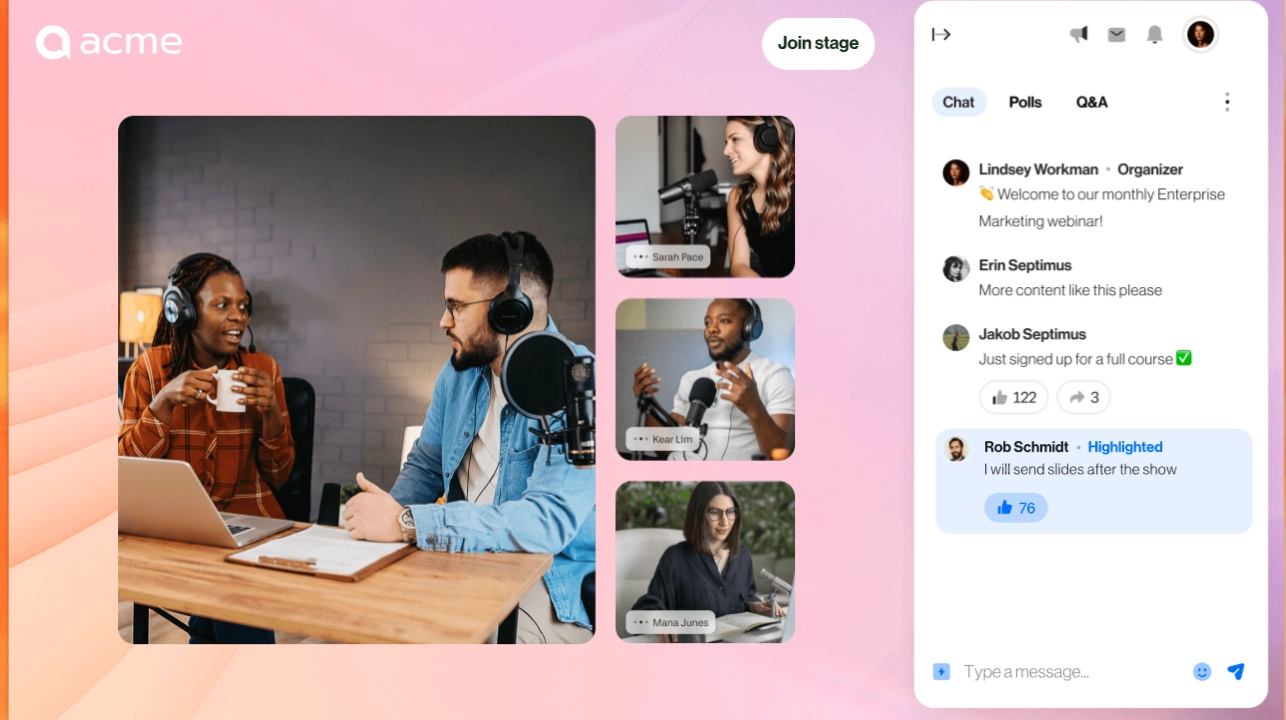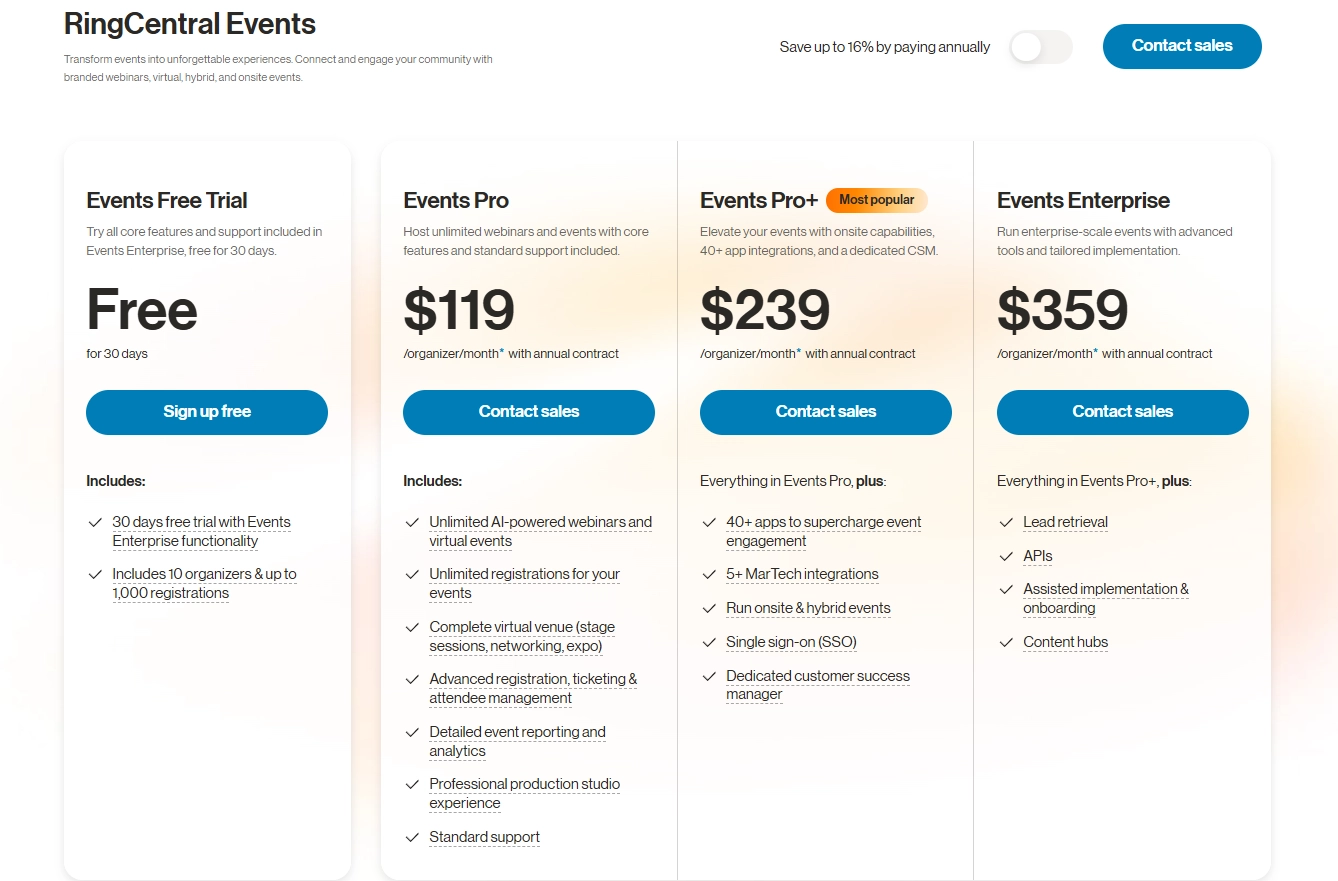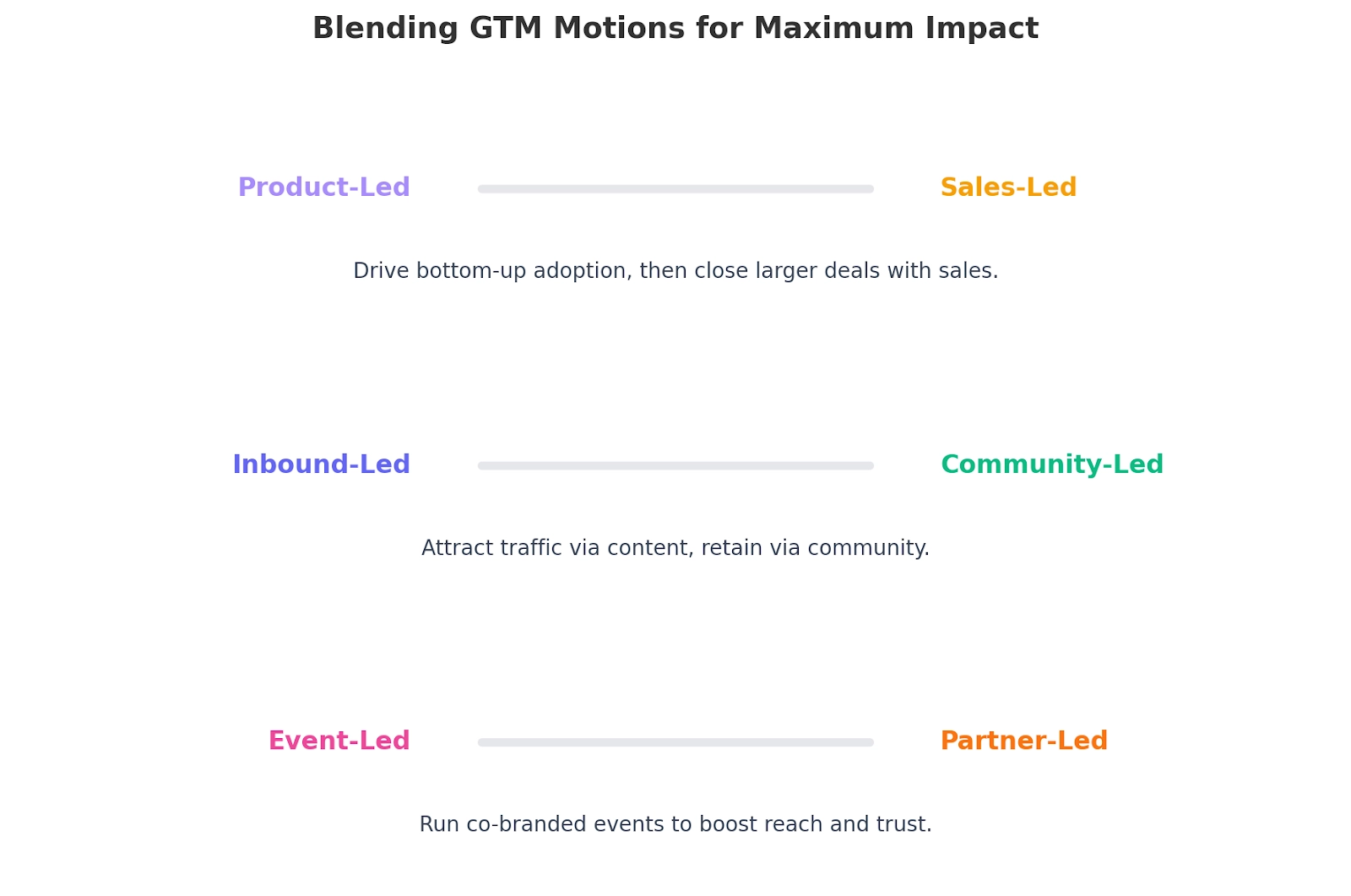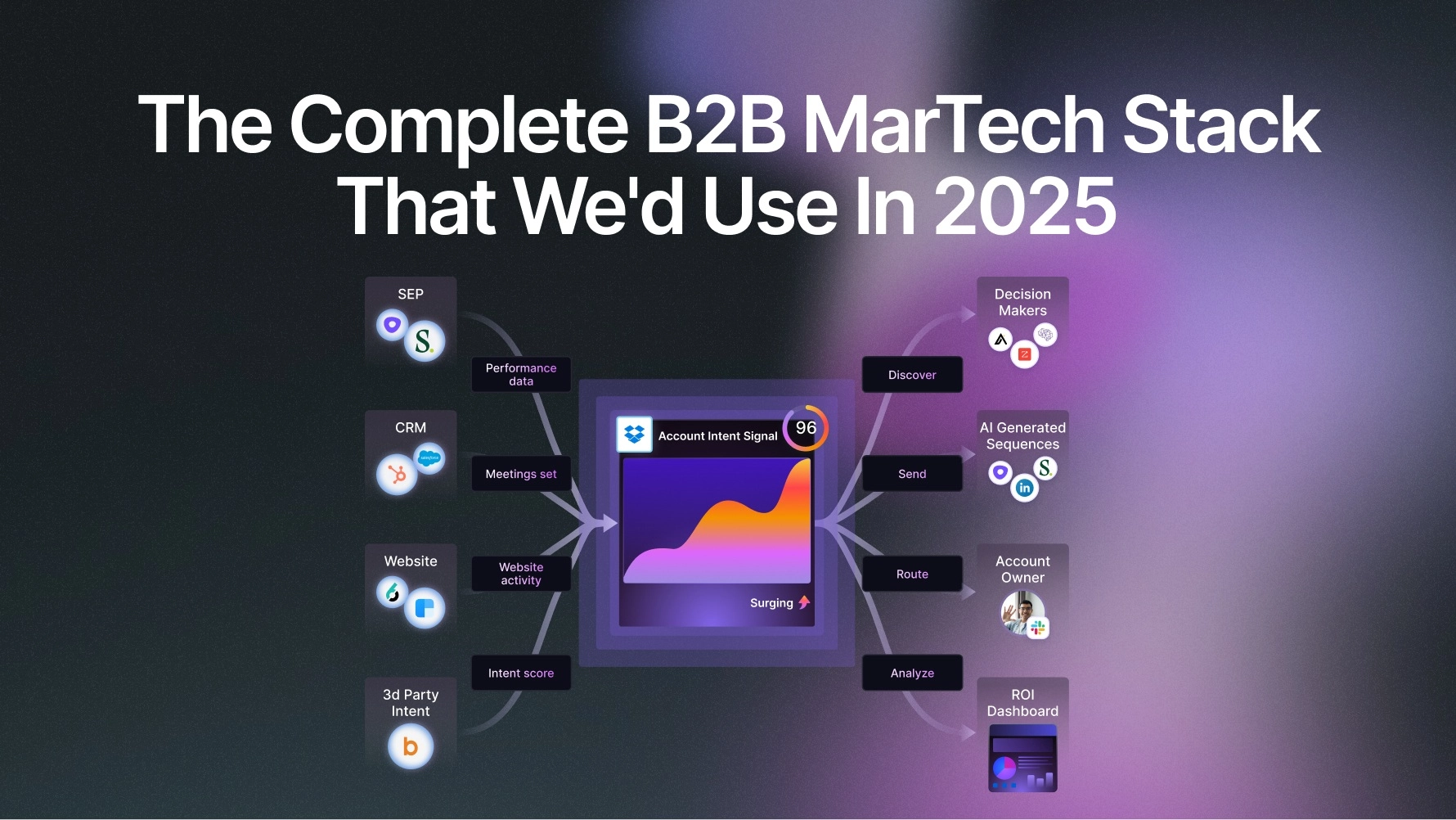
The Complete B2B MarTech Stack That We'd Use In 2025
A proper B2B martech stack can help you win more deals faster by automating repetitive tasks, delivering actionable insights, and creating personalized buyer experiences.
TL;DR
- Building a B2B MarTech stack requires aligning tools with the buyer journey, ensuring strong data architecture, and balancing scalability with affordability.
- Warmly can be your core ABM engine, offering website visitor identification, intent data, sales automation, live engagement, and a massive B2B prospect database.
- Complementary tools like HubSpot, Salesforce, Adzooma, Jasper, Sprout Social, Kit, Mixpanel, and Webflow Optimize cover CRM, demand gen, content, social, email, analytics, and personalization needs.
Before we start, I wanted to go over some of the factors to consider when you’re building out your B2B marketing tech stack: ⬇️
Factors to consider when building out your B2B marketing tech stack
The main factors to consider when assembling a B2B martech stack include alignment with the buyer journey, your data architecture, scalability, and overall affordability.
Let’s dive deeper into each one of them: ⬇️
#1: How well does the stack align with your business strategy and buyer journeys?
You should start building out your B2B MarTech stack by defining the specific outcomes you need the stack to deliver, such as pipeline velocity, lead quality, account-based penetration, and/or customer retention.
If I were you, I’d map each capability to stages of your buyer journey and the channels you prioritize so you can see where overlaps or gaps exist.
➡️ Avoid buying shiny solutions that don’t move a core KPI. Our philosophy on tech stack building is that every component should trace back to a measurable result.
#2: What data architecture, ownership, and integration capabilities are required?
The question you need to ask yourself here would be what customer and behavioral data you need to collect, where the system of record will be (e.g., CRM, CDP), and how you’ll maintain data quality.
Important integration considerations here will include:
- Real-time APIs and webhooks for event-driven use cases.
- Prebuilt connectors to CRM, analytics or ad platforms.
- ETL/ELT paths for analytics and business intelligence.
When we were building out our B2B marketing tech stack, we prioritized a clear data model, as we knew that bad data breaks even the fanciest automation.
#3: How scalable, flexible, and affordable should the stack be?
Next up, you want to figure out whether the vendors scale with data volume, account complexity, and whether the pricing structure becomes prohibitive as you grow.
💡Pro Tip: Consider modularity (i.e., would you be able to replace one layer without ripping out the rest?), the risk of vendor lock-in, and the software’s partner ecosystem for complementary capabilities.
➡️ Good scalability would mean you wouldn’t have to go through an expensive replatforming later.
What’s the ideal B2B MarTech stack in 2025?
Here are our selected tools (we review more inside the article) for an ideal B2B MarTech stack in 2025:
#1: Account-Based Marketing Software: Warmly, with its real-time website visitor identification and sales automation capabilities.
#2: CRM Software: HubSpot, ideal for scaling lead outreach with personalized email sequences.
#3: Advertising & Demand Generation Tool: Adzooma, best for effortless, cross-platform PPC campaign optimization based on granular performance insights.
#4: Content Creation & Ideation Software: Jasper, a nice option for scaling marketing content fast without burning out your team.
#5: Social Media Management Platform: Sprout Social, best for comprehensive social media management, publishing, and analytics for B2B marketing teams.
#6: Email Marketing Platform: Kit, ideal for B2B marketing teams looking to run end-to-end email campaigns and automate audience growth.
#7: Analytics & Attribution Platform: Mixpanel, an excellent option for product analytics and user behavior tracking across web and mobile platforms.
#8: Website Personalization Tool: Webflow Optimize, ideal for marketing teams on Webflow looking to run A/B tests and deliver personalized content.
#1: Account-Based Marketing (ABM) Tools
Warmly
Warmly makes up a strong start for your B2B MarTech stack with its ABM solution that combines real-time website visitor identification with enriched firmographic and behavioral data to reveal exactly who’s ready to buy and why.
Our tool helps you identify your warmest leads and reach out to them immediately with our engagement features.

Warmly is a signal-based revenue orchestration software that lets you:
- Identify website visitors.
- Reveal which visitors are most likely to convert right now.
- Gain quality insights into prospective customers, allowing your sales reps to tailor their strategies accordingly.
- Automate essential sales processes on top of buying intent signals.
Let’s look at some features that make Warmly so popular among GTM teams worldwide:
Feature #1: Identifies website visitors and reveals their buyer intent
Warmly identifies both companies and individuals visiting your website.
Every identified prospect is enriched with granular B2B data that helps your sales reps determine which of them fit your ICP profile and tailor their approach accordingly, including:
- Contact details (company and personal names, email addresses, LinkedIn profiles, phone numbers, etc.).
- Firmographics (location, industry, size, etc.).
- Technographics (the technology and software a company primarily uses).
- Demographics (individual job roles, seniority, etc.).
- CRM data (past interactions with your reps, won and lost deals, former champions, etc.).

Warmly also tracks intent data, translating it into actionable insights your sales team can leverage to detect leads most likely to convert right now.
Warmly detects several types of intent data, such as:
- First-party intent: This includes intent signals that the leads left in your channels (website, app, etc.), such as website visits, the specific pages they visited, time spent on high-intent pages, recurring visits, etc.
- Second-party signals: These come from monitoring LinkedIn for things like job change intent, new funding rounds, etc.
- Third-party intent: This includes the intent signals your leads left across the web, such as web searches that include keywords relevant to your product, visits to competitors’ websites or interactions with their ads, etc.
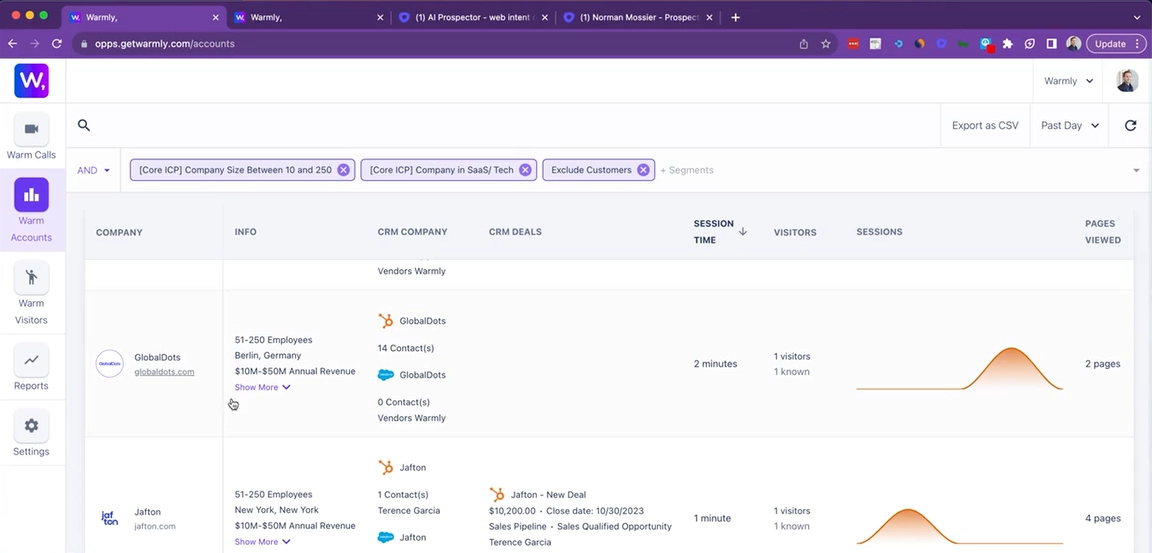
But why is this so important in the first place?
With intent data, your sales team can identify and prioritize your hottest leads from the start instead of wasting their efforts on cold or low-value leads.
As a result, you’ll experience more conversions and ROI before you know it.
Feature #2: Sales automation
Warmly has several automation features to help you put essential sales operations on autopilot and ensure that no high-value lead is missed again.
Firstly, the Orchestrator lets you streamline LinkedIn and email outreach by automatically adding high-intent leads to specific sequences.
Our platform lets you set up all the essential parameters, enabling you to completely customize it to fit your needs, goals, and target market, including letting you:
- Specify the trigger that sets the sequence in motion (e.g., a visitor goes to a high-intent page, such as pricing).
- Define the criteria the visitor needs to meet to be targeted (e.g., company size, industry, job role).
- Set up the frequency at which you want the workflows to run and the maximum number of people targeted in a single account.
- Decide what action you want the Orchestrator to take (e.g., sending a contextual email, personalized LinkedIn DM, or connection request).
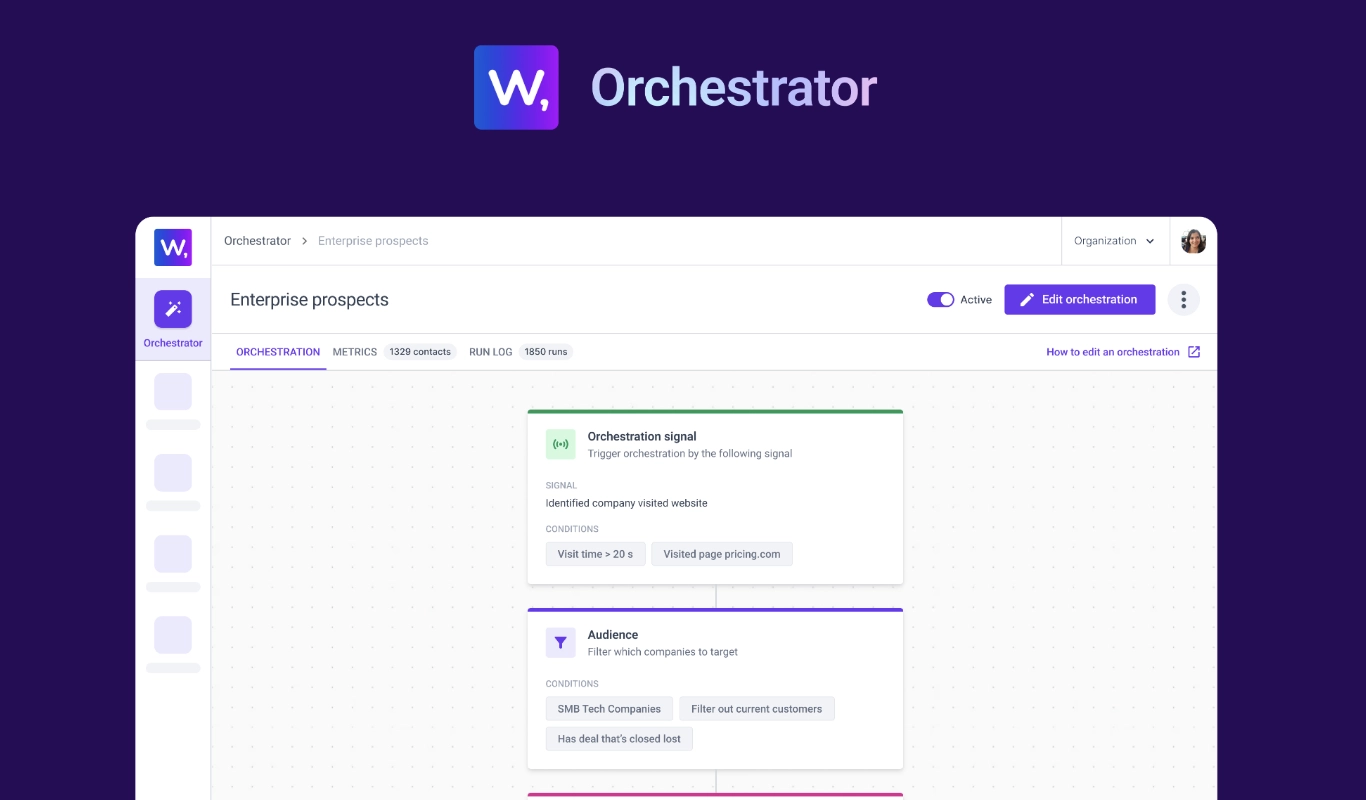
Try it yourself 👇or watch it in action.
Then there’s the AI Chat that leverages the power of AI to engage high-intent leads on your website by:
- Asking them qualifying questions.
- Answering their queries.
- Booking meetings.
- Offering relevant collaterals, etc.

The AI that powers AI Chat is fully trainable, meaning you can tailor it to your specific brand tone of voice and other requirements.
Finally, Warmly’s automated alerts notify sales reps via Slack whenever a high-intent lead lands on your website or takes a high-intent action. This significantly shortens the time to lead, increasing your chances of getting more conversions.
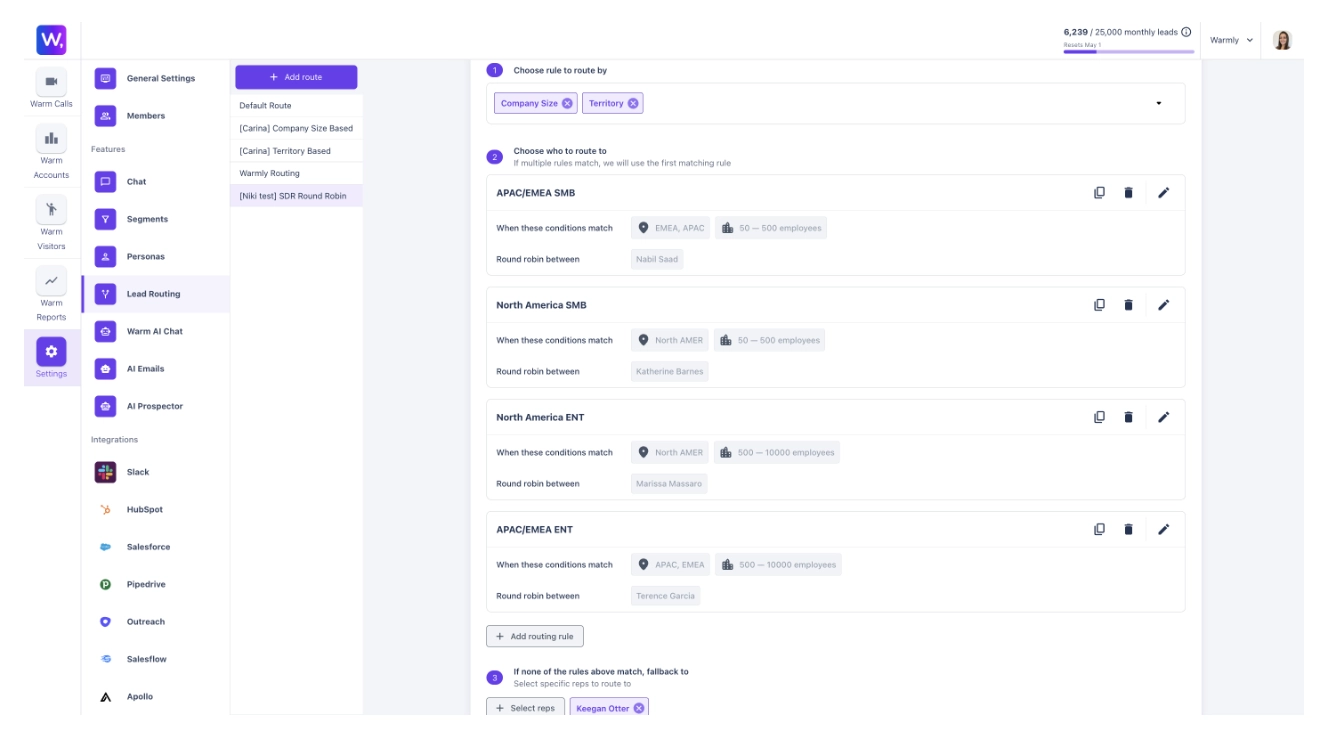
Note: On Warmly’s Business plan and above, you can also automate lead routing using the round-robin method or set up any other criteria by which you want leads to be distributed.
Feature #3: Live lead engagement
Warmly has another trick up its sleeve for users who want to make the most of the traction gained by the intent insights the platform uncovers.
Namely, Warmly lets you engage your prospects in a live video call while they’re still on your website.
When you go to the “Warm Calls” section of Warmly’s dashboard, you can see who’s visiting your website and monitor their sessions in real-time.
Once your reps assess that the time is right, they can hop on a video call straight from Warmly’s dashboard.
As any sales rep knows, nothing can help you close more deals than one-on-one meetings, so make sure to make the most of them.
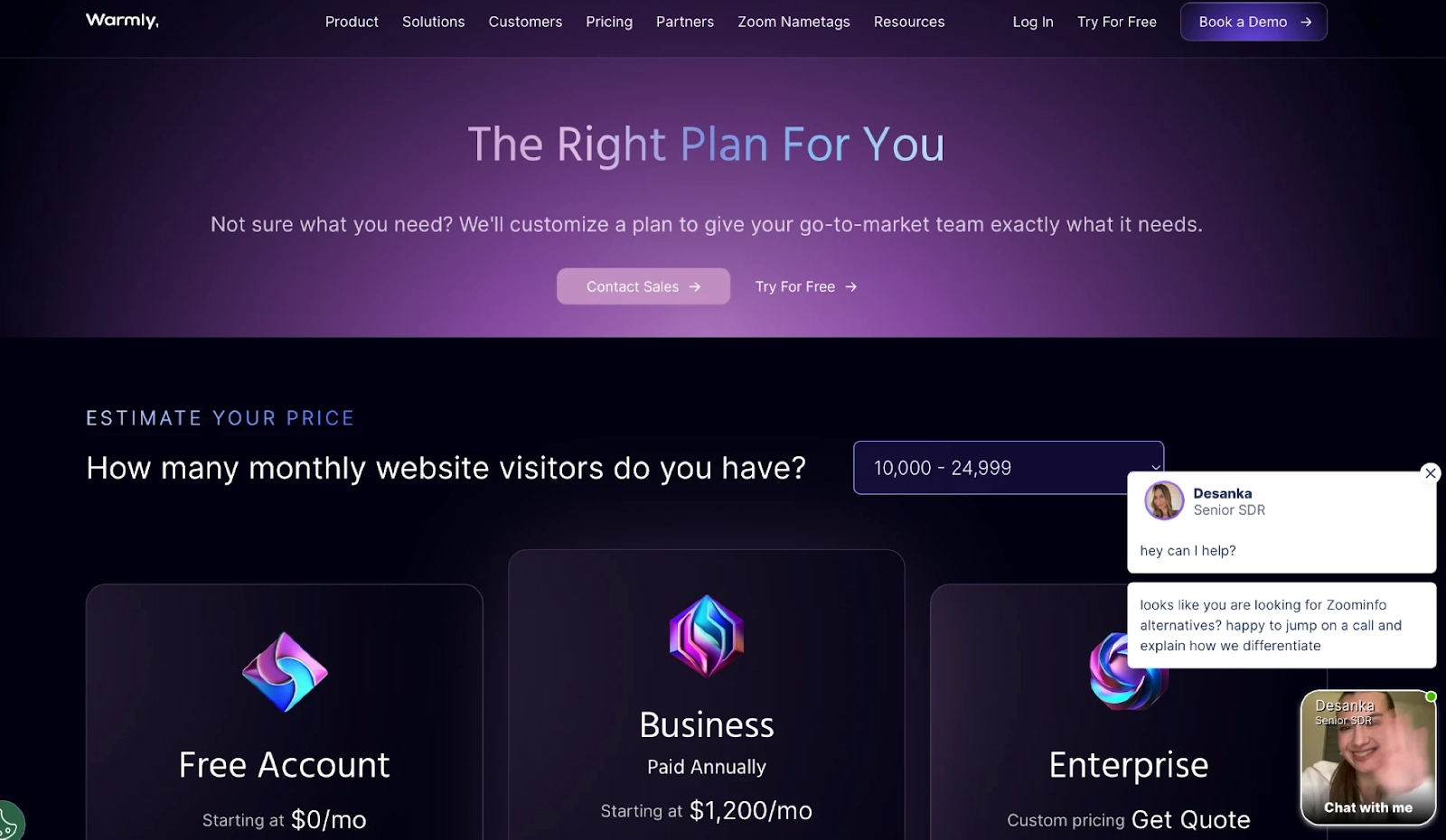
Note: The Live Video Chat feature is available only on Warmly’s Enterprise plan.
Try it out here:
Feature #4: A B2B Prospect Database: Coldly
Warmly’s Coldly, a database with 200M+ accounts and contacts, gives your sales team an excellent starting point for prospecting.
Coldly includes all the B2B data your sales reps need to make initial contact, including:
- Validated emails.
- Phone numbers.
- LinkedIn profiles.
Our database also provides 25+ B2B filters and customizable data filters that you can set up, enabling your sales team to build highly targeted prospect lists in a few seconds.

Coldly also has a browser extension that lets you scrape essential B2B contact data from any source on the web, including LinkedIn profiles, company websites, etc.
Your team will have both accurate contact data and the right tools to pick up buyer intent signals and set up workflows on top of them.
Warmly’s Integrations
Warmly integrates with a wide range of platforms, including:
- OpenAI.
- Slack.
- Apollo.
- Outreach.
- Demandbase.
- 6sense.
- Clearbit.
- People Data Labs.
- And more.

In addition to deep integrations with several lead intelligence platforms, Warmly provides a Warm Bundle: partner discounts for over 25 sales, marketing, and GTM tools.

This way, you can access many relevant tools and combine them with Warmly at a fraction of their usual price.
Pricing
Warmly’s pricing is modular and component-based.
You can choose the components that best match the needs of your business, as components are priced by output and not just by a monthly fee.
There are 3 paid product plans that you can choose from:
- AI Data Agent (Starts at $10,000/yr), which includes 5,000 credits, person-level web visitor de-anonymization (RB2B + Vector data), CRM integration, and access to our Coldly Contact Database.
- AI Inbound Agent (Starts at $16,000/yr), which includes all AI Data Agent features, 10,000 credits, Intent-powered pop-ups (Warm Offers), AI chatbot & live video chat, and lead routing.
- AI Outbound Agent (Starts at $22,000/yr), which includes 10,000 credits, automated signal-based outbound orchestration, email automation, LinkedIn automation, and email warmup.
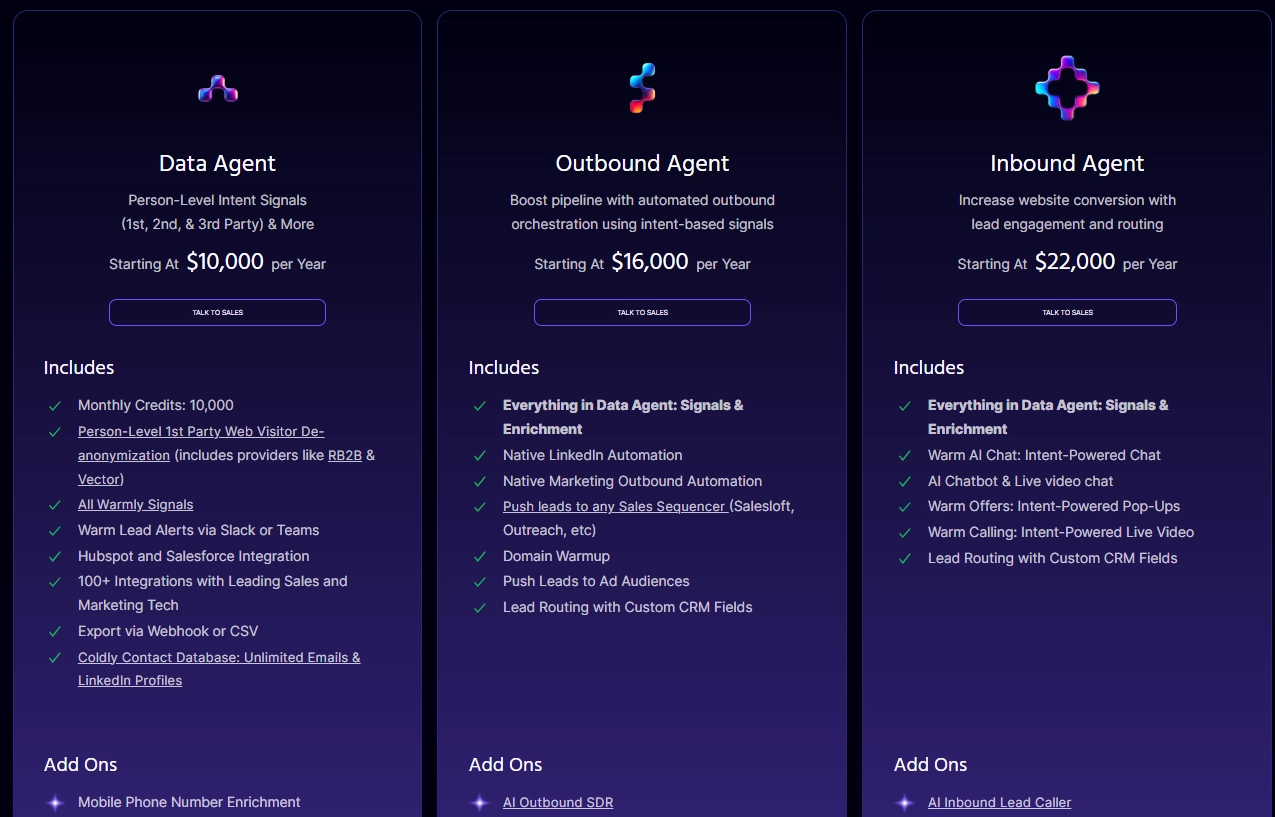
➡️ Warmly’s pricing is ideal for larger SMB and MM companies with a growing or mature GTM motion with SDR, sales, and marketing functions.
Pros & Cons
✅ Identifies companies and individuals visiting your website.
✅ Enriches each identified lead with detailed B2B intelligence and reveals intent data.
✅ Versatile sales orchestration options.
✅ Live sales engagement capabilities.
✅ Reveals who your hottest leads are right now.
❌ Pricing is modular.
Demandbase
Best for: Identifying and targeting the right leads with the right message to support ABM campaigns.
Similar to: Warmly, 6sense.
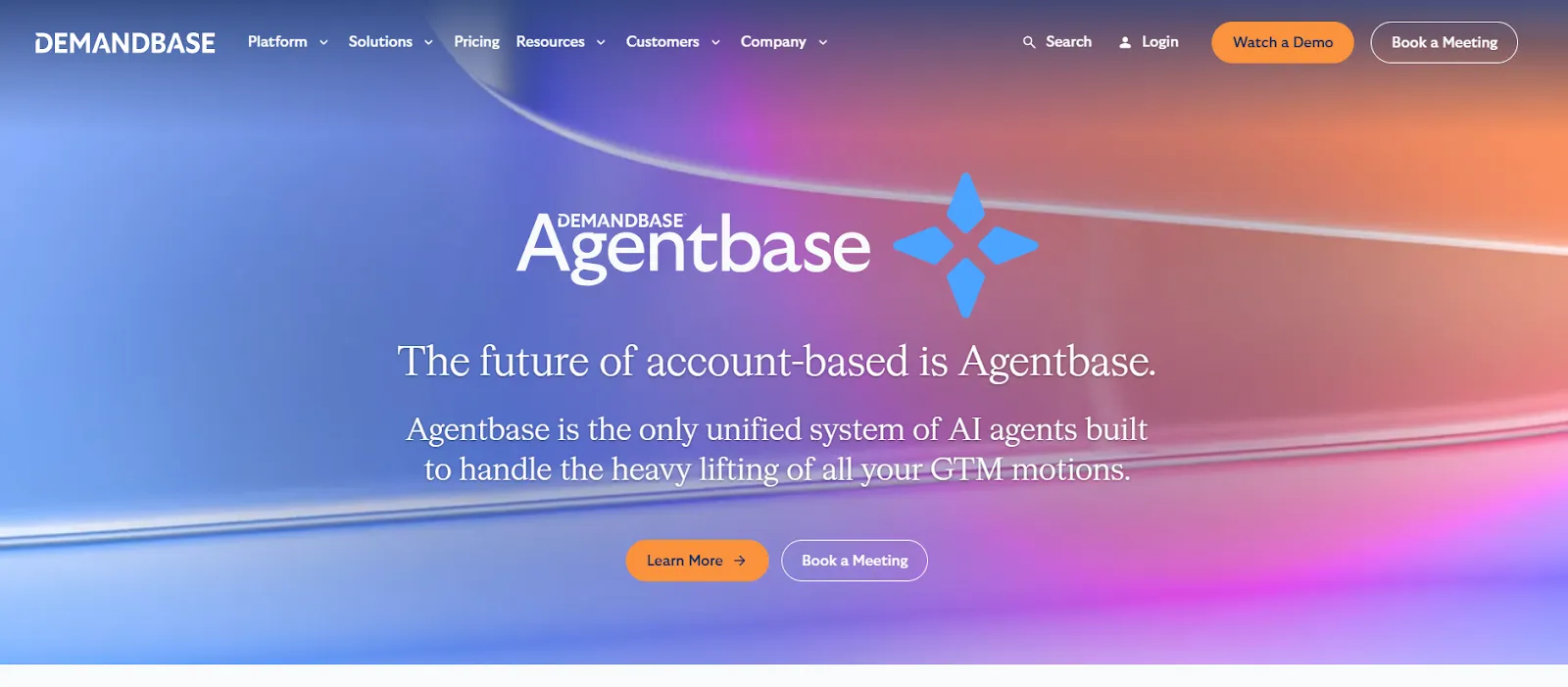
Demandbase is a sales intelligence platform built for ABM teams, which has a wide range of features designed for sales, marketing, and even advertising departments.
It’s a viable ABM platform for marketing teams looking to retarget prospects at scale with relevant messages and provide leads with a personalized website experience.
Features

- Account-based marketing orchestration: Your marketing team can create customizable workflows aimed at specific accounts/audience segments.
- Ad targeting options: Display personalized ads to high-value accounts.
- Agentbase: Agentbase is Demandbase’s system of connected AI agents for total GTM alignment. The AI agents work together and are powered by the same data, helping you deliver a better and faster pipeline.
Pricing
Demandbase does not include its pricing, so you’d have to contact their team to get a quote.
➡️ The only thing revealed on its site is that its pricing includes a fee that covers all the essential services and a flat user fee that scales according to your needs.

Pros & Cons
✅ Targeted B2B advertising and retargeting.
✅ Full suite of ABM tools, including account insights, intent data, and personalized campaign orchestration.
✅ Sales insights that your team can use to prioritize accounts.
❌ The platform has a steep learning curve, according to G2 reviews.
❌ Described as expensive when compared to other options on the market.
#2: CRM Tools
HubSpot
Best for: Scaling lead outreach with personalized email sequences.
Similar to: Salesforce.
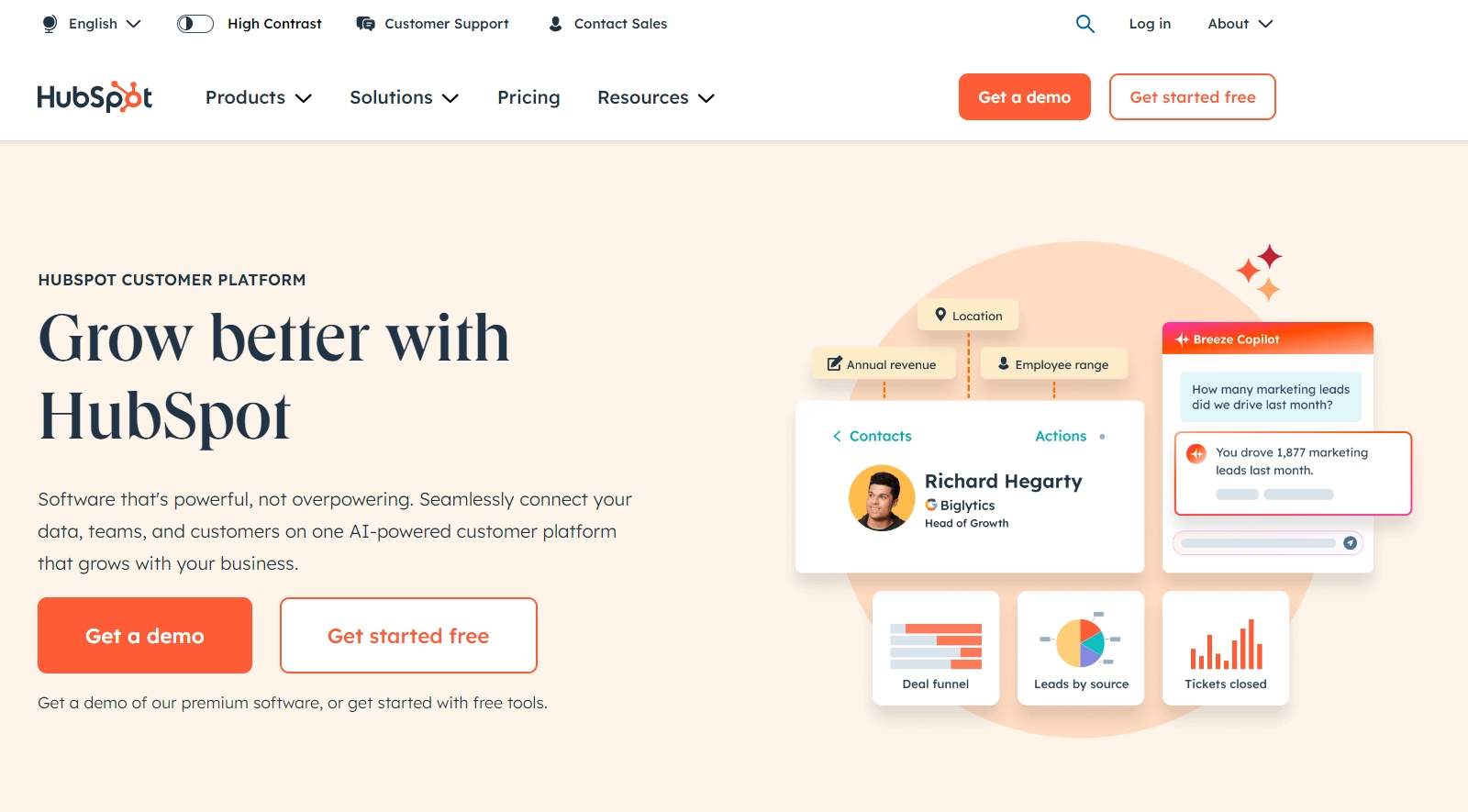
HubSpot is an all-in-one platform that centralizes email, content, SEO, social media, automation, and analytics to help generate, nurture, and convert leads.
The reason why I’d recommend this tool to B2B marketing teams is that it streamlines campaign management, improves alignment with sales, and provides the data needed to prove and optimize ROI.
Features
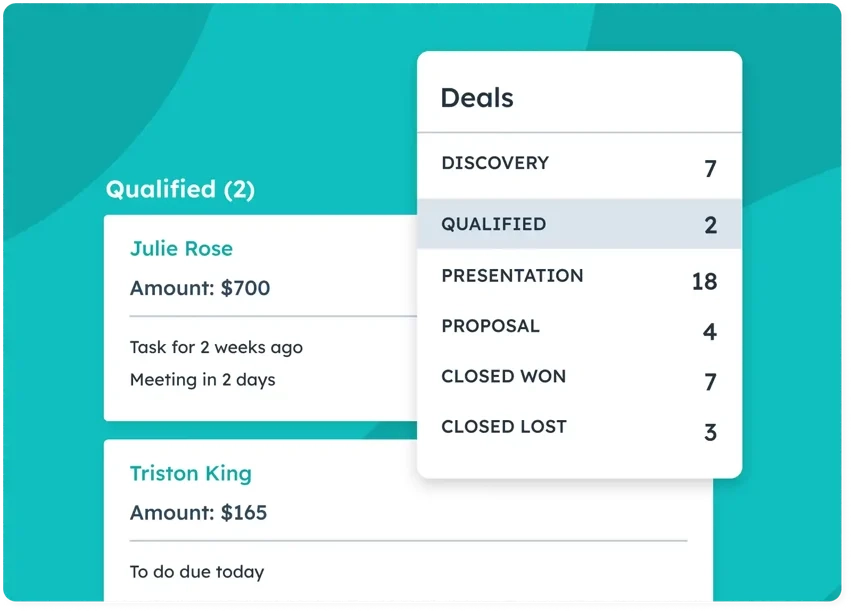
- Unified contact management that lets you centralize all lead and customer data (emails, form fills, website activity, and interactions) in one place for better audience segmentation.
- Lead tracking & scoring that helps you automatically track prospect engagement across channels and score leads based on behavior to prioritize the most sales-ready contacts.
- Marketing x sales alignment that enables you to connect marketing campaigns directly to pipeline data, ensuring marketers can see how their efforts drive revenue.
Pricing
HubSpot’s Marketing Hub has a free version that gives you access to its free marketing, operations and sales tools.
To access the tool’s more advanced features, you will need to sign up for one of its three paid tiers:
- Starter: $20/month/seat, which adds access to email marketing, lists, mobile optimization, and removes HubSpot branding.
- Professional: $890/month (includes 3 seats), which adds access to marketing automation, SEO tools, content creation, social media publishing, A/B testing, and custom reporting.
- Enterprise: $3,600/month (includes 5 seats), which adds access to multi-touch revenue attribution, adaptive testing, predictive lead scoring, custom event reporting, and advanced permissions.
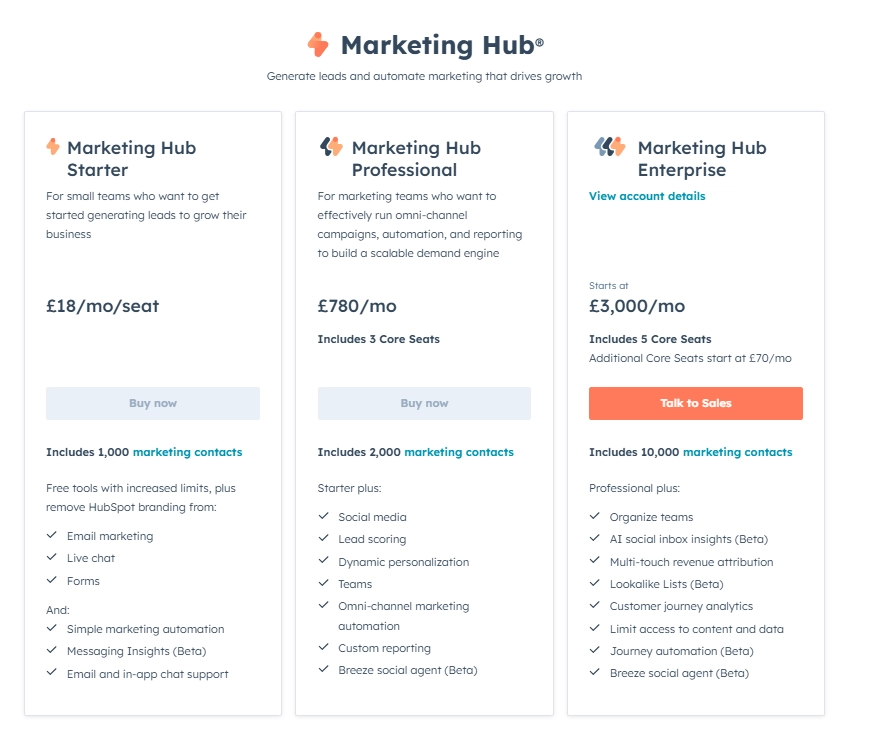
Pros and Cons
✅ All-in-one sales and marketing CRM that gives you access to workflow automations and advanced analytics.
✅ AI-powered assistant to help your marketing team.
✅ Deep integrations with other marketing tools that you might already be using.
❌ The templates are not very customizable when compared to other tools on the market.
❌ The tool comes with a learning curve, according to users of the platform.
Salesforce’s Marketing Cloud
Best for: Centralizing and scaling CRM-driven sales and marketing operations to manage customer data and automate complex workflows.
Similar to: HubSpot.
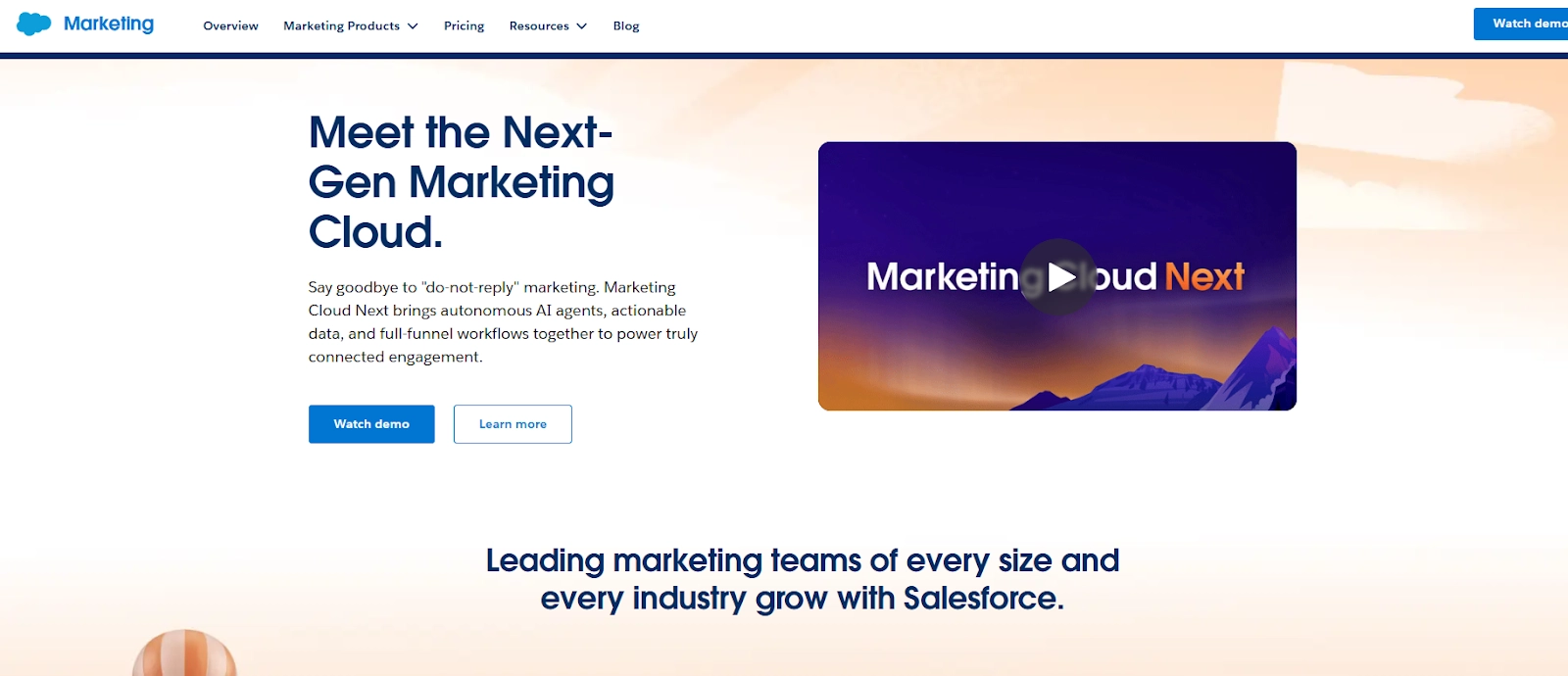
Salesforce offers a B2B marketing automation and CRM platform that focuses on scalable, personalized email nurturing, ABM, and sales x marketing alignment.
The platform lets you run sophisticated, multi-step engagement journeys tied directly to Salesforce pipeline data, so you can prioritize high-value accounts.
Features
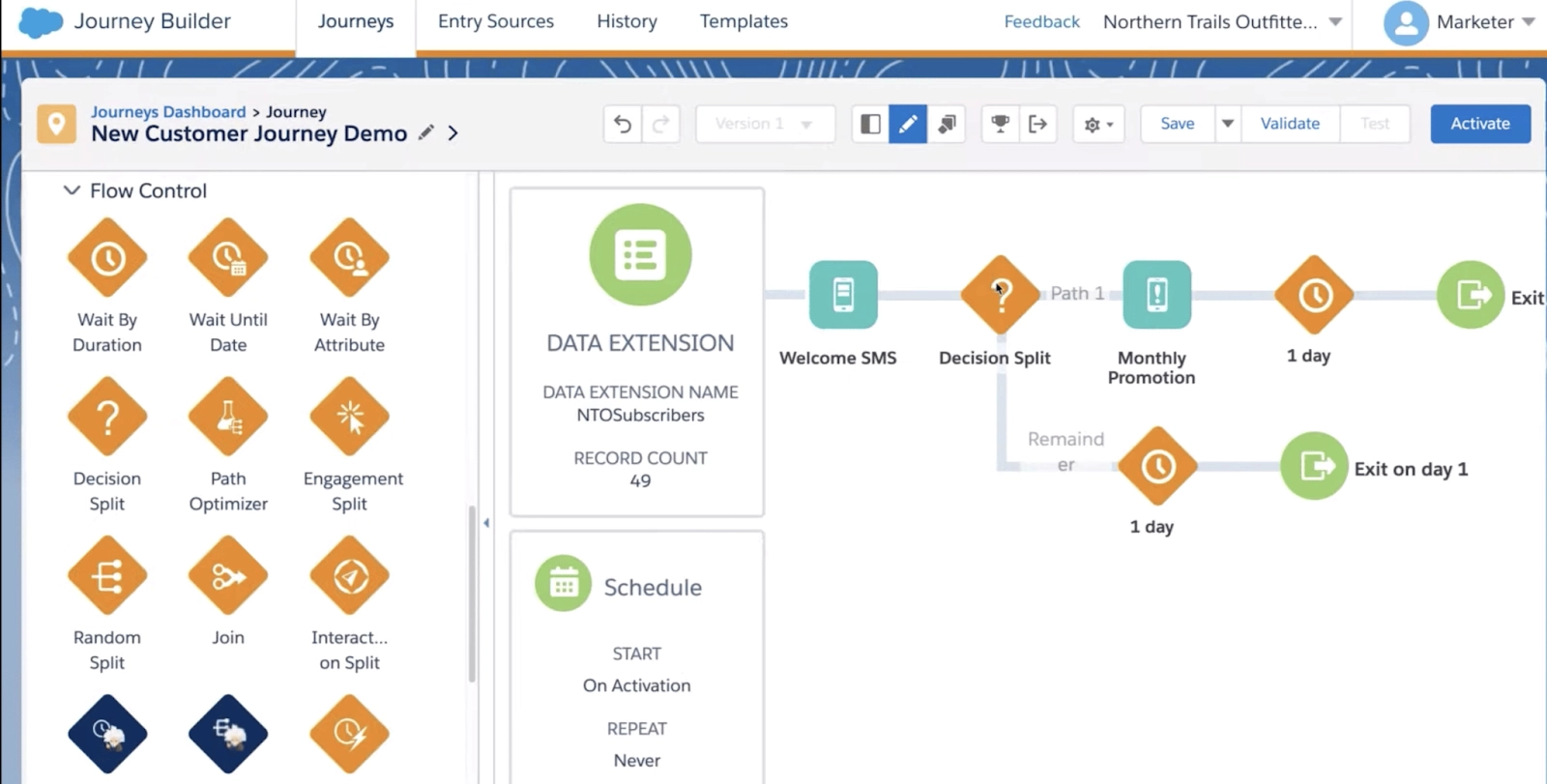
- Centralize prospects, activities, form fills, and engagement data inside Salesforce so segmentation and account-based lists stay CRM-synced.
- Design multi-step email journeys with branching logic, wait steps, and behavioral triggers to scale 1:1 outreach.
- Automatically score and grade prospects by behavior and fit, then push sales-ready leads into Sales Cloud so marketing and sales act on the same qualified contacts.
Pricing
Salesforce’s Marketing Cloud does not have a free version.
To access the tool’s more advanced features, you will need to sign up for one of its paid tiers:
- Starter Suite: $25/month/user, which adds access to Lead, Account, Contact, and Opportunity Management, dynamic email marketing and analytics, built-in sales flows and lead routing.
- Growth Edition: $1,500/org/month, which adds Agentforce campaign creation, multi-channel journeys, forms and landing pages.
- Advanced Edition: $3,250/org/month, which adds Agentforce campaign creation, path experimentation, and two-way conversations for SMS and WhatsApp.
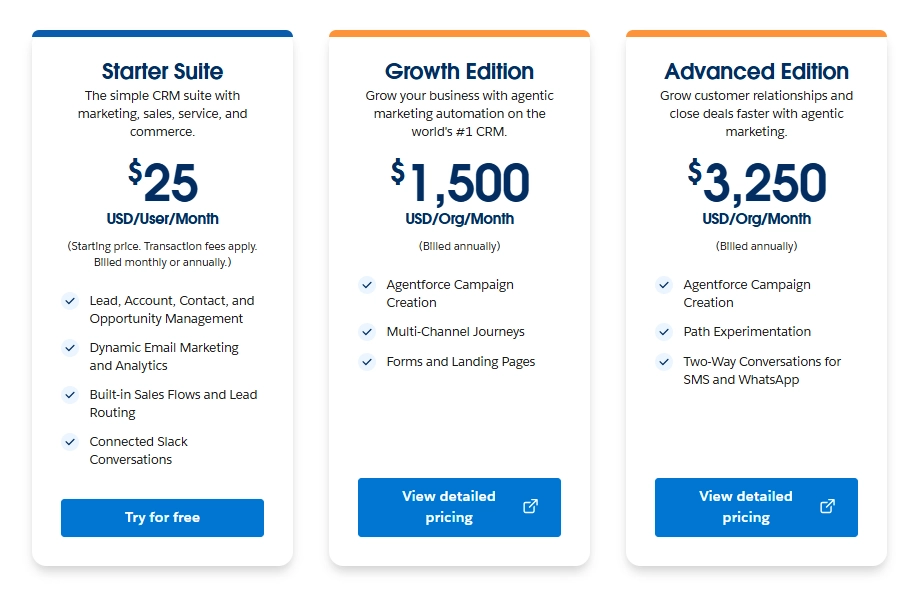
You can then extend the platform’s capabilities with these add-ons:
- Salesforce Personalization: $8,000/org/month, which adds Agentforce personalization decisioning, web/mobile/app/email personalization, and product & content recommendations.
- Marketing Intelligence: $10,000/user/month, which adds Agentforce paid media optimization, AI campaign summaries, and data enrichment with out-of-the-box visualizations.
- Loyalty Management: $20,000/org/month, which adds Agentforce loyalty promotion creation, CRM loyalty analytics, and dynamic promotions management.
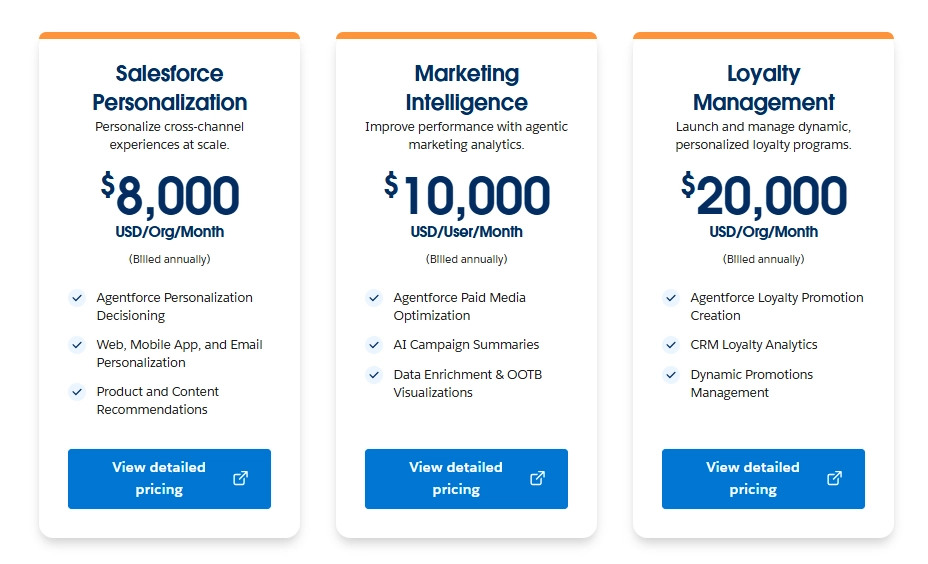
Or you can choose one of the bundled packages that combine Marketing Cloud Next with other Salesforce marketing products:
- Account Engagement+: $1,250/org/month, which includes Account Engagement plus Marketing Cloud Growth or Advanced: Agentforce campaign creation, lead nurturing & scoring, and B2B Marketing Analytics.
- Engagement+: $2,000/org/month, which includes Engagement plus Marketing Cloud Growth or Advanced: Agentforce campaign creation, email & mobile messaging, and journey orchestration.
- Intelligence+: $11,000/org/month, which includes Marketing Cloud Intelligence plus Marketing Cloud Next: paid media optimization, AI summaries, and automated data management.
- Personalization+: $15,000/org/month, which includes Salesforce Personalization plus Marketing Cloud Next: personalization decisioning and cross-channel recommendations.
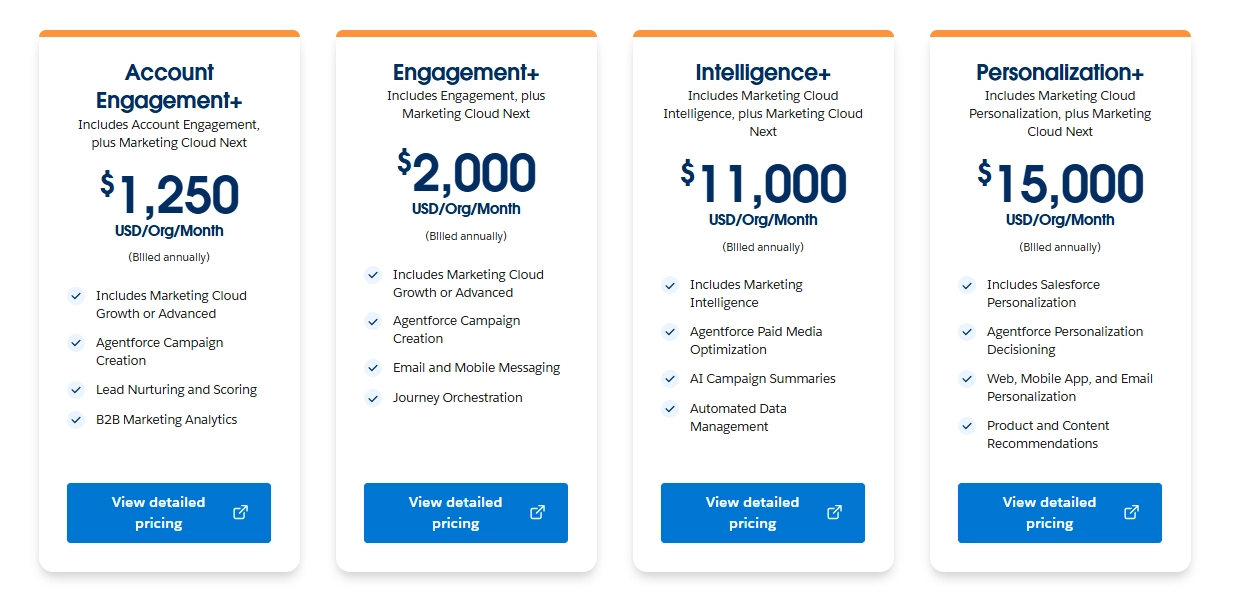
Pros & Cons
✅ Marketing data, campaigns, and pipeline that sit in one system.
✅ Strong B2B automation and ABM capabilities that scale personalized outreach.
✅ Enterprise analytics and add-ons (Einstein, B2B Marketing Analytics) for revenue attribution and predictive insights.
❌ More expensive than other CRMs for small teams.
❌ Can require Salesforce admin resources and professional services for setup.
#3: Advertising & Demand Generation Tools
Adzooma
Best for: Effortless, cross-platform PPC campaign optimization based on granular performance insights.
Similar to: Birch.

Adzooma is a user-friendly PPC optimization platform that acts like a virtual assistant for marketing teams.
The tool is designed to enhance campaign performance across Google, Microsoft, and Facebook Ads with the goal of delivering actionable insights, performance reports, and smart recommendations.
Features

- Performance reports that help you analyze your ad accounts with reports that surface critical issues, flag opportunities, and suggest optimizations.
- Daily, personalized recommendations based on advertising campaign performance.
- Additional reports that surface SEO insights and website performance data, helping you align paid and organic strategies for better ad relevance and higher conversions.
Pricing
Adzooma offers a free forever plan that includes monthly PPC performance reports, monthly opportunity analysis, monthly SEO/web metrics reports, etc.
For more, you can subscribe to one of two paid plans:
- Silver: $69/mo, includes weekly PPC performance reports, weekly opportunity analysis, weekly SEO/web metrics reports, unlimited users, etc.
- Gold: $179/mo, includes daily PPC performance reports, daily opportunity analysis, daily SEO/web metrics reports, and everything in Silver.

Pros & Cons
✅ Great for beginners and pros alike with a clean, intuitive interface.
✅ Combines ad, SEO, and web performance metrics in one place.
✅ Unlimited user seats in the Silver and Gold plans.
❌ Best suited for small to mid-sized teams, as larger companies may need more granular controls.
❌ Some users mention that the PPC recommendations can be surface-level and that experts might outgrow them.
Birch
Best for: Advanced ad automation and cross-platform campaign management.
Similar to: Adzooma.

Birch offers an AI-powered ad automation platform designed to simplify and enhance digital advertising efforts.
By offering customizable automation rules, real-time performance analytics, and seamless integrations, the tool helps marketers to efficiently manage and optimize campaigns across multiple advertising platforms.
Features

- Customizable automation rules that let you set up condition-based rules to automate tasks such as bid adjustments, budget allocations, and pausing underperforming ads, reducing manual workload.
- Identify top-performing ads, current trends, and fatigued ads for better decision-making.
- Triggers instant notifications via Slack or email about significant campaign changes, and generates detailed reports to monitor performance.
Pricing
Birch offers three paid pricing plans:
- Essential: Starting at $49/mo for up to $10k monthly ad spend, includes smart rules, post boosting, reports, Slack integration, etc.
- Pro: Starting at $99/mo for up to $10k monthly ad spend, includes everything in Essential, plus automated rules and strategies, Ads Explorer, top creatives and audiences, etc.
- Enterprise: Custom pricing, includes everything in Pro, plus premium support and tech setup help.

➡️ Keep in mind that the price of the Essential and Pro plans can go up to $499/mo and $1,799/mo, depending on your monthly ad spend.
Pros & Cons
✅ Provides good insights into ad performance and audience engagement.
✅ Lots of customization options that enable you to create custom automated workflows.
✅ SME-friendly pricing structure.
❌ Has a learning curve, especially when it comes to more advanced features.
❌ There are some reported issues with customer support.
#4: Content Creation & Ideation
Jasper
Best for: Scaling marketing content fast without burning out your team.
Similar to: Opal.

Jasper offers an AI writing platform that’s been trained for marketers.
The platform helps marketing teams generate on-brand content quickly, using pre-built templates, brand voice training, and campaign-specific prompts to support everything from blog posts to performance ads.
Features

- Brand voice memory: Jasper learns your unique tone and style, then mimics it across different content types.
- Integrated Surfer SEO support that helps marketing teams optimize content while writing.
- Multilingual support that lets you create content in over 30 languages to support global campaigns.
Pricing
Jasper.ai has 3 pricing plans:
- Creator: $49/month/seat (1 user only) that gives you access to 1 brand voice, access to Jasper Chat, and SEO mode.
- Pro: $69/month/seat (up to 5 users) that includes 3 brand voices, 10 knowledge assets, 3 instant campaigns, and AI image generation.
- Business: Custom pricing, which adds groups and document collaboration, performance analytics, custom style guides, and enterprise-grade security.

Pros & Cons
✅ Customizable voice ensures brand consistency.
✅ Great for scaling copy across paid + organic channels.
✅ Brand voice memory for marketing agencies handling multiple clients.
❌ Requires human editing to avoid repetition or generic phrasing.
❌ The generated copy will still need to be reviewed by a human.
Opal
Best for: End-to-end AI support for content creation, personalization, and experimentation within the Optimizely ecosystem.
Similar to: Jasper.

Opal is Optimizely’s integrated AI assistant that streamlines the entire marketing lifecycle from ideation and content creation to personalization and experimentation.
Embedded within the Optimizely One platform, the platform provides intelligent suggestions, automates tasks, and delivers actionable insights to optimize your marketing efforts.
Features

- Generates campaign briefs by analyzing past performance data, helping marketers initiate creative campaigns swiftly.
- Creates campaign-specific assets, including images and social posts, using context from briefs, accelerating content creation workflows.
- Applies user-level attributes and real-time behavior to dynamically personalize experiences for every visitor.
Pricing
Optimizely doesn’t disclose prices for its AI agent for marketers, which means you’ll have to contact its sales team for a custom quote.

Pros & Cons
✅ Enhances personalization and customer engagement.
✅ Accelerates content creation and experimentation processes.
✅ You’ll be able to dynamically personalize experiences for every visitor.
❌ Primarily beneficial for users already within the Optimizely ecosystem.
❌ The tool’s pricing can get expensive, according to 3rd party reviews.
#5: Social Media Management Platforms
Sprout Social
Best for: Comprehensive social media management, publishing, and analytics for B2B marketing teams.
Similar to: Hootsuite.
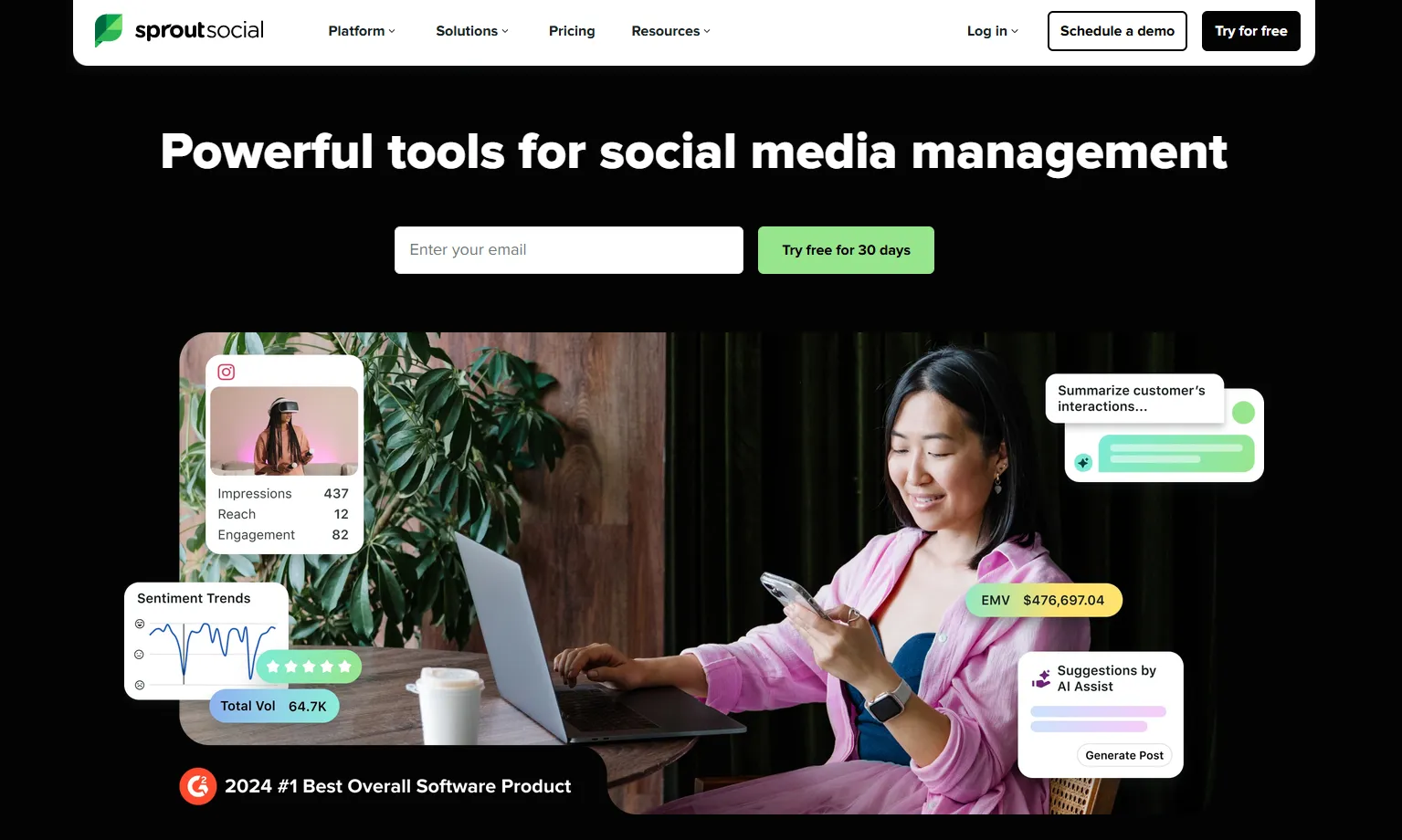
Sprout Social offers an all-in-one social media management platform designed to help businesses plan, publish, engage, and measure their social presence at scale.
With its unified inbox, AI-powered suggestions, and reporting, Sprout makes it easier for B2B marketers like you to streamline workflows, foster collaboration, and prove ROI.
Features
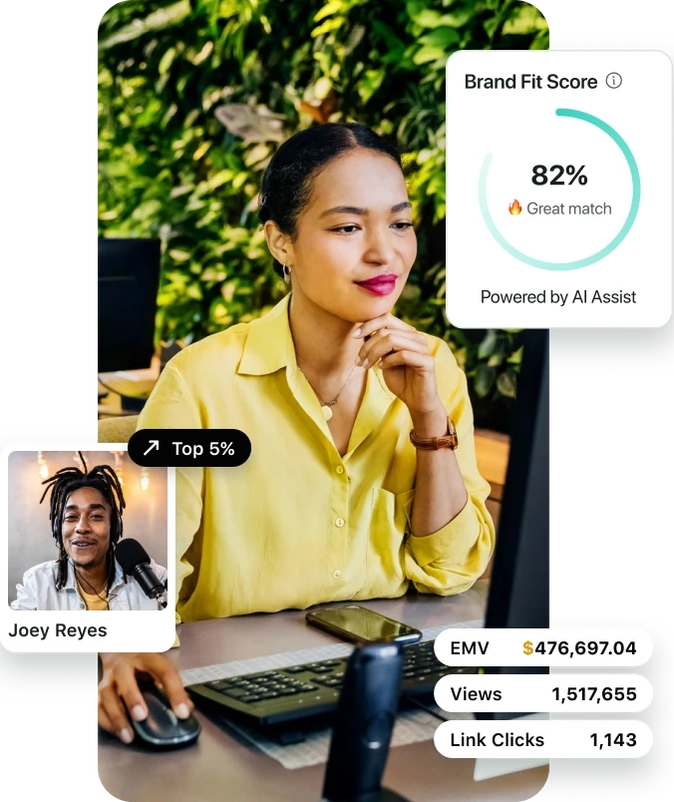
- Provides a unified inbox that centralizes engagement across multiple social platforms, helping teams respond quickly and consistently.
- Offers AI-powered writing assistance and optimal send-time recommendations to boost content effectiveness.
- Delivers advanced analytics and custom reporting that tie social performance to business outcomes.
Pricing
Sprout Social offers 4 paid pricing plans:
- Standard: $199/month per seat, which includes 5 social profiles, publishing, a unified inbox, and basic analytics.
- Professional: $299/month per seat, which expands to unlimited social profiles, competitive reports, scheduling tools, and team collaboration features.
- Advanced: $399/month per seat, which adds automation, digital asset libraries, advanced listening, and message spike alerts.
- Enterprise: Custom pricing, which includes tailored solutions with enterprise-grade security, governance, and onboarding support.
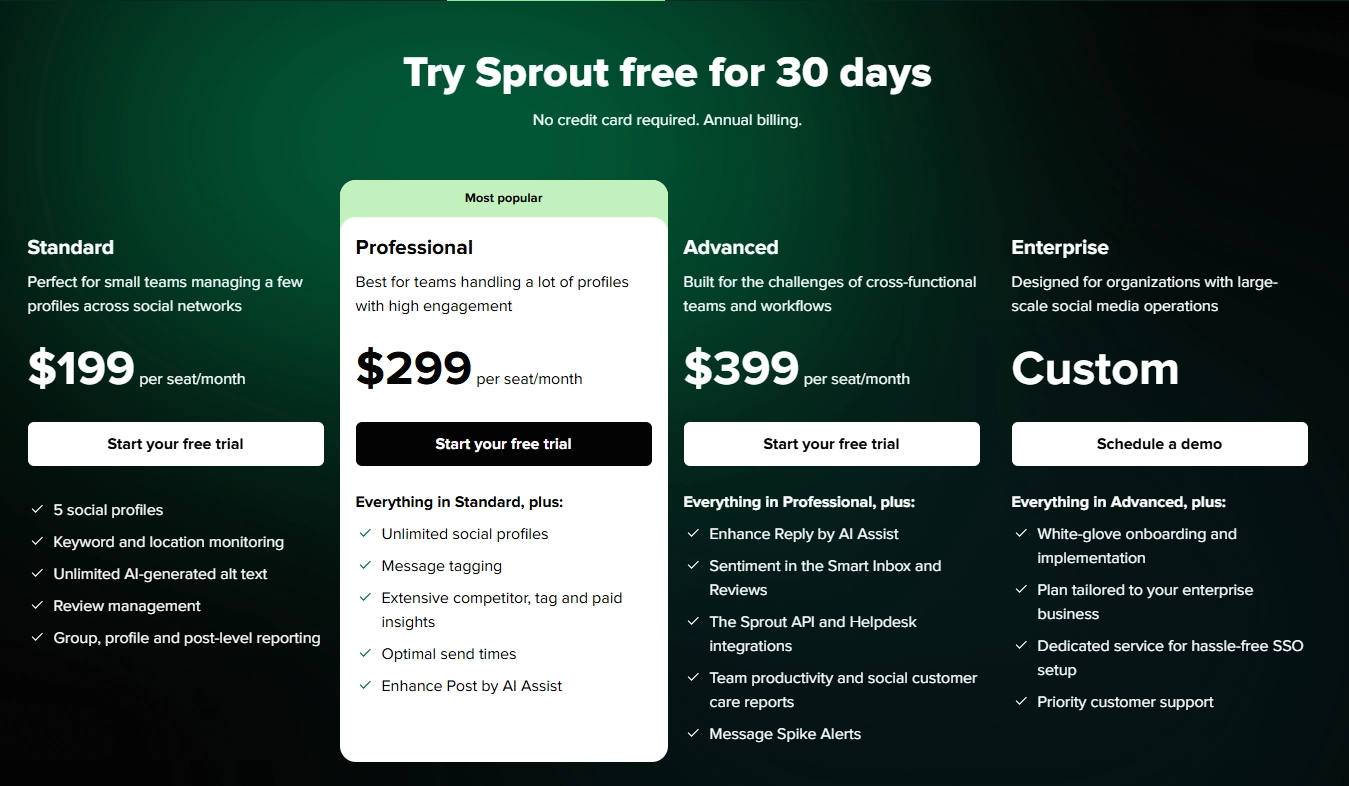
Pros & Cons
✅ Best-in-class analytics and reporting to help you prove ROI from social media.
✅ Optimal send-time recommendations.
✅ Strong collaboration tools for large marketing teams.
❌ Pricing is on the higher side compared to competitors.
❌ May feel feature-heavy for SMEs with basic social needs.
Ocoya
Best for: Creating, scheduling, and optimizing social media content with AI.
Similar to: Sprout Social.

Ocoya combines AI-generated copywriting with social media automation, helping you brainstorm, write, schedule, and analyze posts across multiple platforms.
This means your marketing team will be able to handle the entire social media marketing process from a single platform instead of needing a separate marketing tool for each part of the process.
Features

- AI-powered suggestions on the best times to post and which content is likely to perform well.
- You’ll be able to plan and schedule posts across Instagram, LinkedIn, Twitter, Facebook, and more.
- Built-in Canva-style design tools to pair posts with branded visuals.
Pricing
Ocoya has four pricing plans:
- Bronze: $15/month, includes 1 user, 5 social profiles, and 100 AI credits.
- Silver: $49/month, includes 5 users, 20 social profiles, 500 AI credits, etc.
- Gold: $99/month, includes 20 users, 50 social profiles, 1,500 AI credits.
- Diamond: $199/month, includes 50 users, 150 social profiles, unlimited AI credits, advanced analytics, etc.

Pros & Cons
✅ All-in-one tool for social media content creation and scheduling.
✅ Fast, intuitive, and affordable, which is why it’s great for small teams.
✅ Plan and schedule social media posts across multiple B2B marketing channels.
❌ Not the best option for large enterprise teams needing advanced analytics.
❌ Ocoya's AI features are often described as underwhelming by users of the tool.
#6: Email Marketing Platforms
Kit
Best for: B2B marketing teams looking to run end-to-end email campaigns and automate audience growth.
Similar to: Mailchimp.
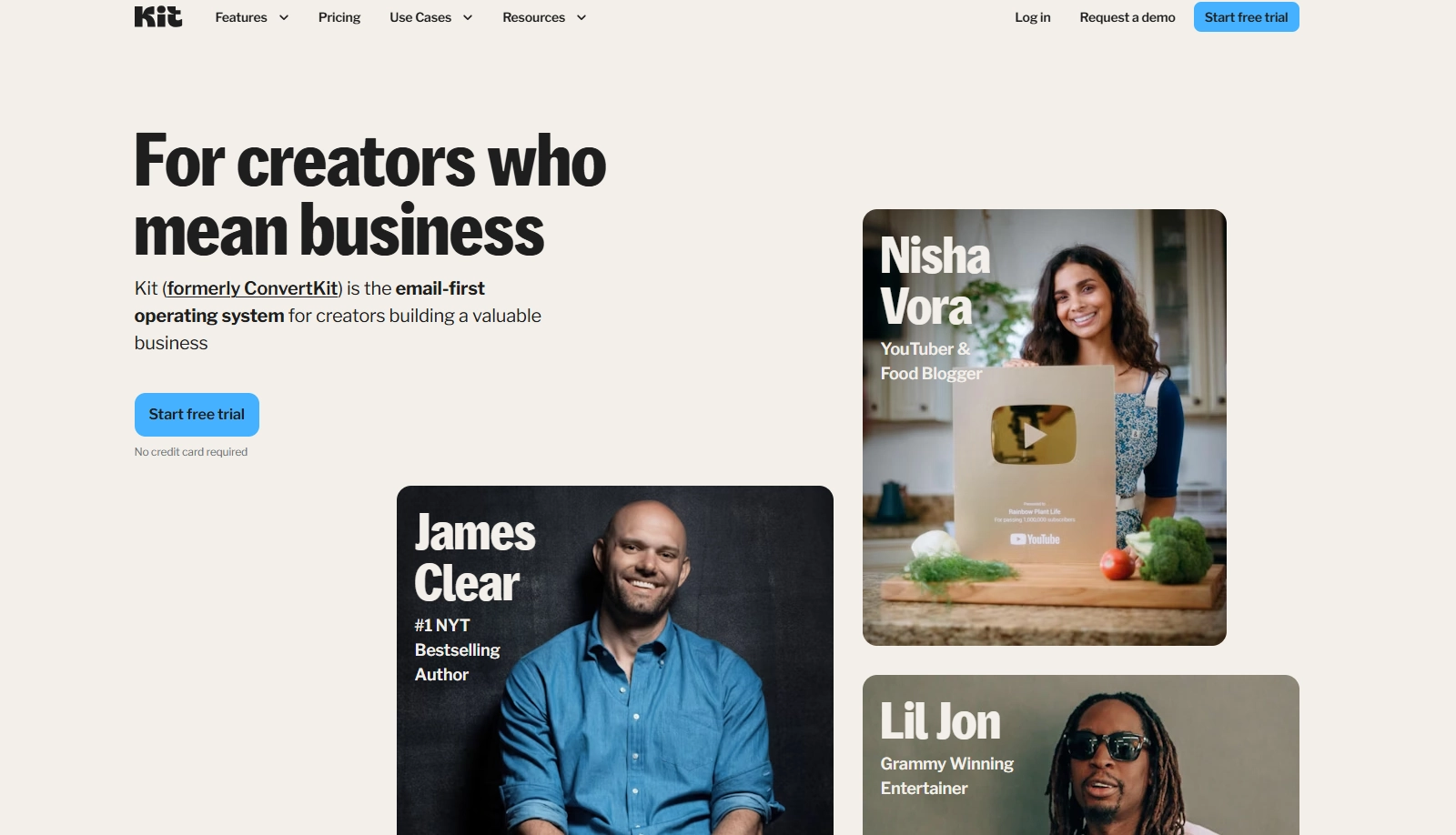
Kit (formerly ConvertKit) offers an email marketing platform built for marketing teams that need powerful automation plus commerce (e.g., paid newsletters and digital products).
The tool combines visual automations, flexible tagging/segmentation, and built-in product pages so you can run acquisition + nurture + monetization in one place.
Features
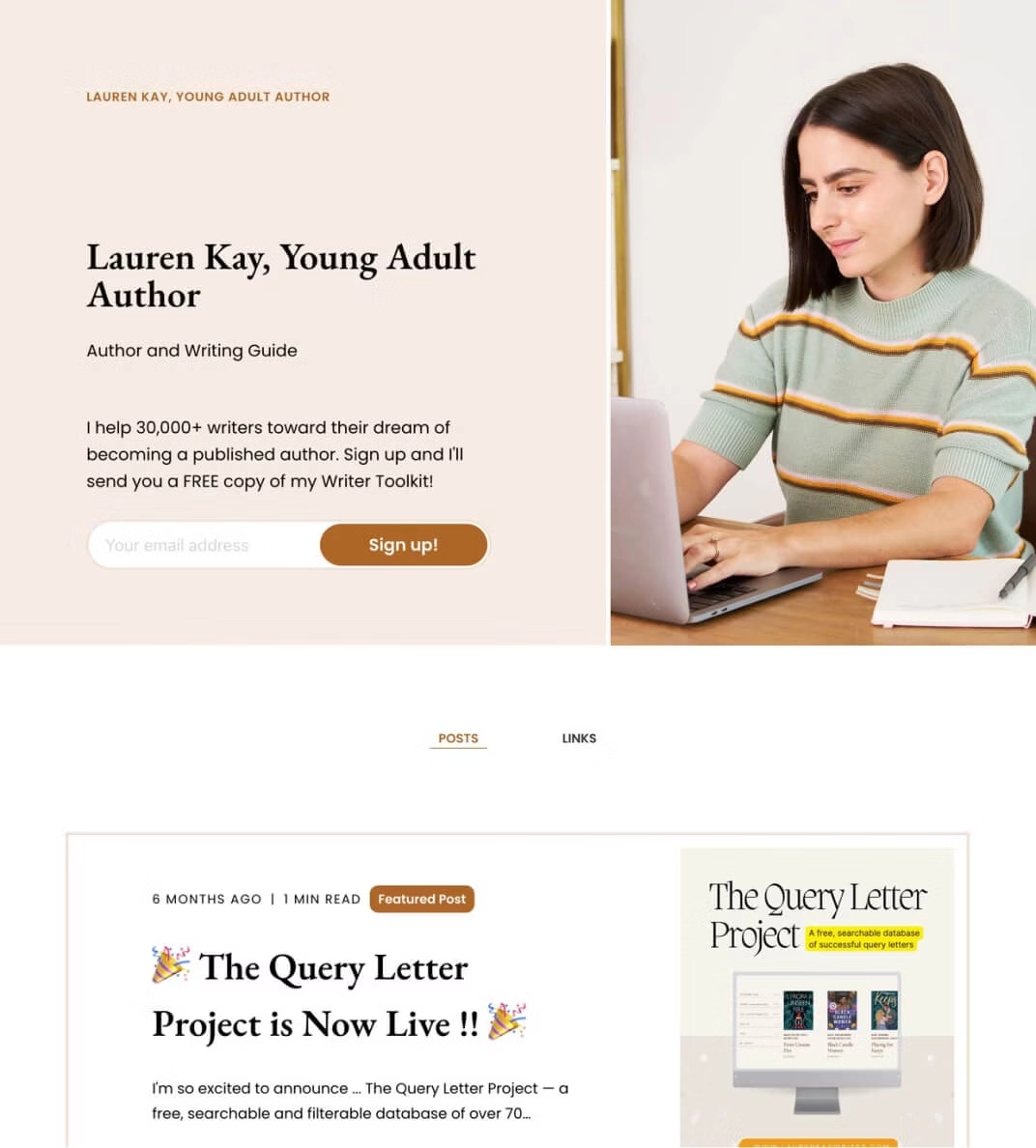
- Generates visual automations and email sequences from campaign triggers so you can map journeys without complex flows.
- Creates landing pages, opt-in forms, and simple product pages for paid newsletters and digital commerce to capture and monetize audiences quickly.
- Applies tags, segments, and subscriber-level attributes for personalized sends and targeted promos (I found this useful for audience segmentation and cross-sell flows).
Pricing
Kit’s pricing is based on how many email subscribers your brand(s) have, and there are 3 plans in its offering:
- Newsletter: $0/month, and includes 1 user, 1 basic Visual Automation, 1 email Sequence, unlimited landing pages, unlimited opt-in forms, unlimited broadcasts, audience tagging & segmentation, and up to 10,000 subscribers.
- Creator: Starts from $25/month for 1,000 subscribers, and includes 2 users, unlimited Visual Automations, unlimited email Sequences, and Smart Recommendations.
- Creator Pro: Starts from $50/month for 1,000 subscribers, and includes unlimited users, unlimited Visual Automations, unlimited email Sequences, newsletter referral system, deliverability reporting, and insights dashboard.
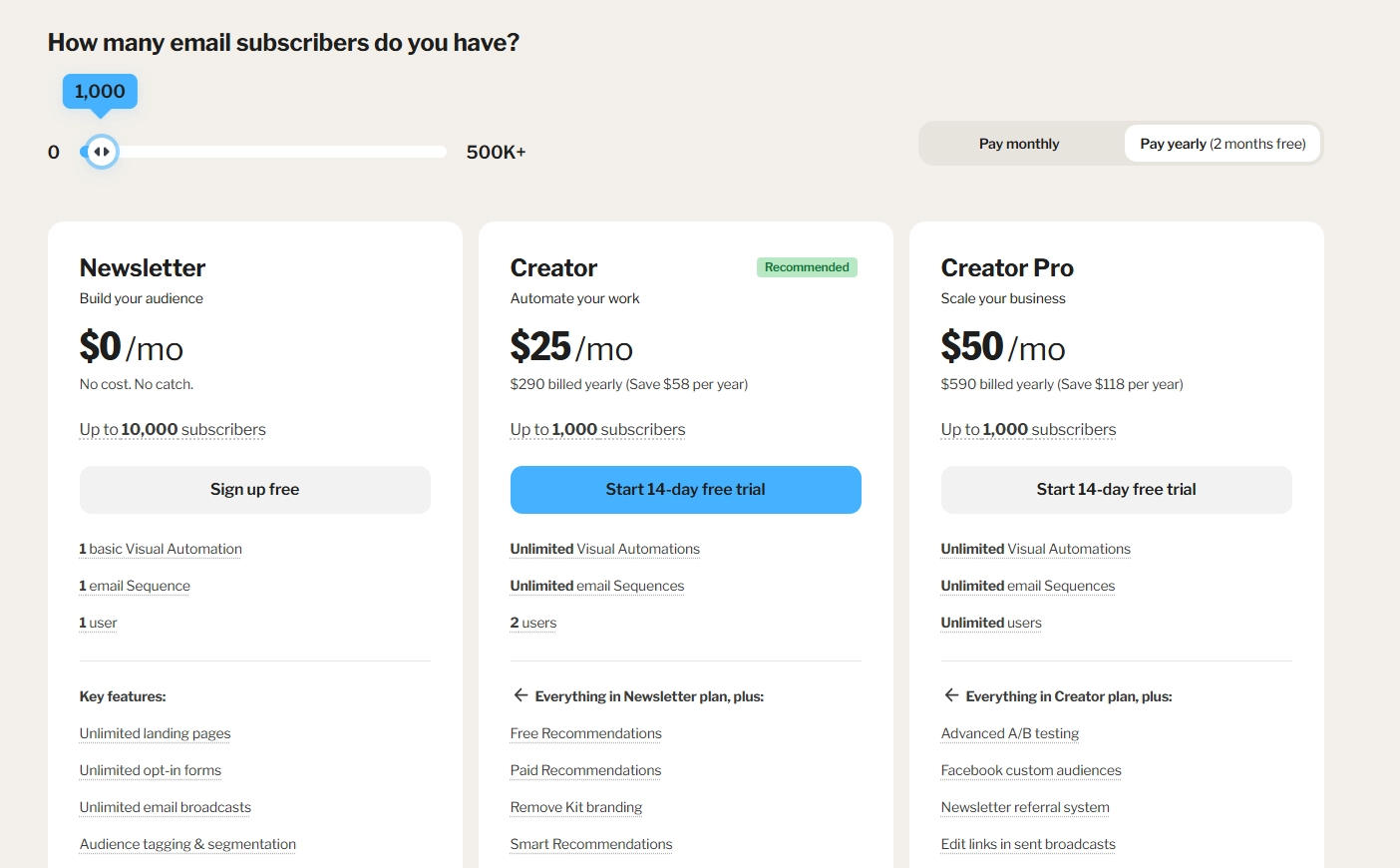
Pros & Cons
✅ Generous free and low-cost entry options for teams looking to get started with email marketing.
✅ Built-in commerce + visual automations let creators run acquisition + nurture + monetization without stitching lots of tools together.
✅ Clean tagging and segmentation models make targeted campaigns and personalization simple.
❌ Lacks some enterprise CRM depth and advanced multichannel orchestration.
❌ Advanced deliverability and analytics sit behind higher tiers.
Seventh Sense
Best for: Teams using HubSpot and Marketo looking to optimize email send times for maximum opens, clicks, and engagement.
Similar to: Lavender.
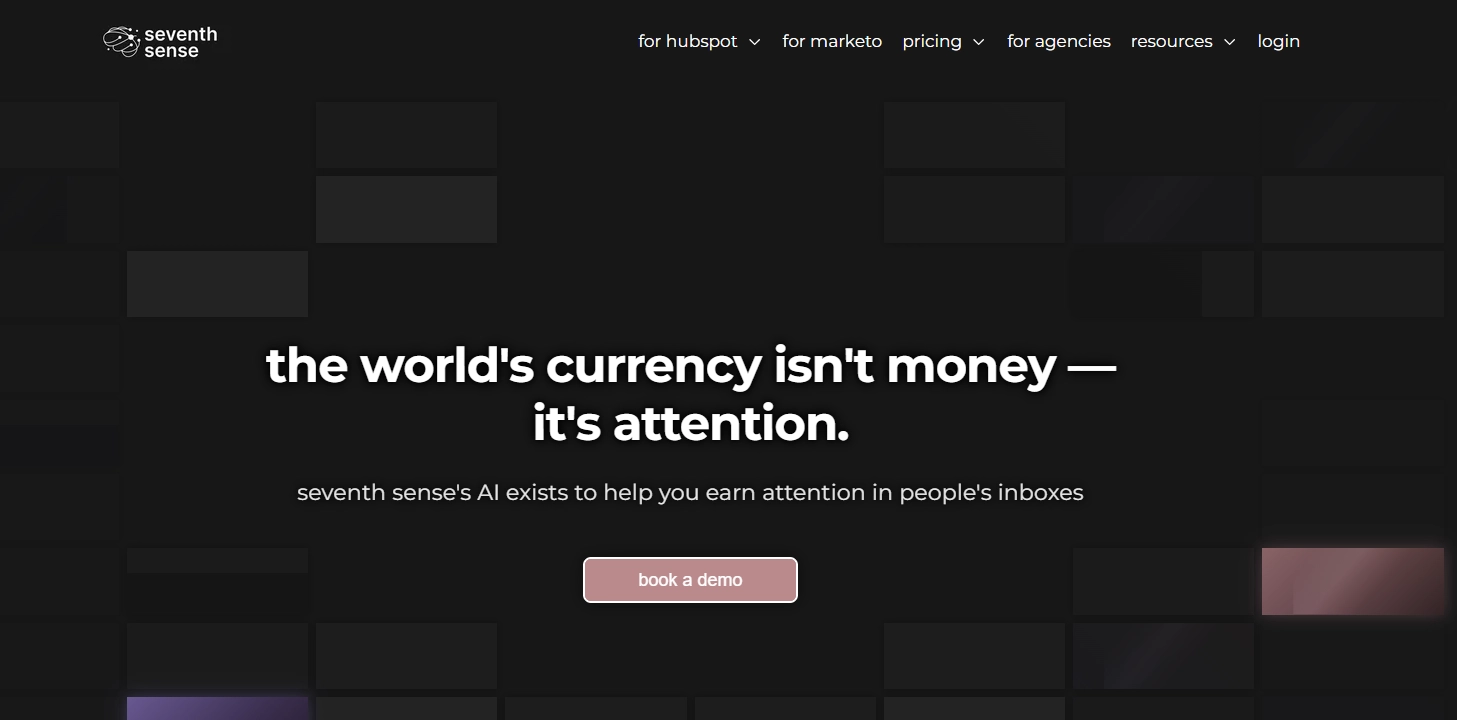
Seventh Sense offers an AI-powered platform that analyzes individual user behavior to send emails at the exact right time for each contact.
This improves deliverability, boosts open rates, and makes every email count more, making it perfect for anyone who wants to incorporate AI in their email marketing campaigns.
➡️ Even though Seventh Sense is not an all-in-one email marketing solution, you can use it alongside HubSpot or Marketo to use its AI personalization capabilities.
Features
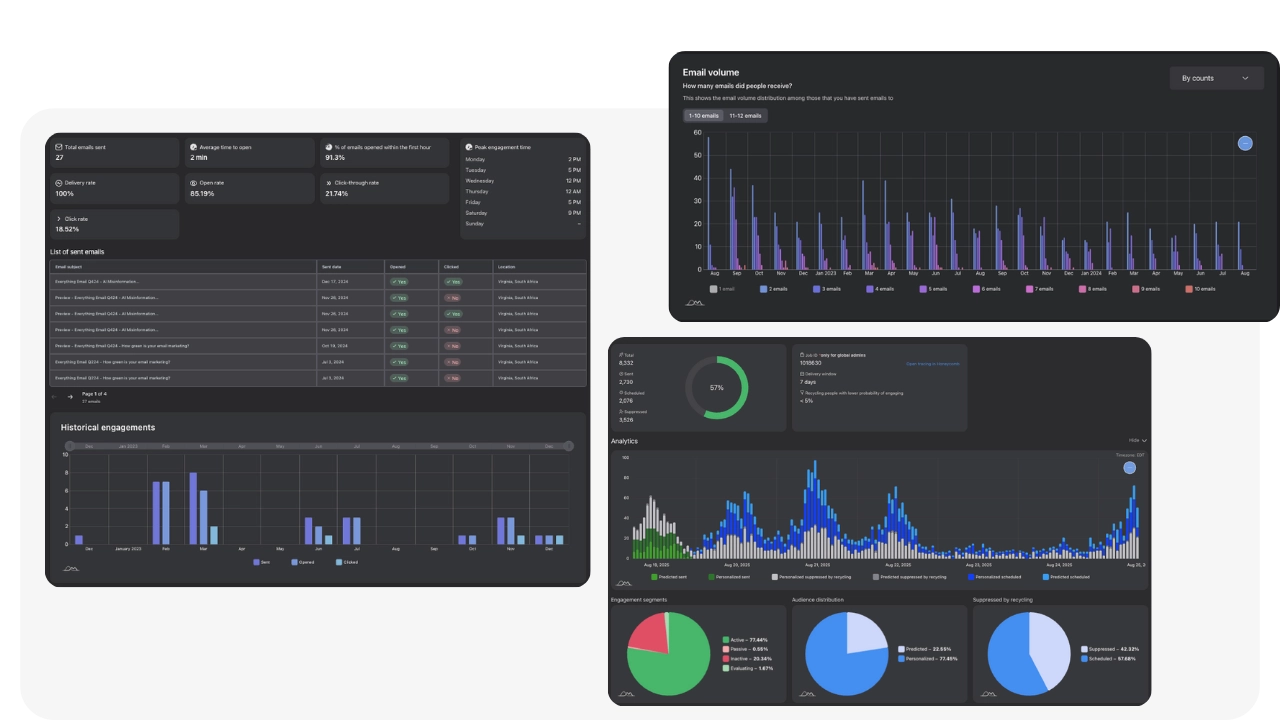
- The platform analyzes engagement patterns to send emails when they’re most likely to be seen.
- Avoids bulk sends by throttling them, which minimizes bounce and spam risks.
- The tool tracks opens, clicks, and reply patterns to continuously improve timing.
Pricing
Seventh Sense has two separate pricing packages for each of the two platforms it integrates with:
- HubSpot:
- Business Plan: Starts at $80/mo for up to 5000 leads, billed annually.
- Enterprise Plan: Custom price, includes all features as Business, with the addition of enterprise-grade security capabilities.
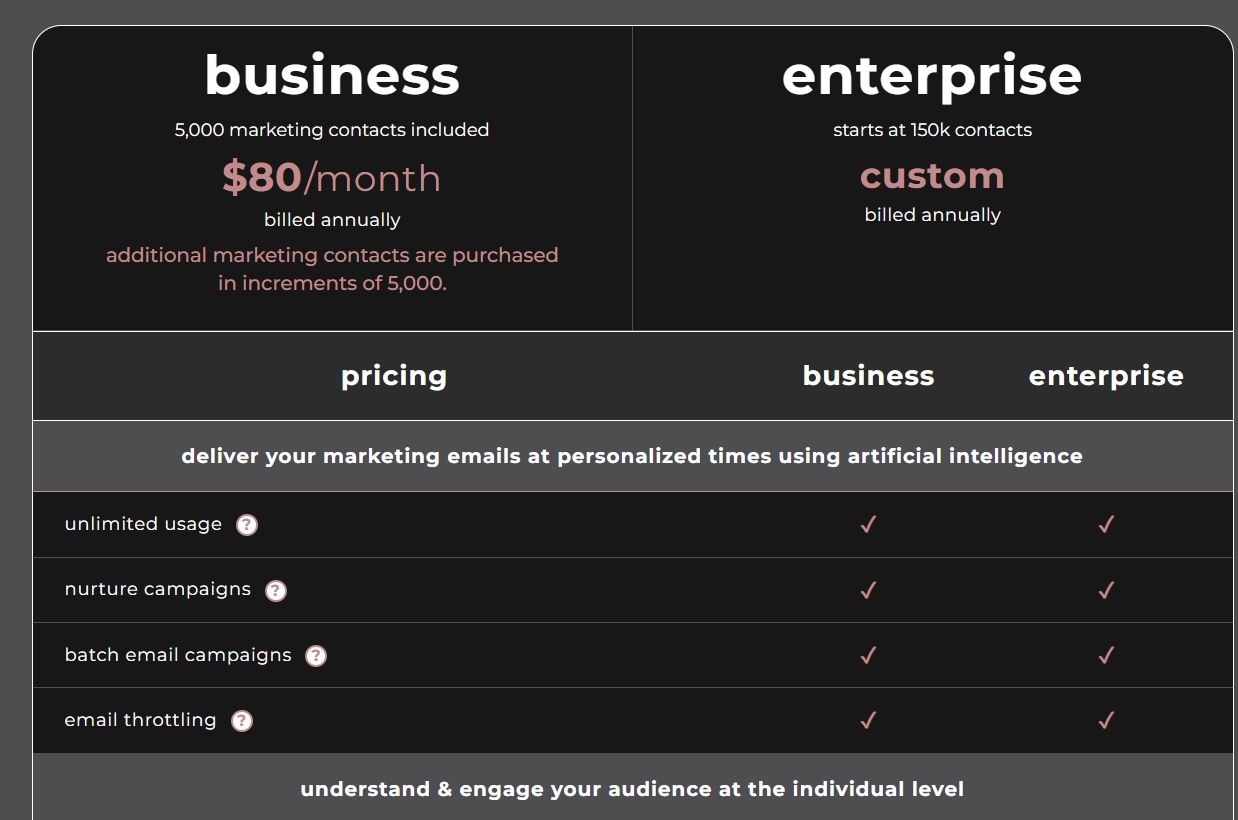
- Marketo:
- Business: Starts at $450/mo for up to 50,000 leads, billed annually.
- Enterprise: Custom price, includes all features as Business, with the addition of enterprise-grade security capabilities.

Pros & Cons
✅ Boosts email performance without changing copy or design.
✅ Helps protect domain reputation and reduce churn.
✅ Deep integration with Marketo and HubSpot.
❌ Only supports HubSpot and Marketo (not other tools like Mailchimp or Pardot).
❌ Starts at $450/month for teams on Marketo.
#7: Analytics & Attribution Platforms
Mixpanel
Best for: Comprehensive product analytics and user behavior tracking across web and mobile platforms.
Similar to: N/A.
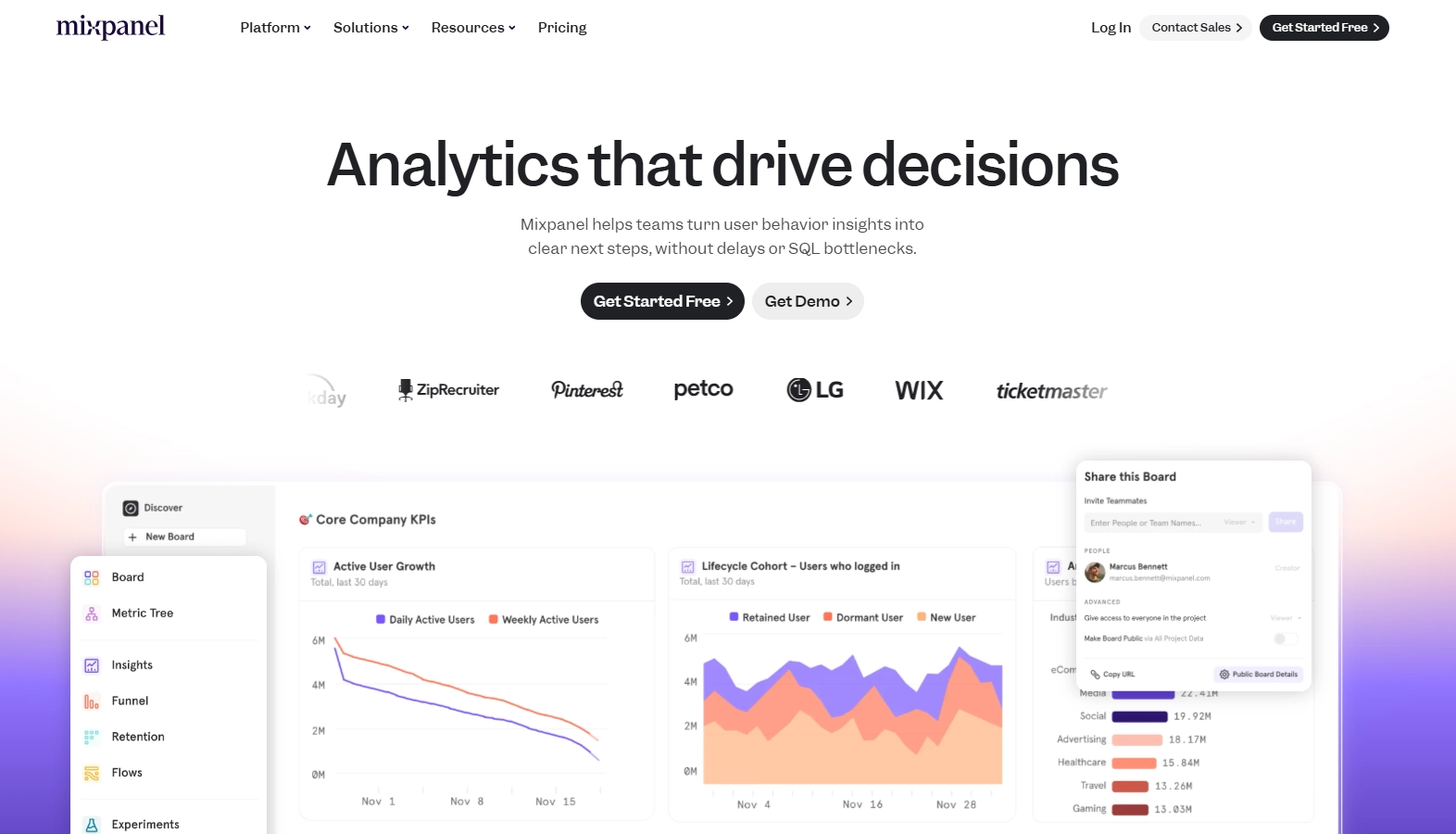
Mixpanel is a leading product analytics platform designed to help B2B marketers understand user interactions and optimize the customer journey.
By capturing detailed event-level data, the platform can help you analyze user behavior, segment audiences, and measure the effectiveness of your marketing campaigns.
Features
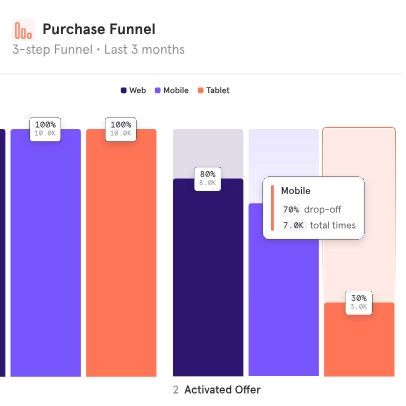
- Create dynamic user segments based on specific behaviors, enabling targeted marketing efforts and personalized experiences.
- Track user progression through various stages of your product or service, identifying drop-off points and opportunities for improvement.
- Access customizable dashboards that provide real-time insights into user activity and campaign performance, facilitating timely decision-making.
Pricing
Mixpanel offers a flexible pricing model based on event volume, where an event represents interactions between a user and your product.
There are 3 plans to choose from:
- Free Plan: Up to 1 million monthly events, which includes the basics to get started with the platform, with up to 5 saved reports and 10,000 monthly session replays.
- Growth Plan: Starts at $0/month with 1 million monthly events and $0.28 per 1,000 events after, and adds unlimited reports, 20,000 monthly session replays, and cohorts.
- Enterprise Plan: Custom pricing with unlimited monthly events, advanced analytics, data governance, and premium support.
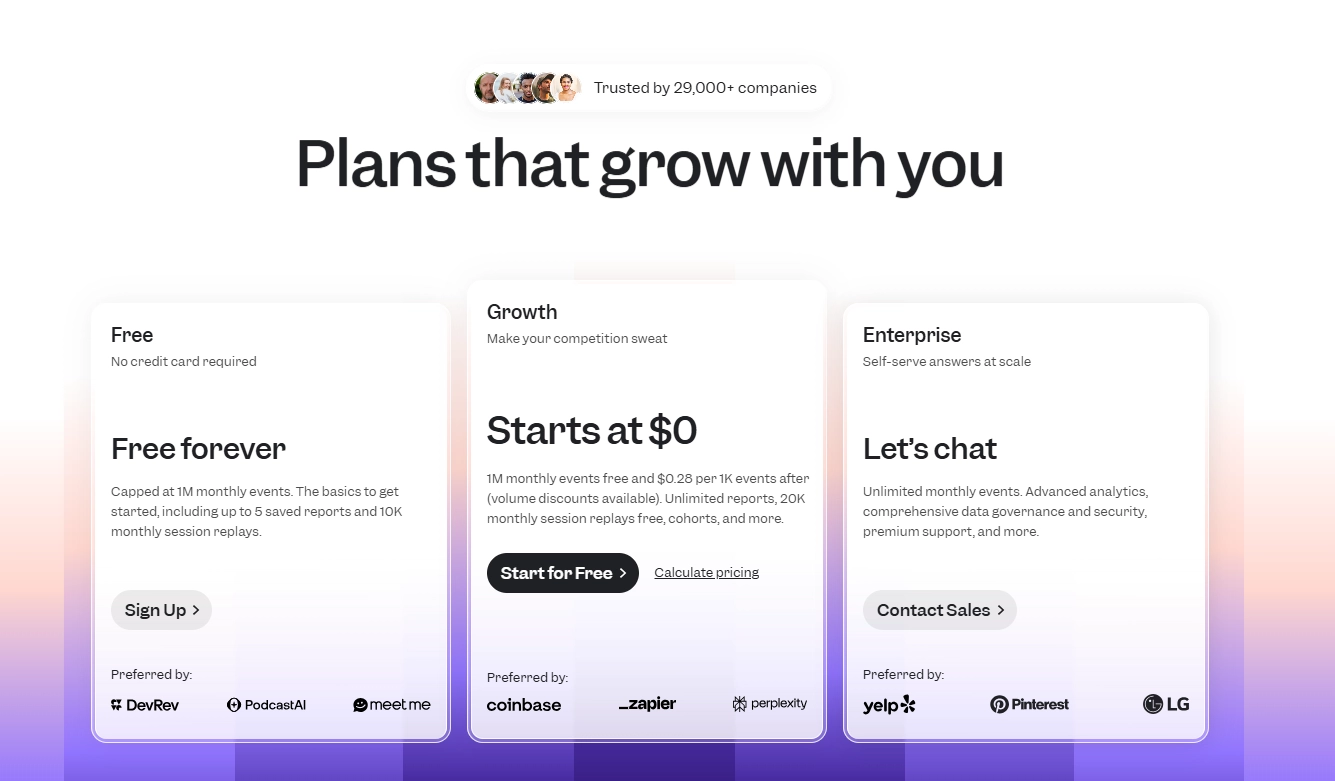
Pros & Cons
✅ The platform offers deep insights into user behavior and product usage (making it ideal for B2B product marketing teams).
✅ Facilitates data-driven marketing strategies and personalization.
✅ Seamless integration with various data sources and solutions you might already be using.
❌ Pricing increases quite a lot as event volume grows.
❌ May require a learning curve for teams new to product analytics.
Supermetrics
Best for: Centralizing marketing and sales performance data across multiple platforms into one place.
Similar to: Funnel.io.

Supermetrics is a marketing data pipeline tool designed to help B2B marketers consolidate data from advertising, analytics, and CRM platforms into a single source of truth.
By automating data transfers into spreadsheets, BI tools, and data warehouses, the platform eliminates manual reporting work and enables faster, more accurate performance insights.
Features
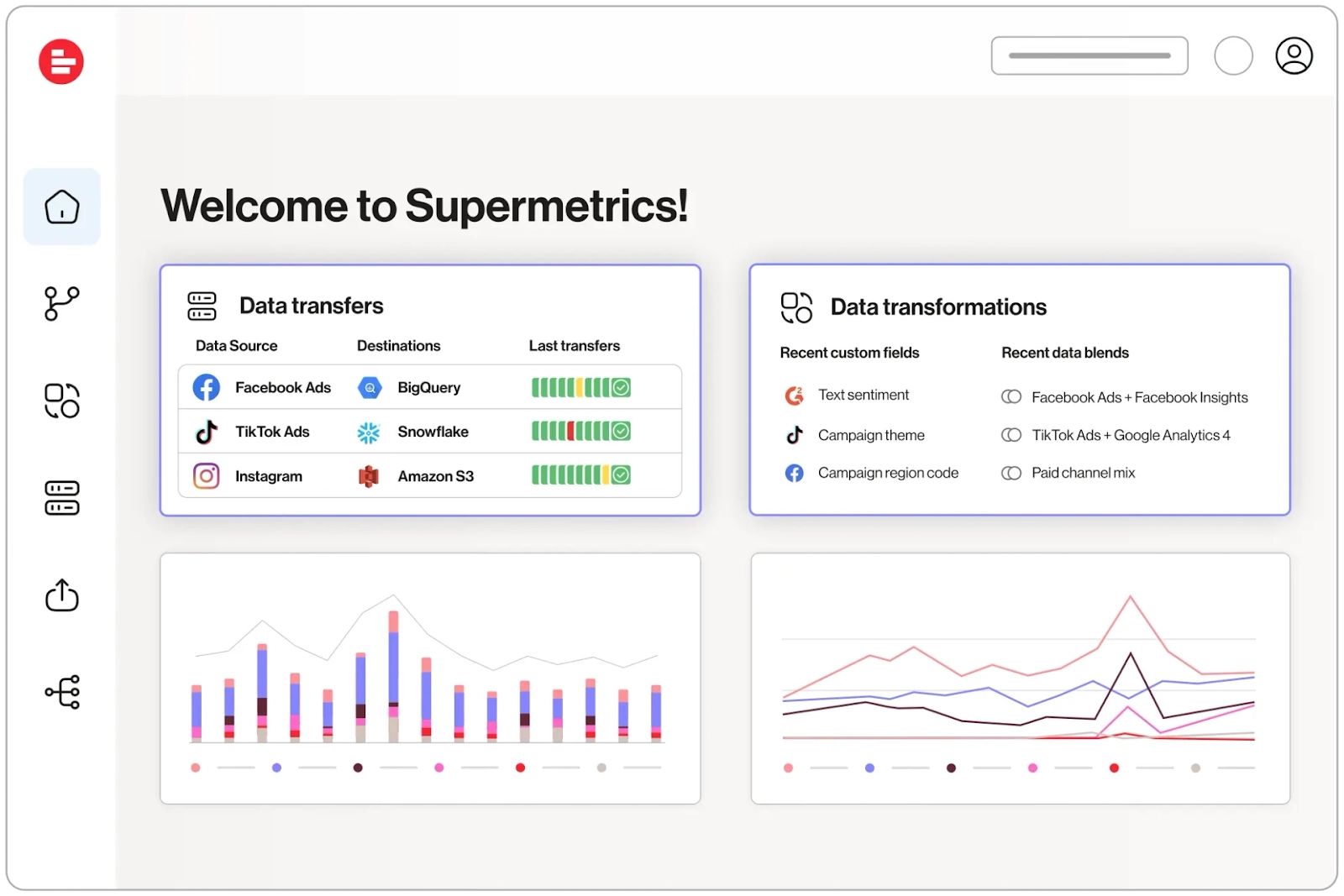
- B2B marketing teams can pull data from 100+ sources like Google Ads, LinkedIn Ads, HubSpot, and Salesforce into Google Sheets, Excel, Looker Studio, or your data warehouse.
- The platform automates scheduled data refreshes so reports and dashboards always stay up to date without manual exports.
- You’ll be able to standardize and blend cross-channel metrics, making it easier to compare campaign performance across platforms.
Pricing
Supermetrics pricing depends on the destination (e.g., Google Sheets, Excel, BigQuery) and the number of data sources connected.
There are 4 primary options:
Supermetrics offers tiered plans based on team size, number of data sources, and reporting needs. All plans are billed annually (with a 20% savings vs. monthly billing).
- Starter Plan: From €29/month, and includes 1 core destination (Looker Studio, Google Sheets, Excel, or Power BI), 3 data sources, 1 user, and weekly automated refreshes.
- Growth Plan: From €159/month, and includes 1 core destination, 7 data sources, 2 users, daily refreshes, plus access to data transformations and custom data import.
- Pro Plan: From €399/month, and includes 1 core destination, 10 data sources, 3 users, hourly refreshes, advanced transformations, and Supermetrics Storage (as an add-on).
- Business Plan: Custom pricing, and includes all core and warehouse destinations (BigQuery, Snowflake, etc.), unlimited data sources and accounts, on-demand refreshes, enterprise SSO, API access, and premium support.
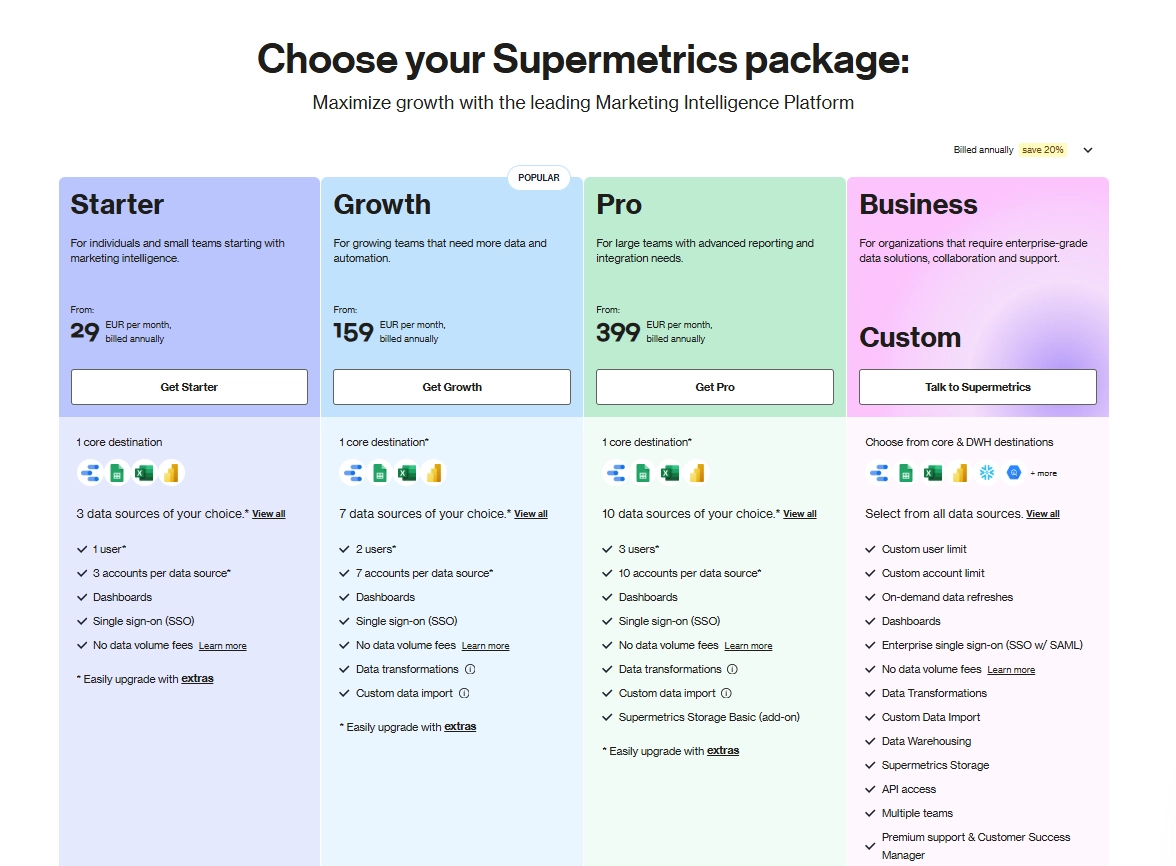
✅ All plans include dashboards, no data volume fees, and the option to add extra users, sources, or accounts (although billed separately).
Pros & Cons
✅ Can save your B2B marketing team time by automating cross-platform reporting.
✅ Supports a wide range of integrations, covering both advertising, SEO and CRM data sources.
✅ Flexible deployment options (spreadsheets, BI tools, warehouses) to match your analytics stack.
❌ Costs can add up quickly if you need many connectors or destinations.
❌ Requires some data literacy, as the raw data setup may feel complex for non-analysts.
#8: Website Personalization Tools
Webflow Optimize
Best for: Marketing teams on Webflow looking to run A/B tests and deliver personalized content.
Similar to: Mutiny.
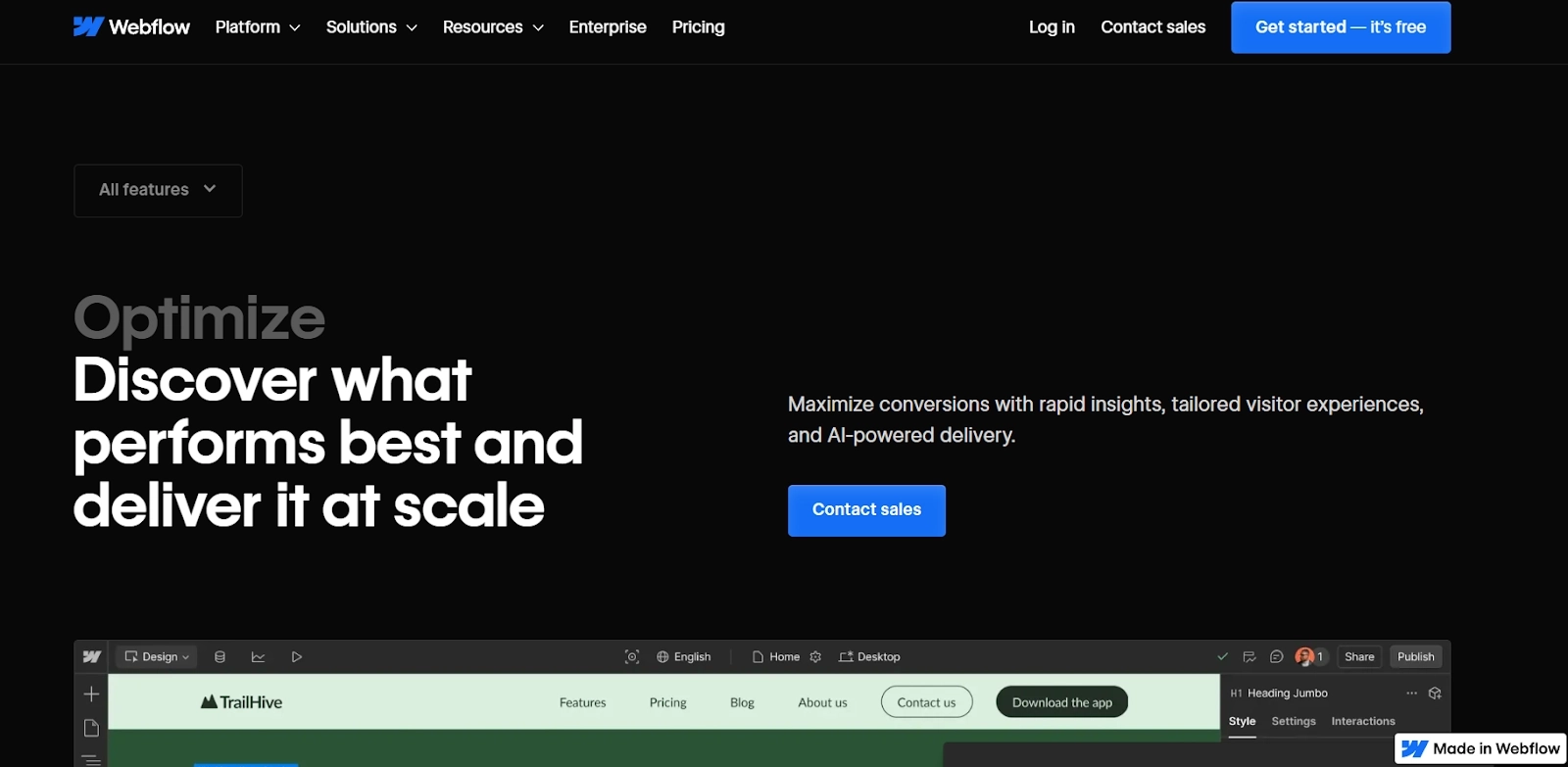
Webflow Optimize offers a powerful AI-enhanced experimentation and personalization engine that helps marketing teams rapidly test, learn, and deploy high-converting website experiences.
Built into the Webflow platform, it enables marketers to run A/B tests, create targeted experiences, and deliver personalized content without waiting on developers.
Features
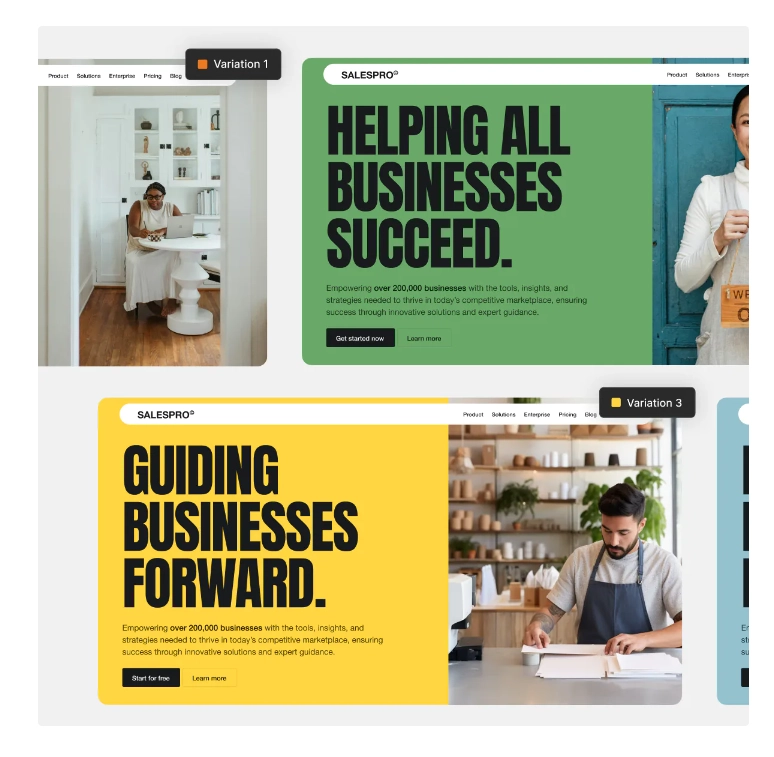
- You’ll be able to target different visitor segments with tailored content, messaging, CTAs, and offers in real-time.
- Run multivariate tests on everything from headlines to navigation flows, with instant insights into what resonates best.
- Easily manage multiple tests across your site, from small copy tweaks to major UX changes, with centralized control and AI-enhanced performance tracking.
Pricing
Webflow Optimize is available as an add-on to one of Webflow’s essential pricing plans (their cost starts at $14/month and can go up to $39/month).
The pricing for Optimize starts at $299/month, but the overall cost will depend on both the Optimize features you need and the Webflow base plan you’re subscribed to.
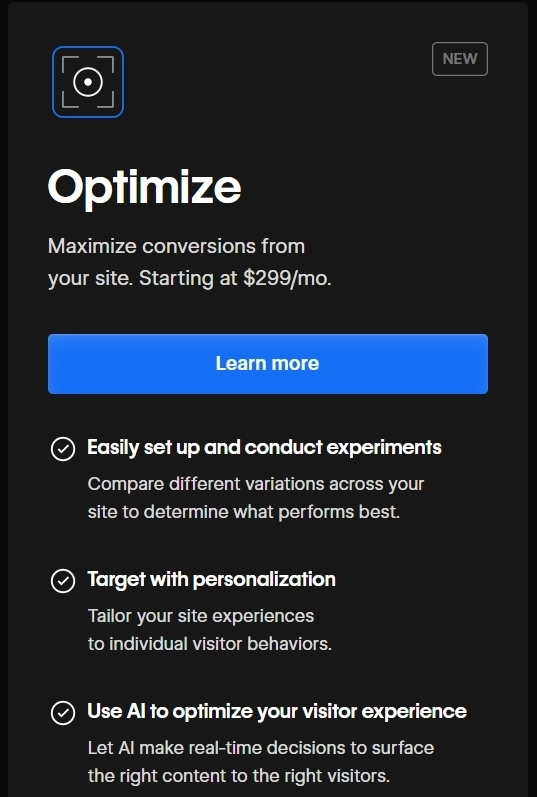
Pros & Cons
✅ Enables no-code A/B testing and personalization directly within Webflow, reducing reliance on developers.
✅ AI-powered optimization automatically serves the best-performing variation to maximize conversions.
✅ Runs natively on Webflow’s infrastructure, which means avoiding performance slowdowns that are common with third-party tools.
❌ Limited to Webflow sites (it’s not a cross-platform CRO solution).
❌ Pricing can be expensive for smaller teams.
Mutiny
Best for: B2B marketing teams that want to personalize website experiences at scale to increase conversions and pipeline.
Similar to: Webflow Optimize.

Mutiny offers a no-code AI platform that helps performance marketing teams personalize website experiences at scale.
The platform is built for B2B brands looking to deliver account-level or firmographic-based messaging by adapting headlines, CTA buttons, visuals, and page layouts to each visitor’s profile.
Features

- Automatically generates customized landing pages for high-value accounts using AI-based theming and content adaptation.
- Get tailored headlines and messaging prompts based on audience segment, saving time and boosting relevance.
- The platform lets you test variants with automatic hold-outs and track engagement, pipeline, and conversion lift by segment.
Pricing
Mutiny doesn’t disclose product prices, so you’ll have to book a demo or contact its team to get more details.

Pros & Cons
✅ The tool enables no-code website personalization, letting marketers launch tailored experiences without developer support.
✅ AI-powered recommendations to help you identify high-value audience segments.
✅ Native integrations with Salesforce, HubSpot, and other CRM/ABM platforms.
❌ Pricing is enterprise-level and not transparent.
❌ Works best for B2B companies with significant website traffic.
Build out your B2B MarTech stack with Warmly as its engine
If your marketing team is serious about scaling your outbound and nurturing inbound while aligning with sales, Warmly is one of the smartest, most intent-driven ABM platforms out there, with the best data that is regularly updated.
Here’s what else you’ll get by signing up for Warmly:
- The ability to identify potential buyers by tracking their interactions with your website and getting insights into their interest level.
- A wide range of accurate prospect contact details, directly from the Coldly database, helping you reach the right people.
- Simplify your meeting process with automatic meeting scheduling that removes the back-and-forth, ensuring a frictionless booking experience.
- Automatically send leads to the right salesperson and notify them via Slack if a high-intent lead is active on your website.
- A Bombora integration that helps you proactively reach out to your warm leads and track who’s researching terms relevant to your product and brand, and get in front of them before your competitors do.
- Automate the search for high-potential prospects using AI technology, ensuring your sales team focuses on the right opportunities.
Book a live demo to see it in action first.
Read More
- AI for Sales Prospecting: How to Use It? [2025] - Learn how AI is being used for sales prospecting in 2025 and discover the best AI-powered platforms for it.
- AI Marketing Agents: Use Cases and Top Tools for 2025 - Wondering what AI marketing agents are and how to best implement them? You’ll find all the info you need in this detailed guide.
- AI in Sales and Marketing: How to Get More Sales? - AI can help you close more deals before you know it - learn how.
- Best 10 AI Sales Agents In 2025 [Reviewed] - Need a sales agent that never sleeps? Find the one that best fits your use case in our in-depth review.
- AI Email Marketing: How To Use It In 2025? - Want to improve open, reply, and click-through rates? AI can help you master the art of email marketing - find out how to leverage it for optimal results.
- 10 Best AI Sales Tools for B2B Teams [2025] - Shortlist of the top 10 AI-powered sales tools to help you find more high-quality leads and close more deals.



